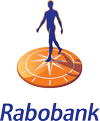Overview of BI Tools for Data Analytics
Click on one of the names to learn more about the BI tools you want to know more about. Or consult the Business Intelligence & Analytics Guide™ 2024 for an objective comparison of all these parties to quickly decide on the best BI tool for your organization. The list of tools is sorted alphabetically. Passionned Group is 100% independent, and therefore in no way affiliated with the vendors of the tools.
1. Alteryx
 Alteryx is widely known for its products Alteryx Designer, Alteryx Server, Alteryx Analytics, Alteryx Connect and Alteryx Intelligence Suite. The company is 100% specialized in BI & Analytics. Take a look at the images below. The Business Intelligence tools from Alteryx are strong in the following areas, among others:
Alteryx is widely known for its products Alteryx Designer, Alteryx Server, Alteryx Analytics, Alteryx Connect and Alteryx Intelligence Suite. The company is 100% specialized in BI & Analytics. Take a look at the images below. The Business Intelligence tools from Alteryx are strong in the following areas, among others:
- analytics
- generative AI
- machine learning
- cloud platform
- data science
- analysis
- Python
- artificial intelligence
- text mining
- advanced analytics
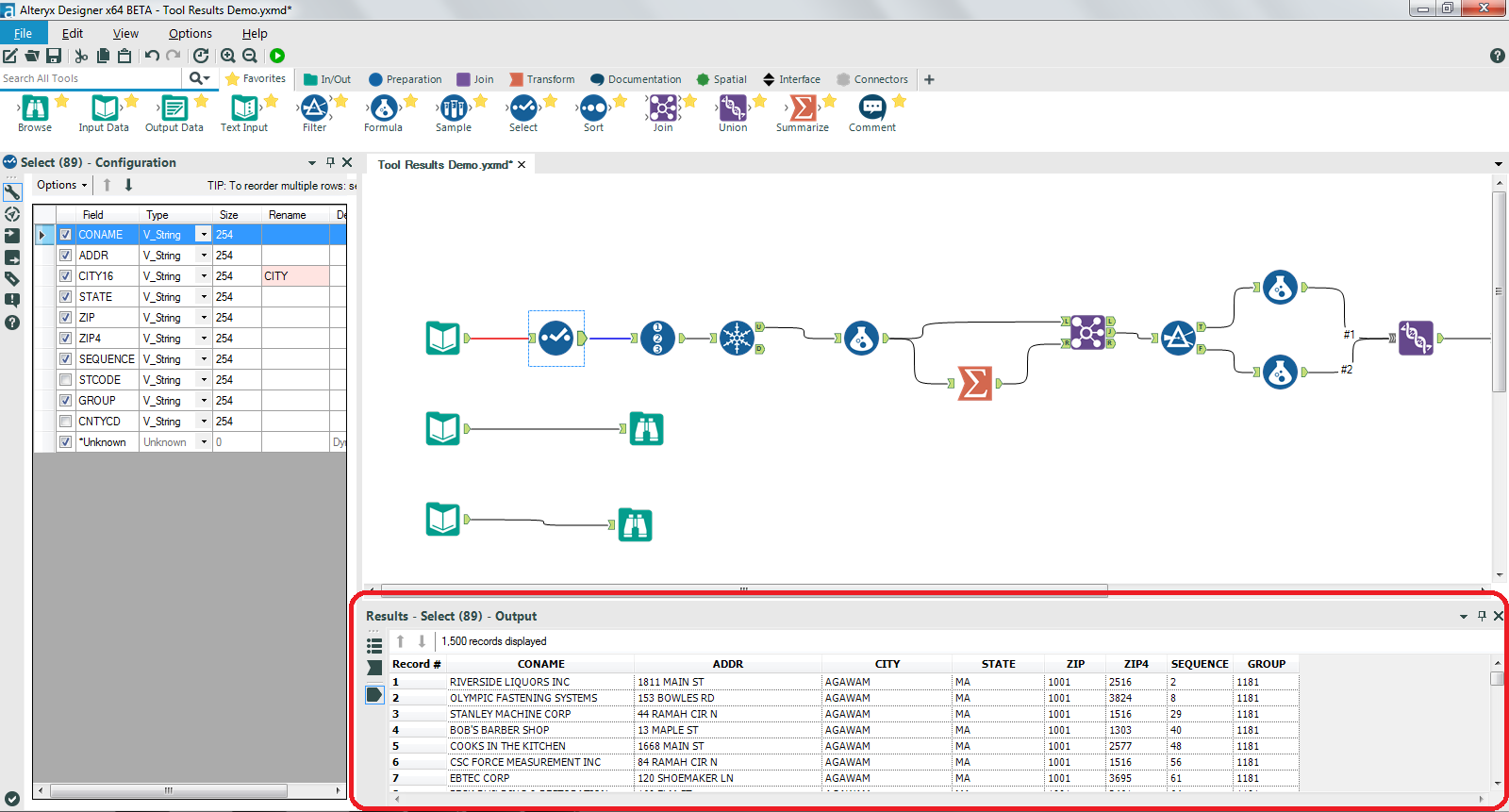 Figure 1: Alteryx Designer
Figure 1: Alteryx Designer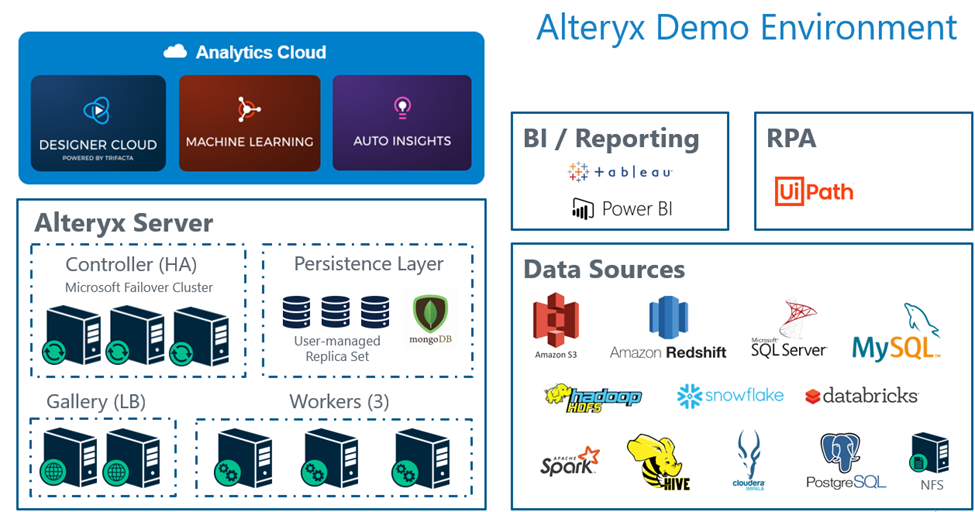 Figure 2: Alteryx Server
Figure 2: Alteryx Server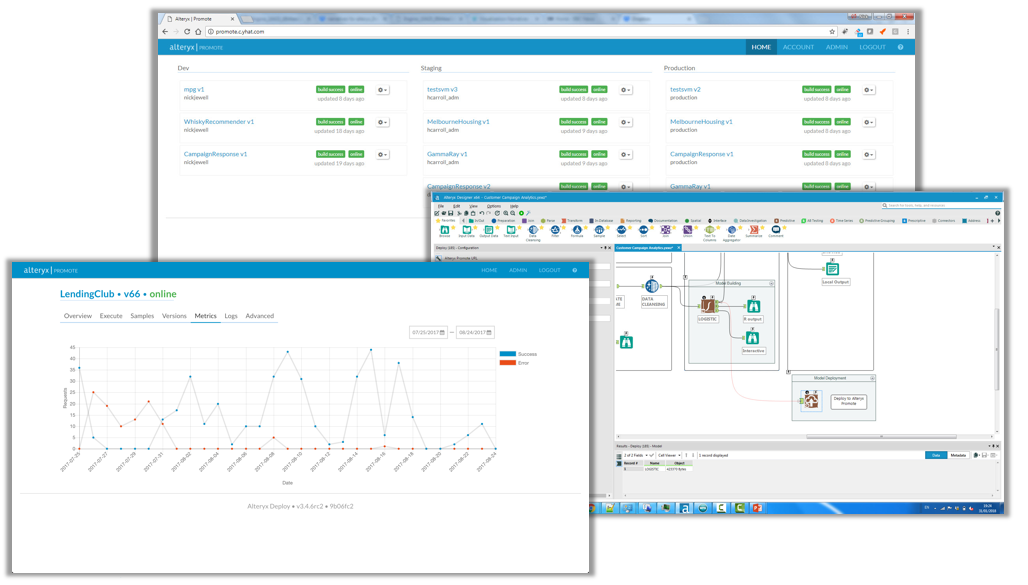 Figure 3: Alteryx Analytics
Figure 3: Alteryx Analytics2. datapine
 As far as we have been able to ascertain, datapine currently has only one primary product: datapine BI. Take a look at the screen shots below. The Business Intelligence tools from datapine are strong in the following areas, among others:
As far as we have been able to ascertain, datapine currently has only one primary product: datapine BI. Take a look at the screen shots below. The Business Intelligence tools from datapine are strong in the following areas, among others:
- business intelligence
- analytics
- data visualization
- dashboards
- SaaS
- SQL
- analysis
- machine learning
- interactive dashboards
- reporting
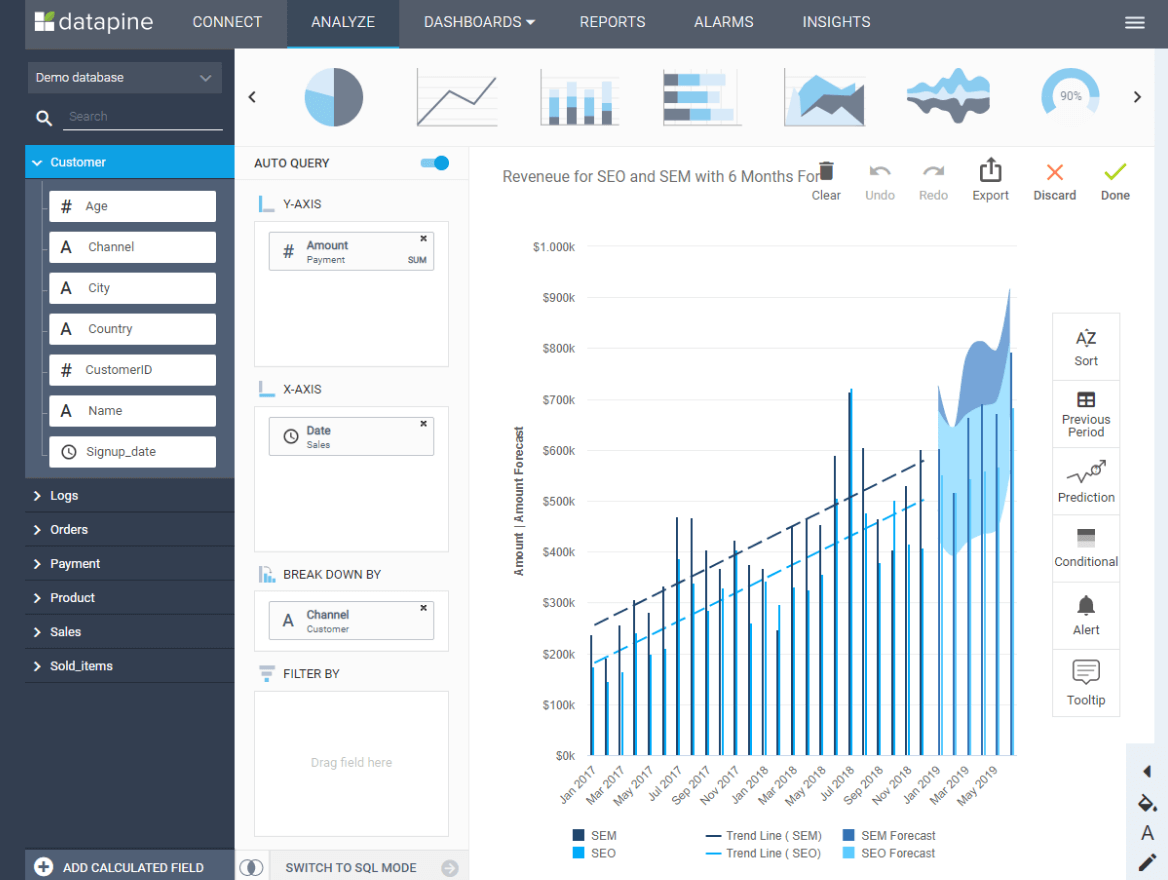 Figure 4: datapine BI
Figure 4: datapine BI Figure 5: datapine BI
Figure 5: datapine BI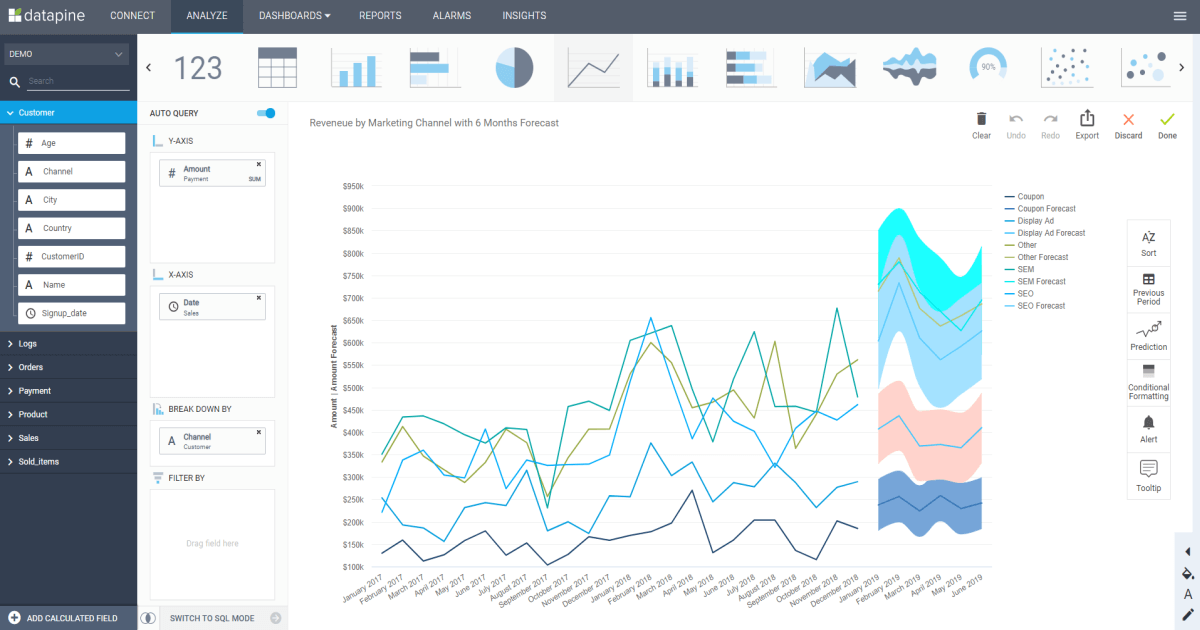 Figure 6: datapine BI
Figure 6: datapine BI3. DataRobot
 DataRobot is widely known for its products DataRobot Artificial Intelligence, DataRobot Core, DataRobot platform, DataRobot AutoML and DataRobot MLOps. The company is 100% specialized in BI & Analytics. Take a look at the images below. The Business Intelligence tools from DataRobot are strong in the following areas, among others:
DataRobot is widely known for its products DataRobot Artificial Intelligence, DataRobot Core, DataRobot platform, DataRobot AutoML and DataRobot MLOps. The company is 100% specialized in BI & Analytics. Take a look at the images below. The Business Intelligence tools from DataRobot are strong in the following areas, among others:
- artificial intelligence
- Python
- automated machine learning
- generative AI
- machine learning models
- reporting
- R
- repository
- data science
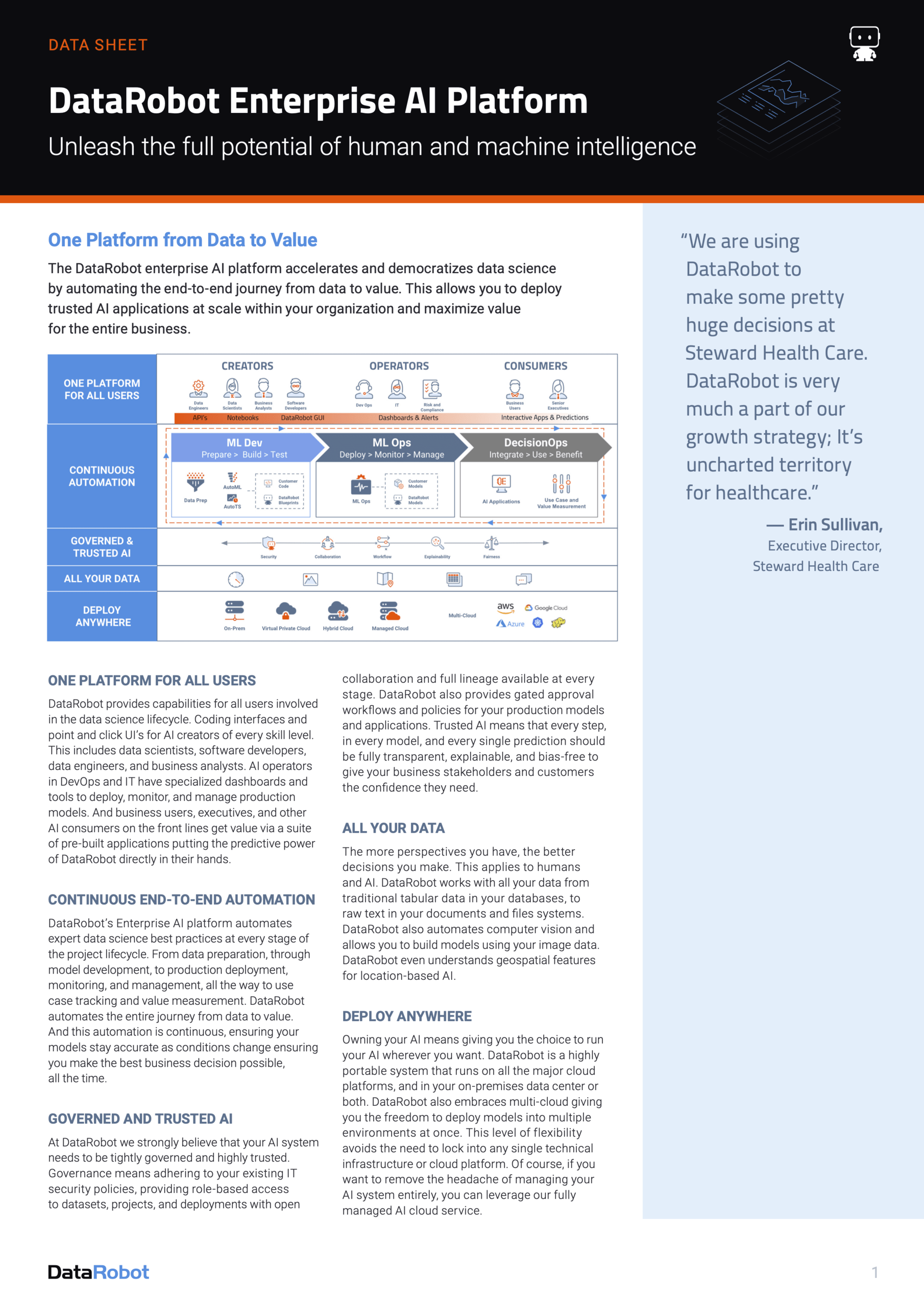 Figure 7: DataRobot Artificial Intelligence
Figure 7: DataRobot Artificial Intelligence Figure 8: DataRobot Core
Figure 8: DataRobot Core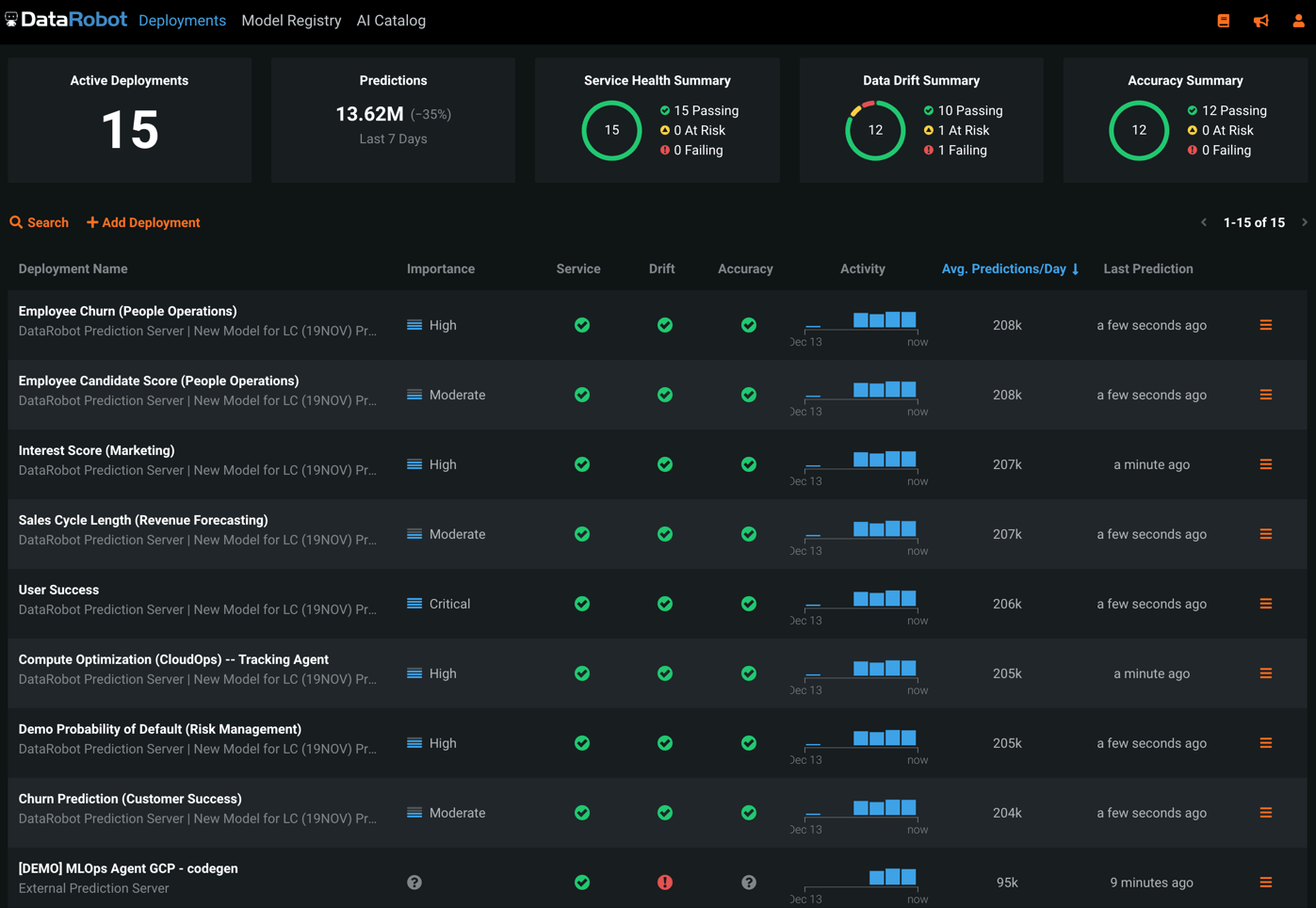 Figure 9: DataRobot platform
Figure 9: DataRobot platform4. Domo

- data science
- business intelligence
- analytics
- data visualization
- dashboards
- reporting
- machine learning
- real-time data
- analysis
 Figure 10: Domo Platform
Figure 10: Domo Platform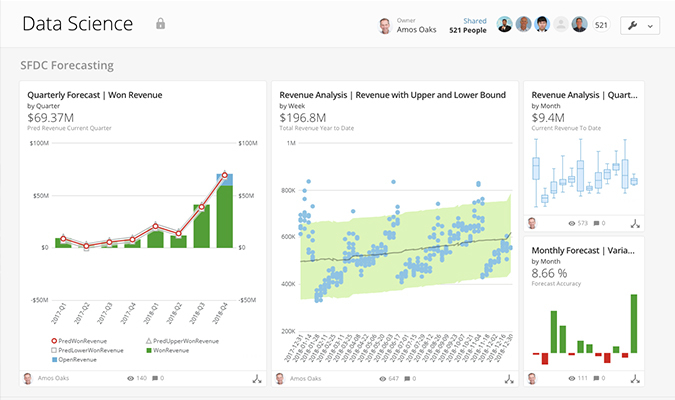 Figure 11: Domo Data Science
Figure 11: Domo Data Science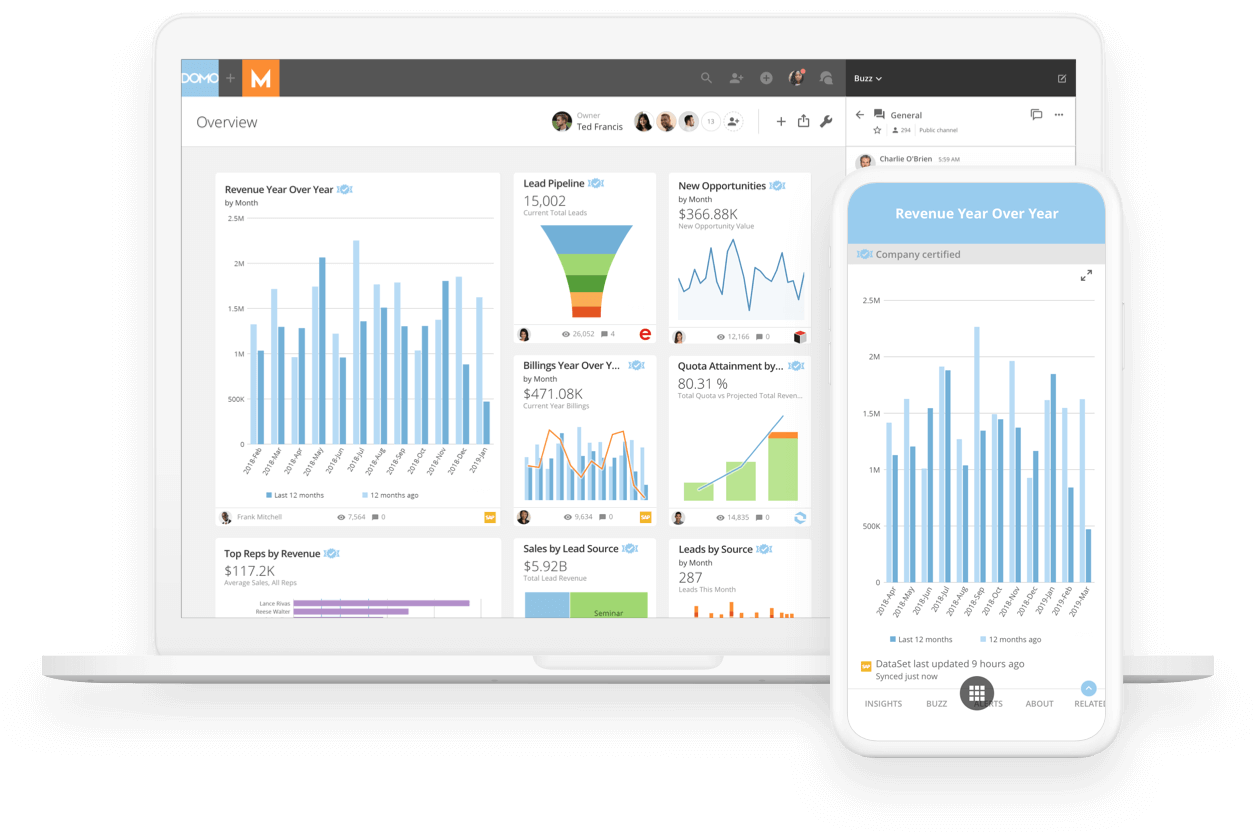 Figure 12: Domo Business Intelligence
Figure 12: Domo Business Intelligence5. Dundas
 The most well-known products in the area of BI & Analytics of the company Dundas are Dundas Data Visualization, Dundas Dashboard and Dundas BI Data Flow. We analyzed and evaluated these BI & Analytics products in depth and meticulously. The Business Intelligence tools from Dundas can be characterized by good support on the following topics:
The most well-known products in the area of BI & Analytics of the company Dundas are Dundas Data Visualization, Dundas Dashboard and Dundas BI Data Flow. We analyzed and evaluated these BI & Analytics products in depth and meticulously. The Business Intelligence tools from Dundas can be characterized by good support on the following topics:
- data visualization
- business intelligence
- dashboards
- reporting
- analytics platform
- embedded analytics
- analysis
- Microsoft Excel
- performance management
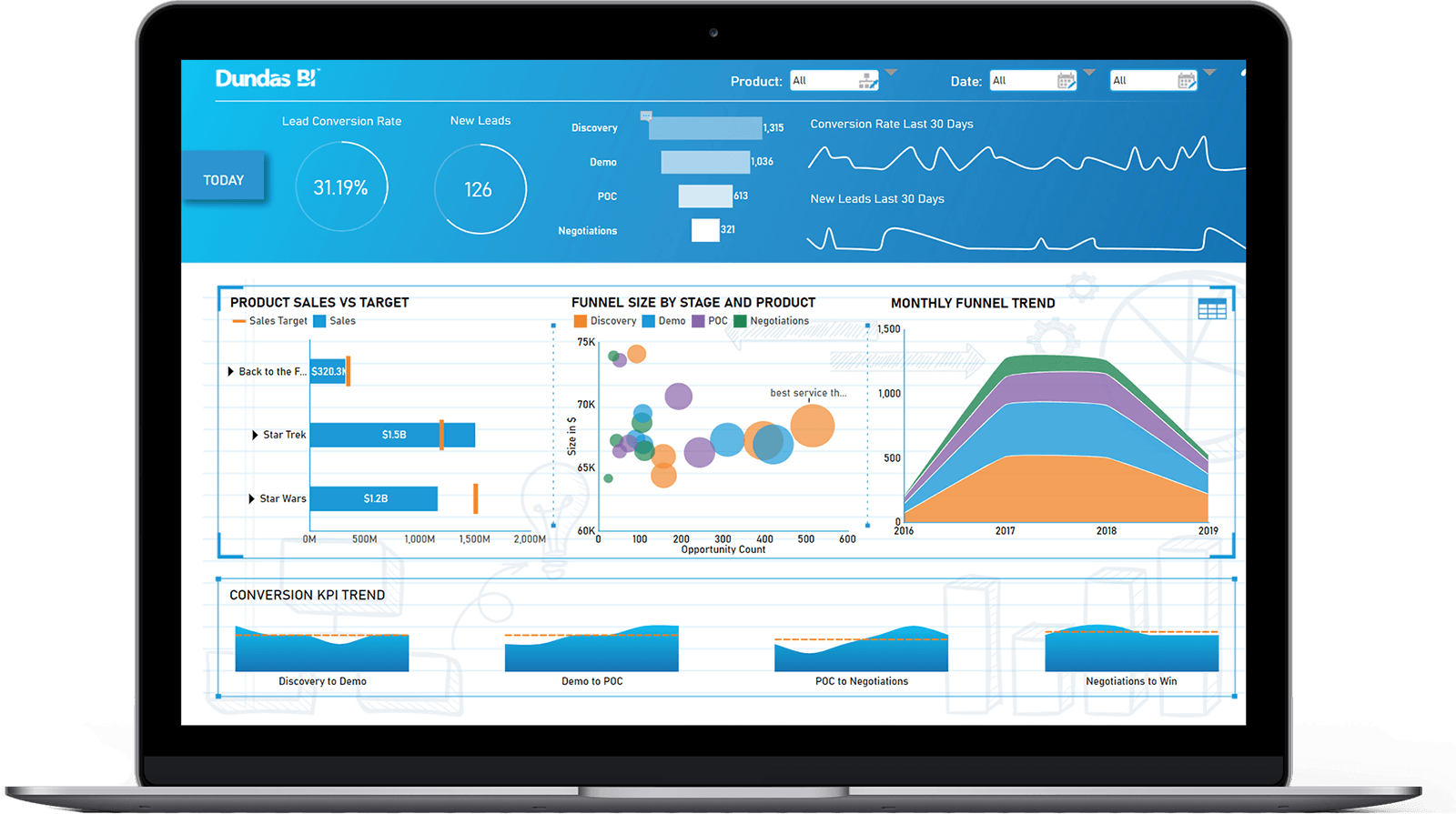 Figure 13: Dundas BI
Figure 13: Dundas BI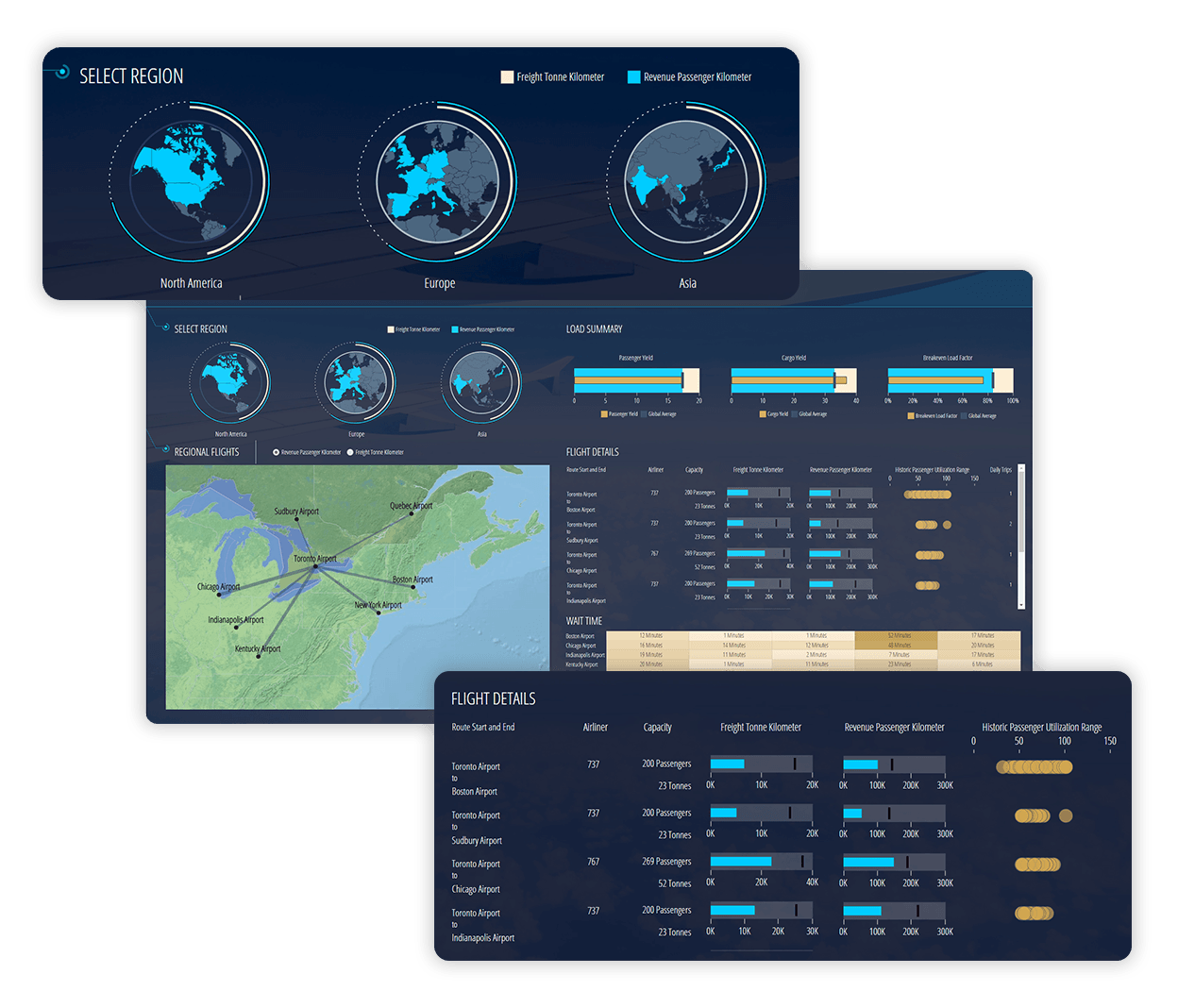 Figure 14: Dundas Data Visualization
Figure 14: Dundas Data Visualization Figure 15: Dundas Dashboard
Figure 15: Dundas Dashboard6. GoodData
 As far as we have been able to ascertain, GoodData currently has only one primary product: GoodData Platform. Take a look at the screen shots below. The Business Intelligence tools from GoodData are strong in the following areas, among others:
As far as we have been able to ascertain, GoodData currently has only one primary product: GoodData Platform. Take a look at the screen shots below. The Business Intelligence tools from GoodData are strong in the following areas, among others:
- dashboards
- Slack
- data visualization
- java
- SDK
- scalability
- CSV
- analytics platform
- caching
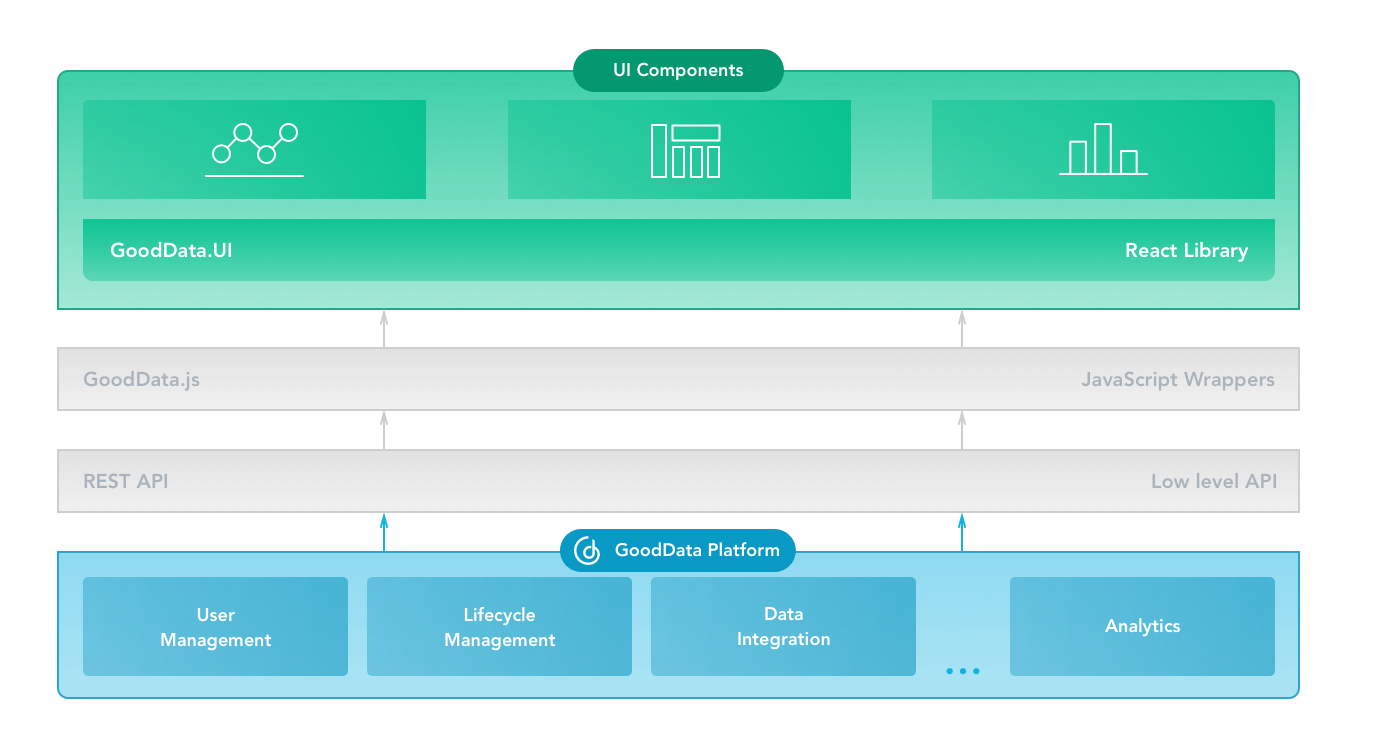 Figure 16: GoodData Platform
Figure 16: GoodData Platform Figure 17: GoodData Platform
Figure 17: GoodData Platform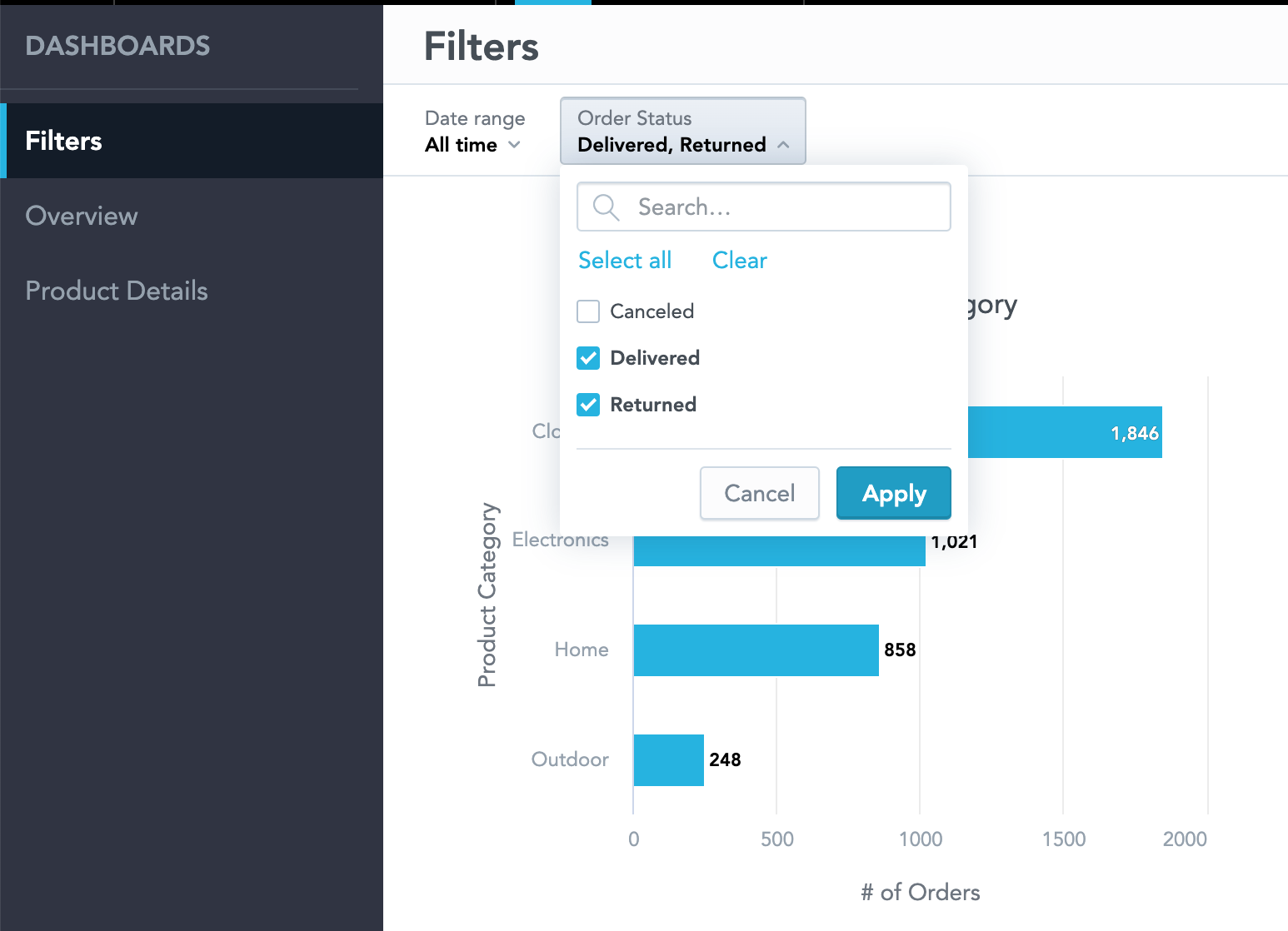 Figure 18: GoodData Platform
Figure 18: GoodData Platform7. IBM BI & Analytics
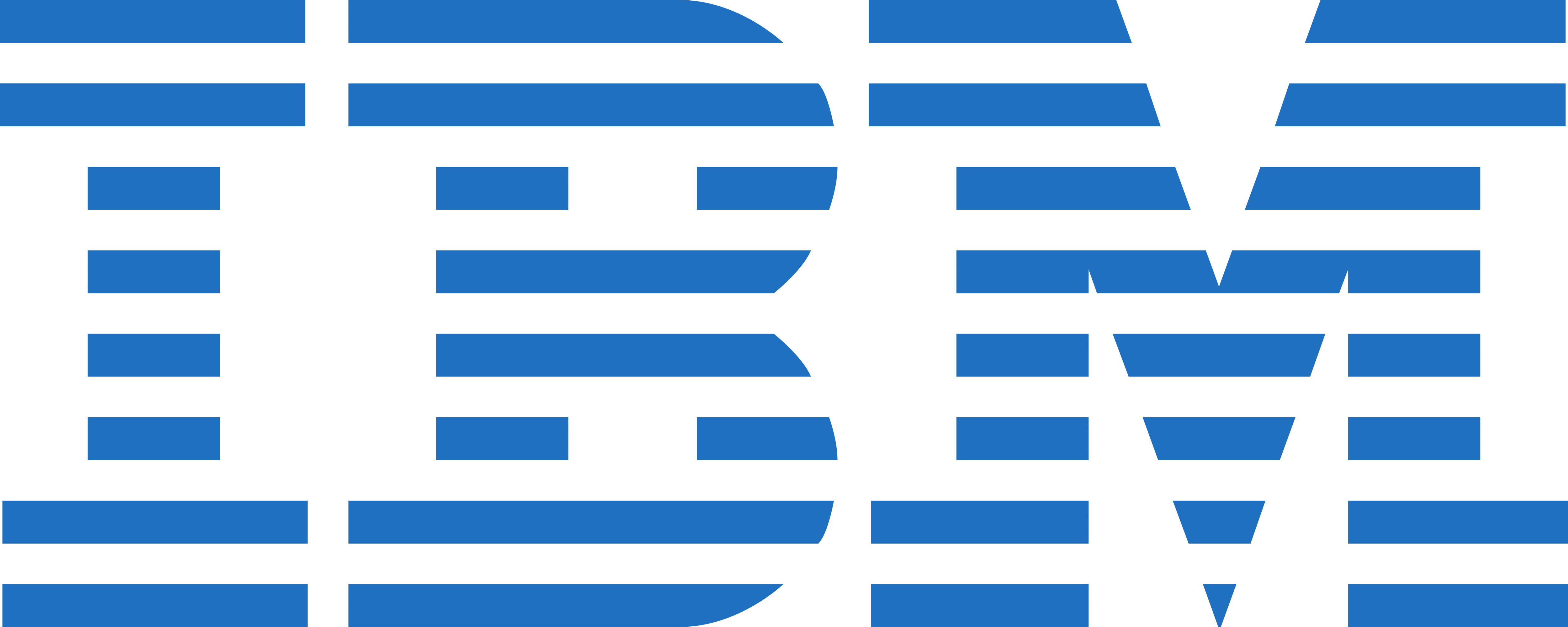 IBM is widely known for its products Cognos Analytics, IBM SPSS, IBM Watson, IBM Infosphere and Netezza. Take a look at the images below. The Business Intelligence tools from IBM are strong in the following areas, among others:
IBM is widely known for its products Cognos Analytics, IBM SPSS, IBM Watson, IBM Infosphere and Netezza. Take a look at the images below. The Business Intelligence tools from IBM are strong in the following areas, among others:
- analytics
- analysis
- real-time
- cube
- IBM Netezza
- OLAP
- reporting
- natural language processing
- predictive analytics
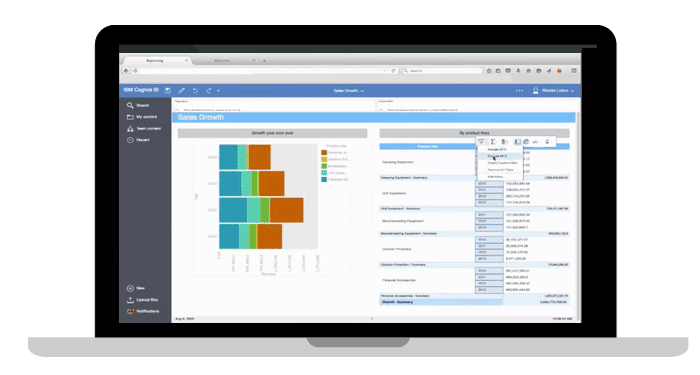 Figure 19: Cognos Analytics
Figure 19: Cognos Analytics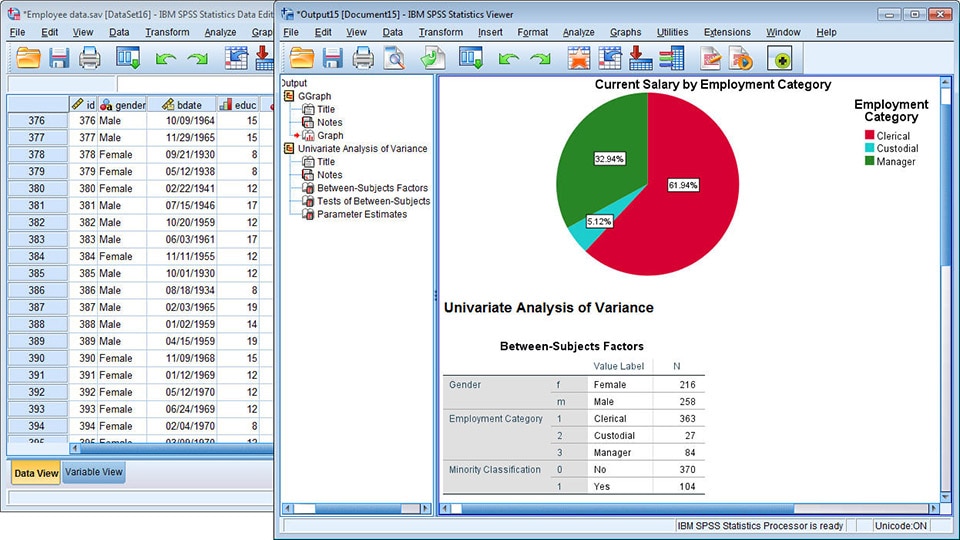 Figure 20: IBM SPSS
Figure 20: IBM SPSS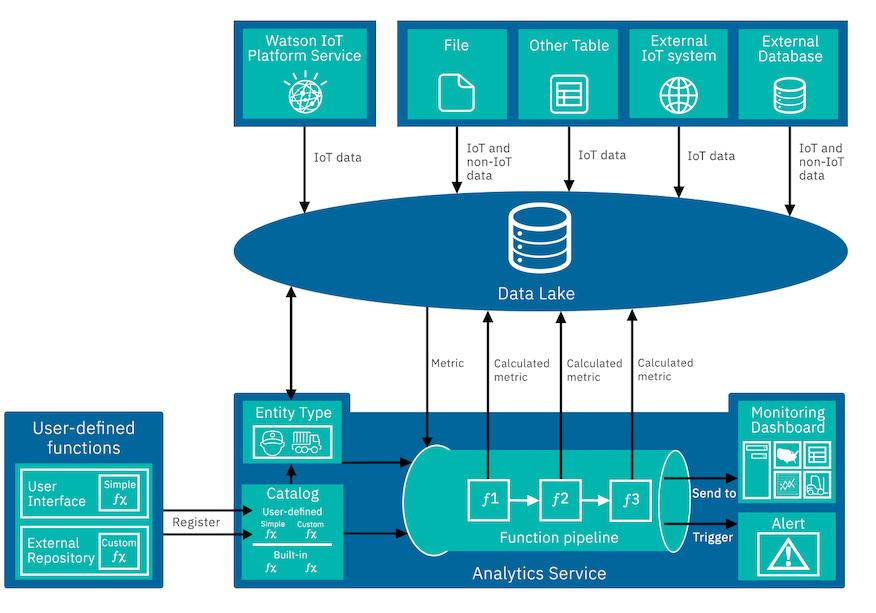 Figure 21: IBM Watson
Figure 21: IBM Watson8. Incorta
 The most well-known products in the area of BI & Analytics of the company Incorta are Incorta Analytics and Incorta analyzer. We analyzed and evaluated these BI & Analytics products in depth and meticulously. The Business Intelligence tools from Incorta can be characterized by good support on the following topics:
The most well-known products in the area of BI & Analytics of the company Incorta are Incorta Analytics and Incorta analyzer. We analyzed and evaluated these BI & Analytics products in depth and meticulously. The Business Intelligence tools from Incorta can be characterized by good support on the following topics:
- analytics platform
- reporting
- dashboards
- SDK
- analysis
- real-time
- KPI
- business intelligence
- data hub
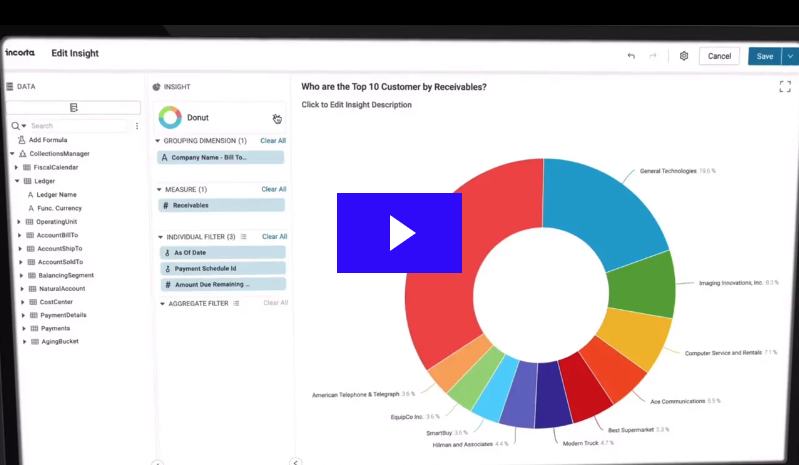 Figure 22: Incorta Analytics
Figure 22: Incorta Analytics Figure 23: Incorta Analytics
Figure 23: Incorta Analytics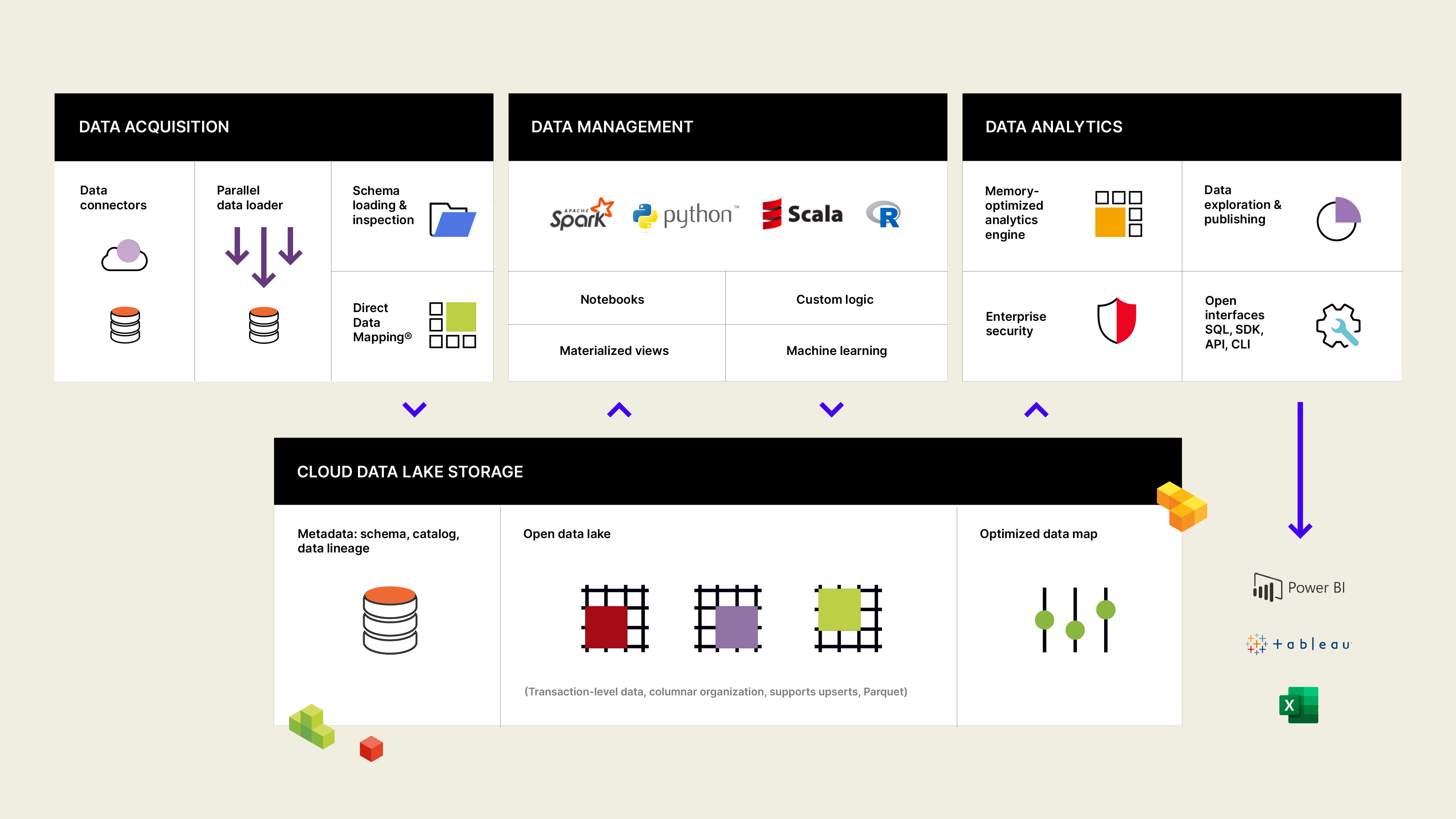 Figure 24: Incorta Analytics
Figure 24: Incorta Analytics9. InetSoft
![]() InetSoft is widely known for its products InetSoft Style Intelligence, InetSoft Business Intelligence, InetSoft Data Intelligence, InetSoft Style Studio and InetSoft Data Cleansing. The company is 100% specialized in BI & Analytics. Take a look at the images below. The Business Intelligence tools from InetSoft are strong in the following areas, among others:
InetSoft is widely known for its products InetSoft Style Intelligence, InetSoft Business Intelligence, InetSoft Data Intelligence, InetSoft Style Studio and InetSoft Data Cleansing. The company is 100% specialized in BI & Analytics. Take a look at the images below. The Business Intelligence tools from InetSoft are strong in the following areas, among others:
- business intelligence
- analytics
- reporting
- dashboards
- cloud computing
- big data
- data modeling
- analysis
- machine learning
- data discovery
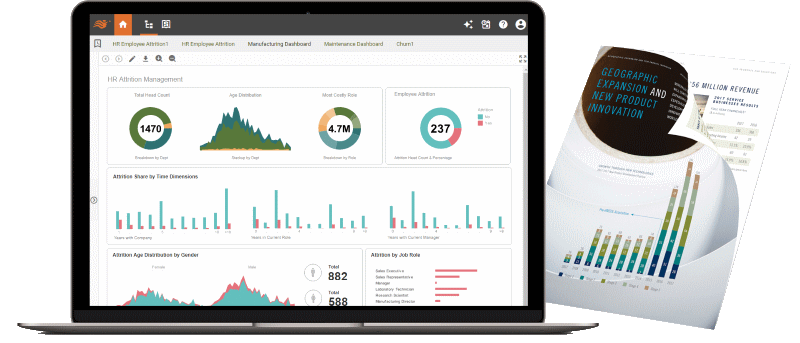 Figure 25: InetSoft Style Intelligence
Figure 25: InetSoft Style Intelligence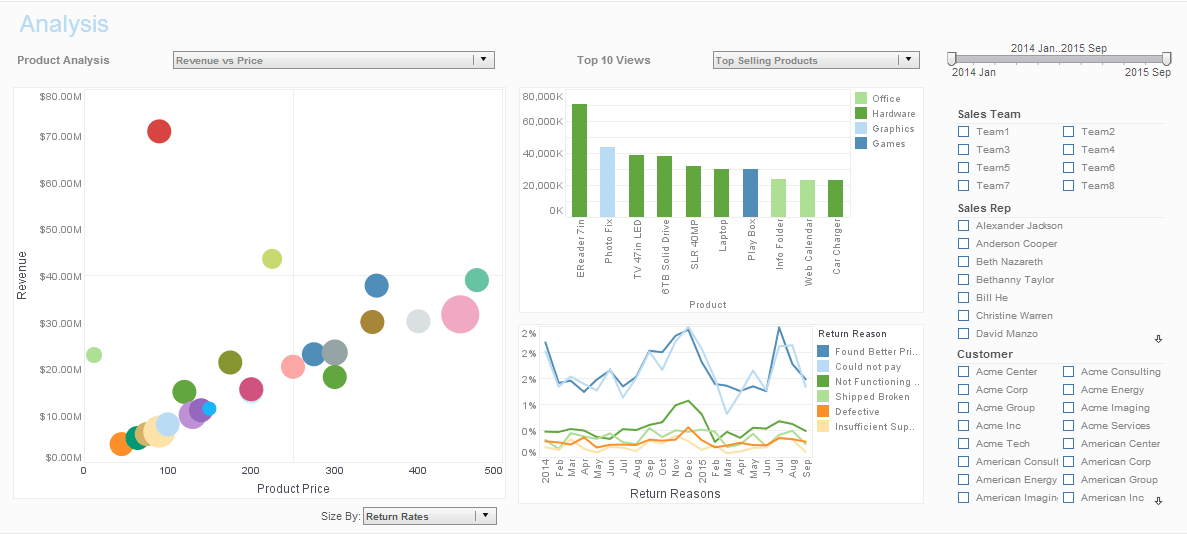 Figure 26: InetSoft Business Intelligence
Figure 26: InetSoft Business Intelligence10. Infor BI & Analytics
 Infor is widely known for its products Infor Birst, Infor BI, Infor Landmark and Infor Coleman AI. Take a look at the images below. The Business Intelligence tools from Infor are strong in the following areas, among others:
Infor is widely known for its products Infor Birst, Infor BI, Infor Landmark and Infor Coleman AI. Take a look at the images below. The Business Intelligence tools from Infor are strong in the following areas, among others:
- analytics
- reporting
- business intelligence
- dashboards
- performance management
- IoT
- machine learning
- sales analytics
- analysis
- supply chain analytics
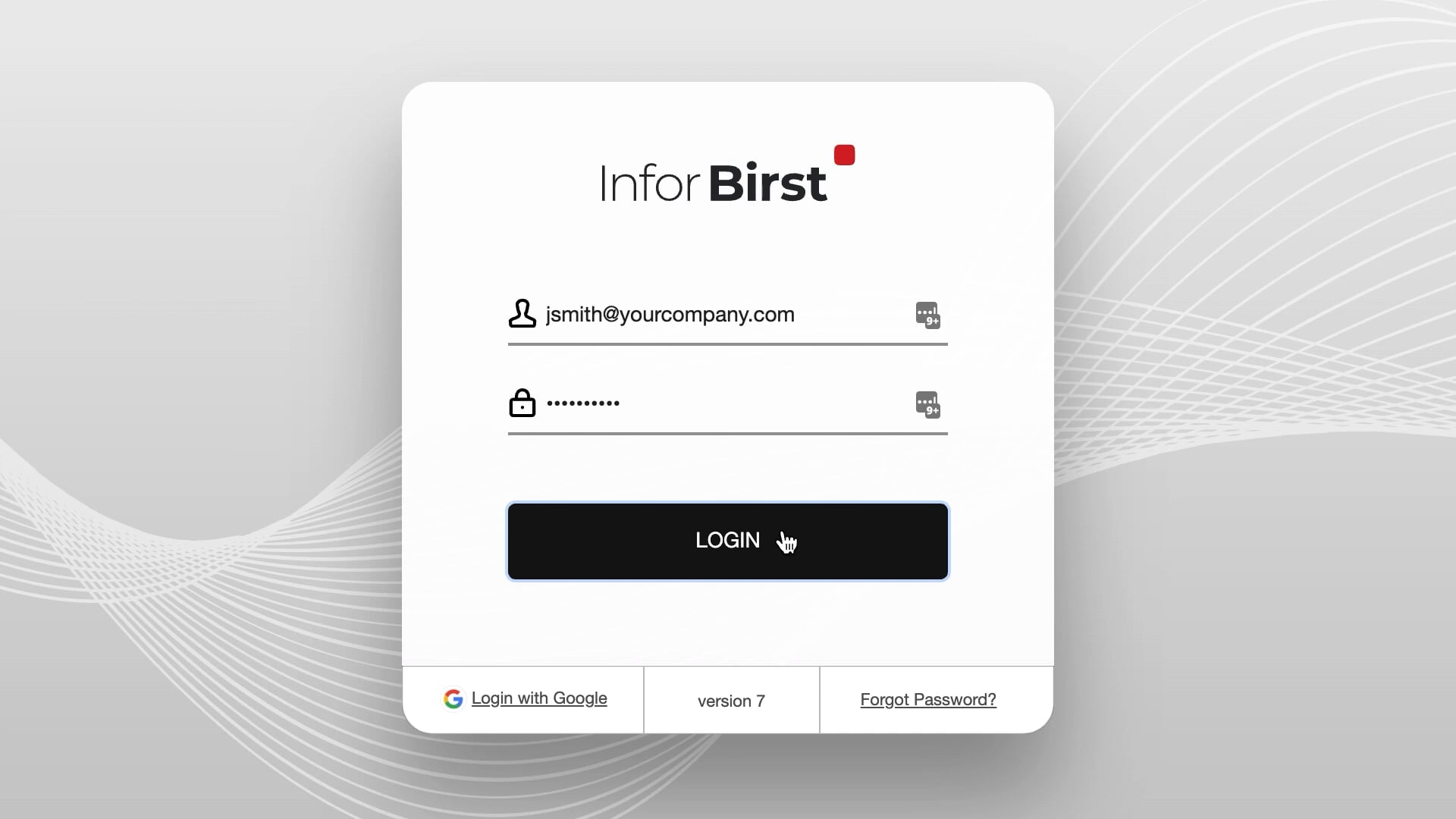 Figure 28: Infor Birst
Figure 28: Infor Birst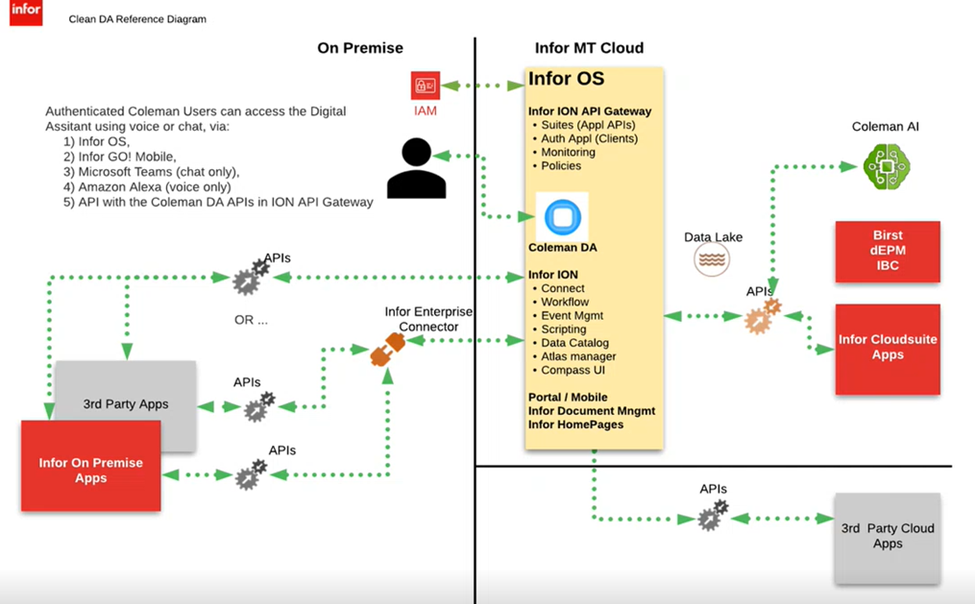 Figure 29: Infor Coleman
Figure 29: Infor Coleman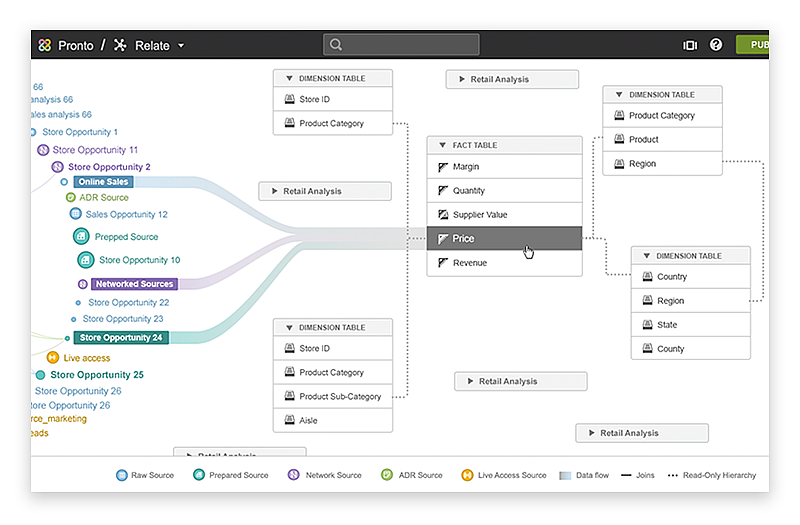 Figure 30: Infor BI
Figure 30: Infor BI11. insightssoftware BI & Analytics
 The most well-known products in the area of BI & Analytics of the company insightssoftware are Logi Info, Logi Composer, Logi Report Server, Logi Predict and Logi Report Designer. We analyzed and evaluated these BI & Analytics products in depth and meticulously. The Business Intelligence tools from insightssoftware can be characterized by good support on the following topics:
The most well-known products in the area of BI & Analytics of the company insightssoftware are Logi Info, Logi Composer, Logi Report Server, Logi Predict and Logi Report Designer. We analyzed and evaluated these BI & Analytics products in depth and meticulously. The Business Intelligence tools from insightssoftware can be characterized by good support on the following topics:
- analytics platform
- reporting
- predictive analytics
- embedded analytics
- dashboards
- java
- Windows
- performance management
- business intelligence
 Figure 31: Logi Info
Figure 31: Logi Info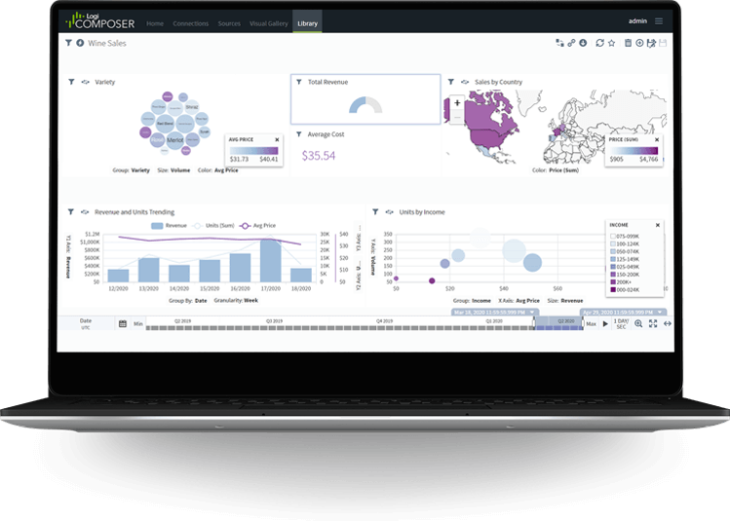 Figure 32: Logi Composer
Figure 32: Logi Composer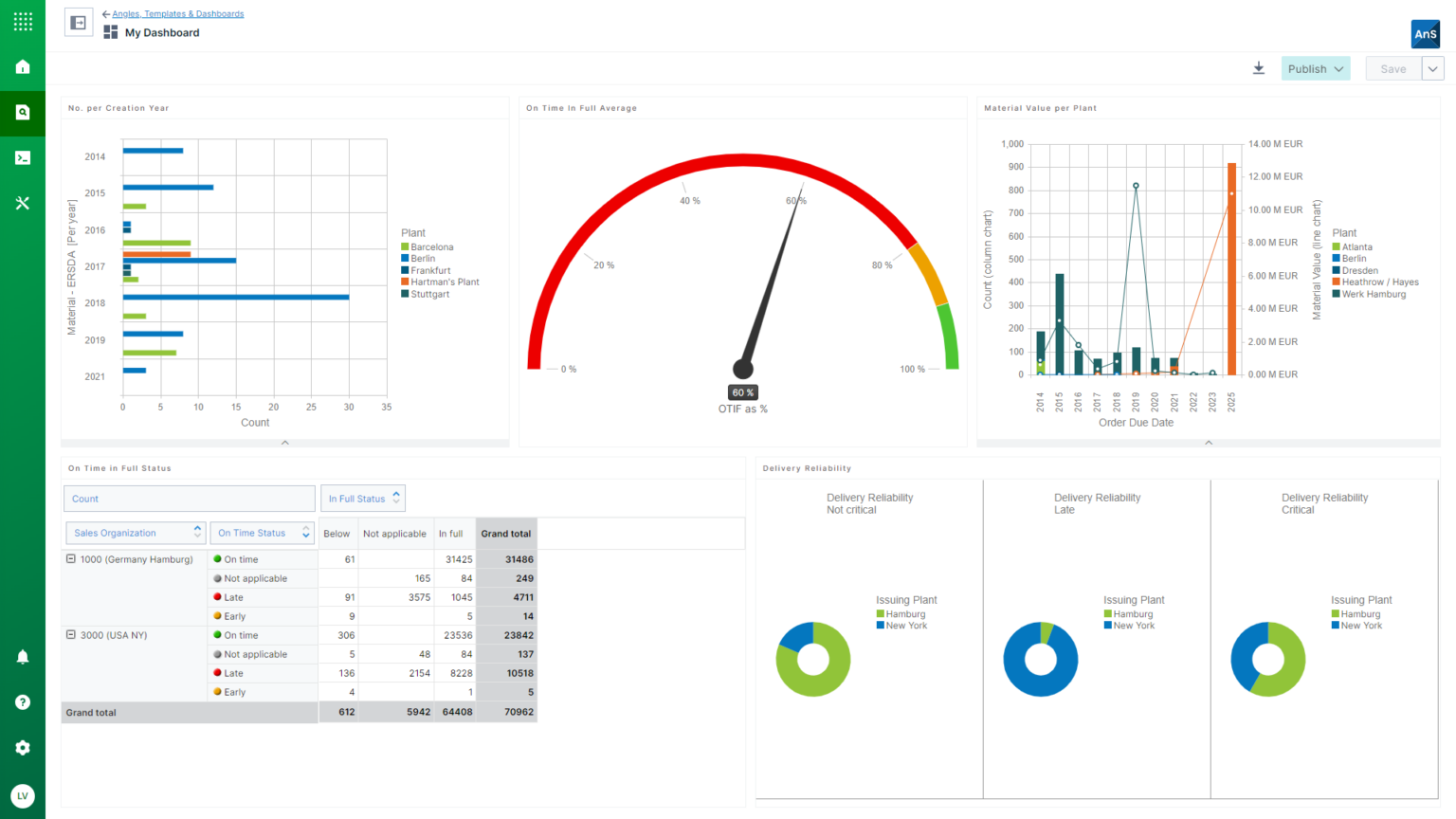 Figure 33: Logi Report Server
Figure 33: Logi Report Server12. Looker
 Looker is widely known for its products Looker Studio, Looker API, LookML Dashboards and Looker Blocks. The company is 100% specialized in BI & Analytics. Take a look at the images below. The Business Intelligence tools from Looker are strong in the following areas, among others:
Looker is widely known for its products Looker Studio, Looker API, LookML Dashboards and Looker Blocks. The company is 100% specialized in BI & Analytics. Take a look at the images below. The Business Intelligence tools from Looker are strong in the following areas, among others:
- analytics
- dashboards
- embedded analytics
- business intelligence
- SQL
- marketing analytics
- web analytics
- data modeling
- SDK
- analysis
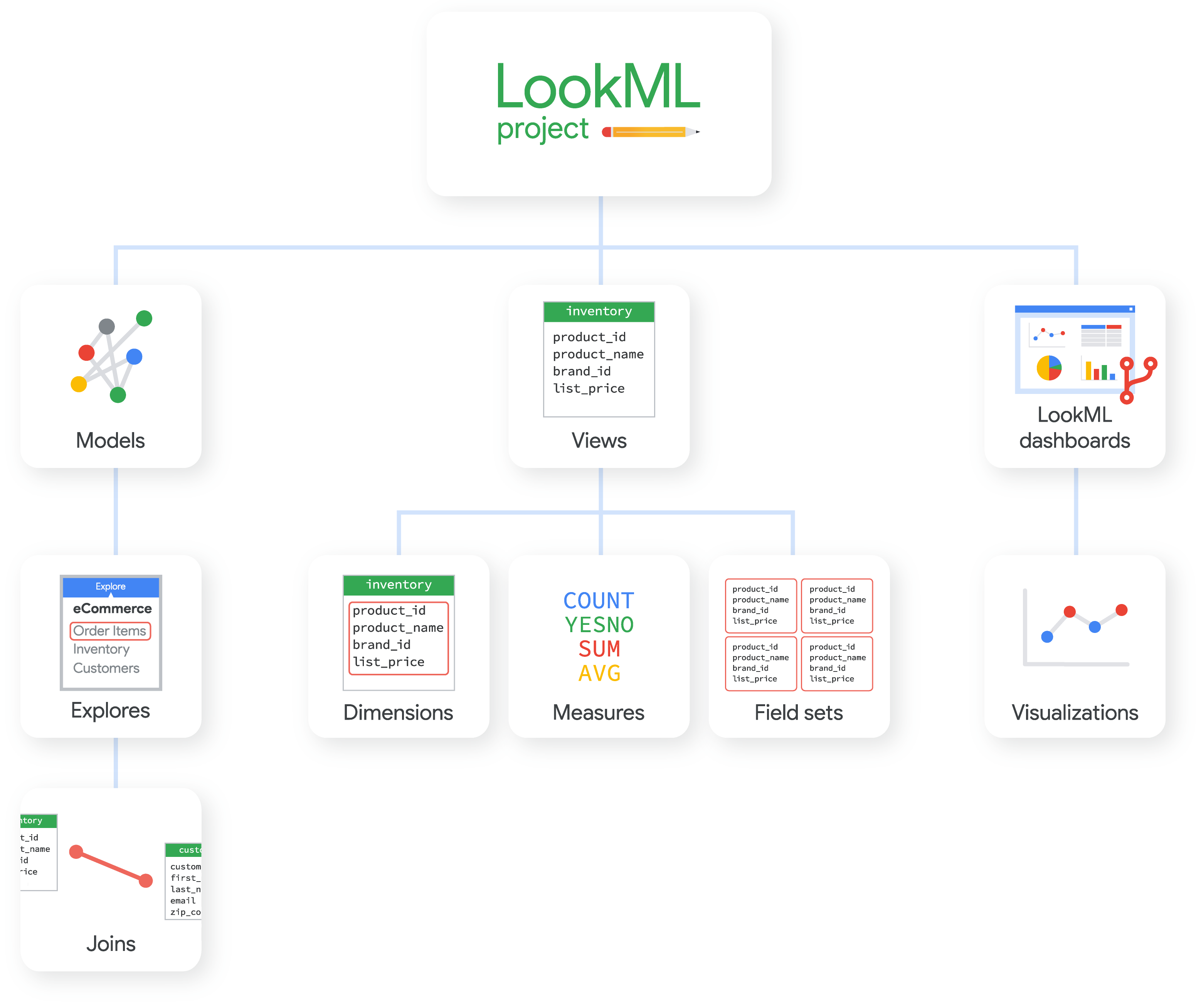 Figure 34: LookML
Figure 34: LookML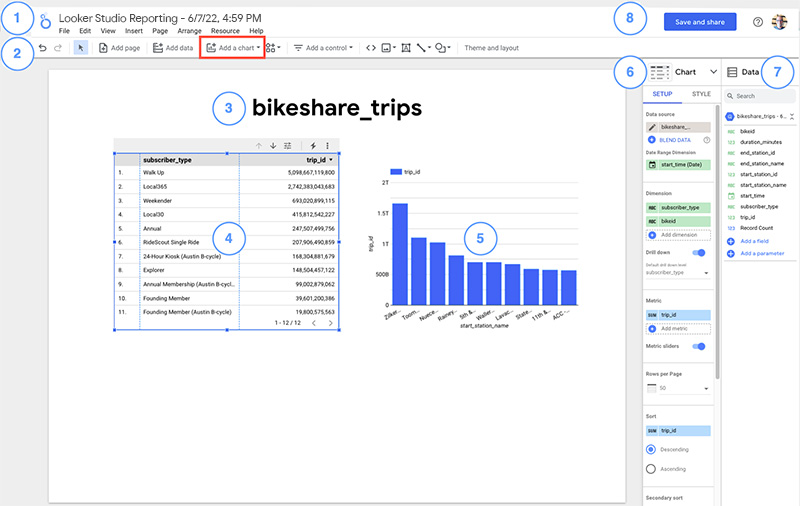 Figure 35: Looker Studio
Figure 35: Looker Studio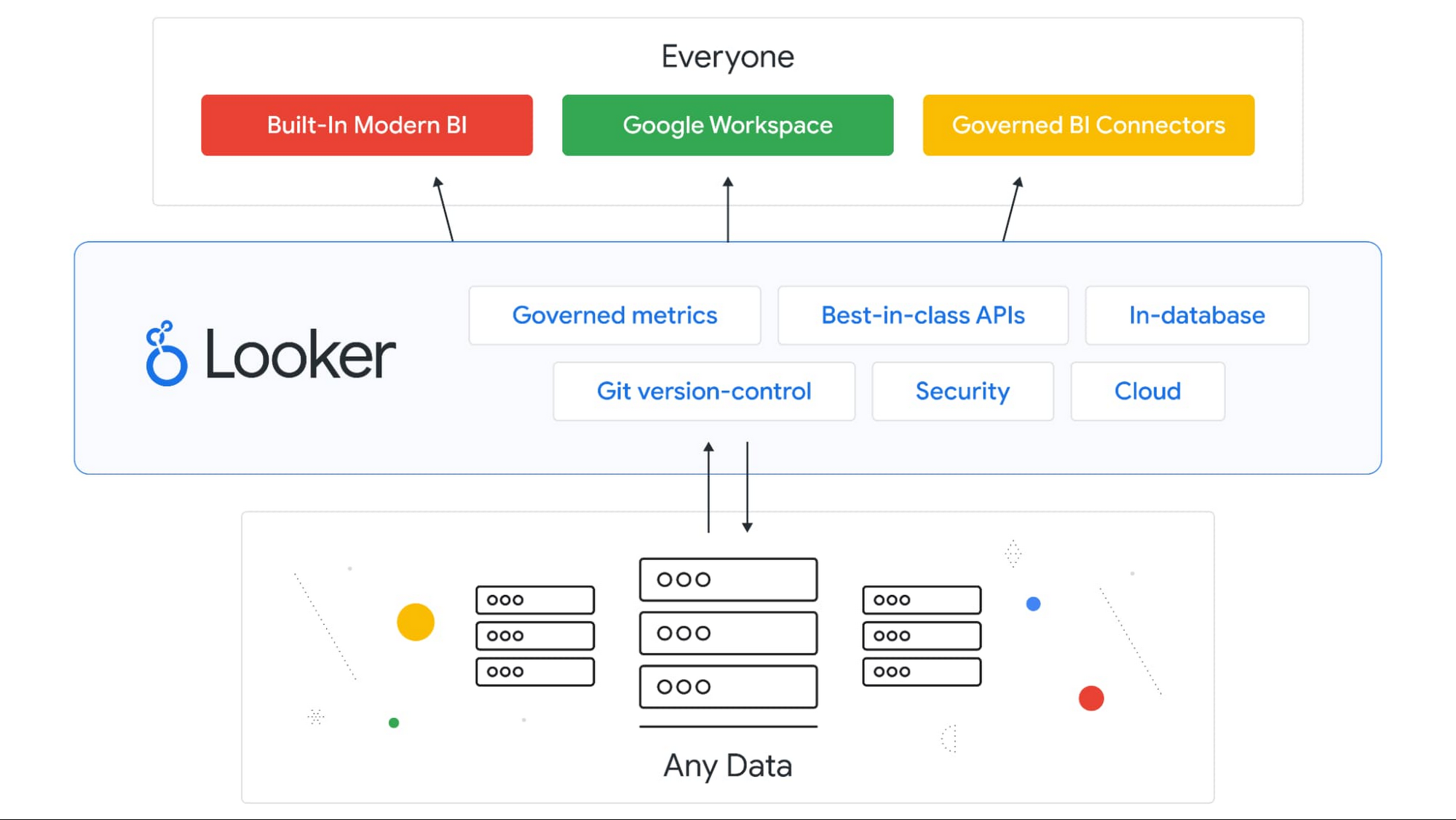 Figure 36: Looker API
Figure 36: Looker API13. Microsoft BI & Analytics
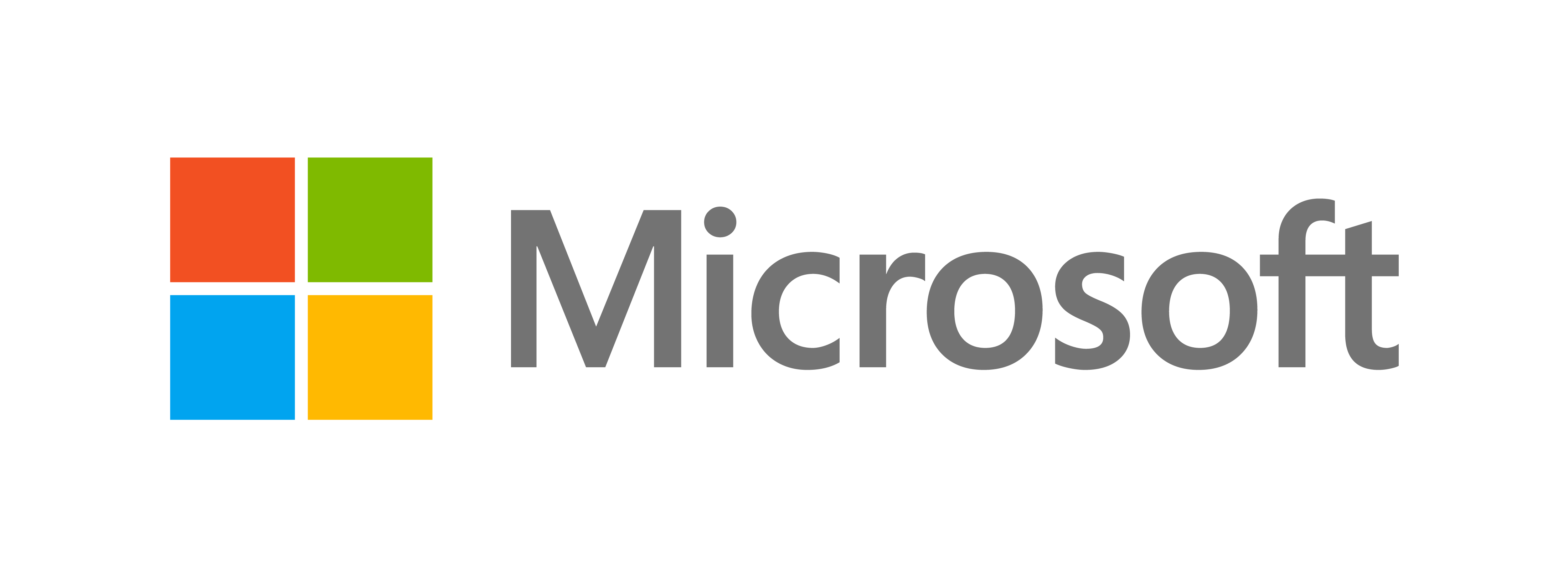 The Business Intelligence tools from the BI & Analytics vendor Microsoft focuses on the support of the following functionality:
The Business Intelligence tools from the BI & Analytics vendor Microsoft focuses on the support of the following functionality:
- SQL
- analytics
- R
- analysis
- reporting
- IoT
- machine learning server
- data mining
- Windows
Microsoft serves the market with the following products, among others: Power BI, Microsoft Azure, Microsoft SQL Server, Azure Synapse Analytics and Azure Stream Analytics (see the images below). We took a closer look at them.
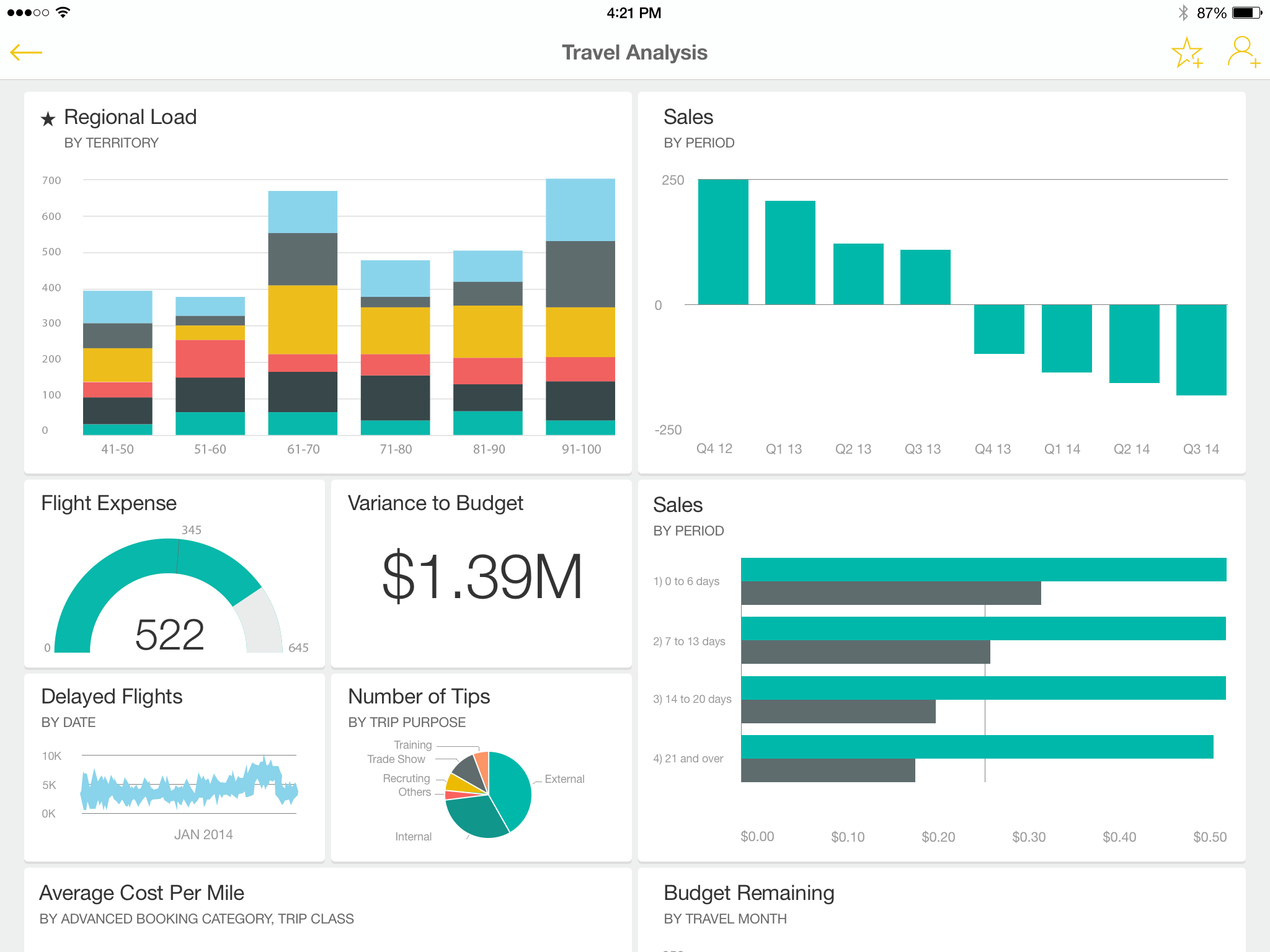 Figure 37: Power BI
Figure 37: Power BI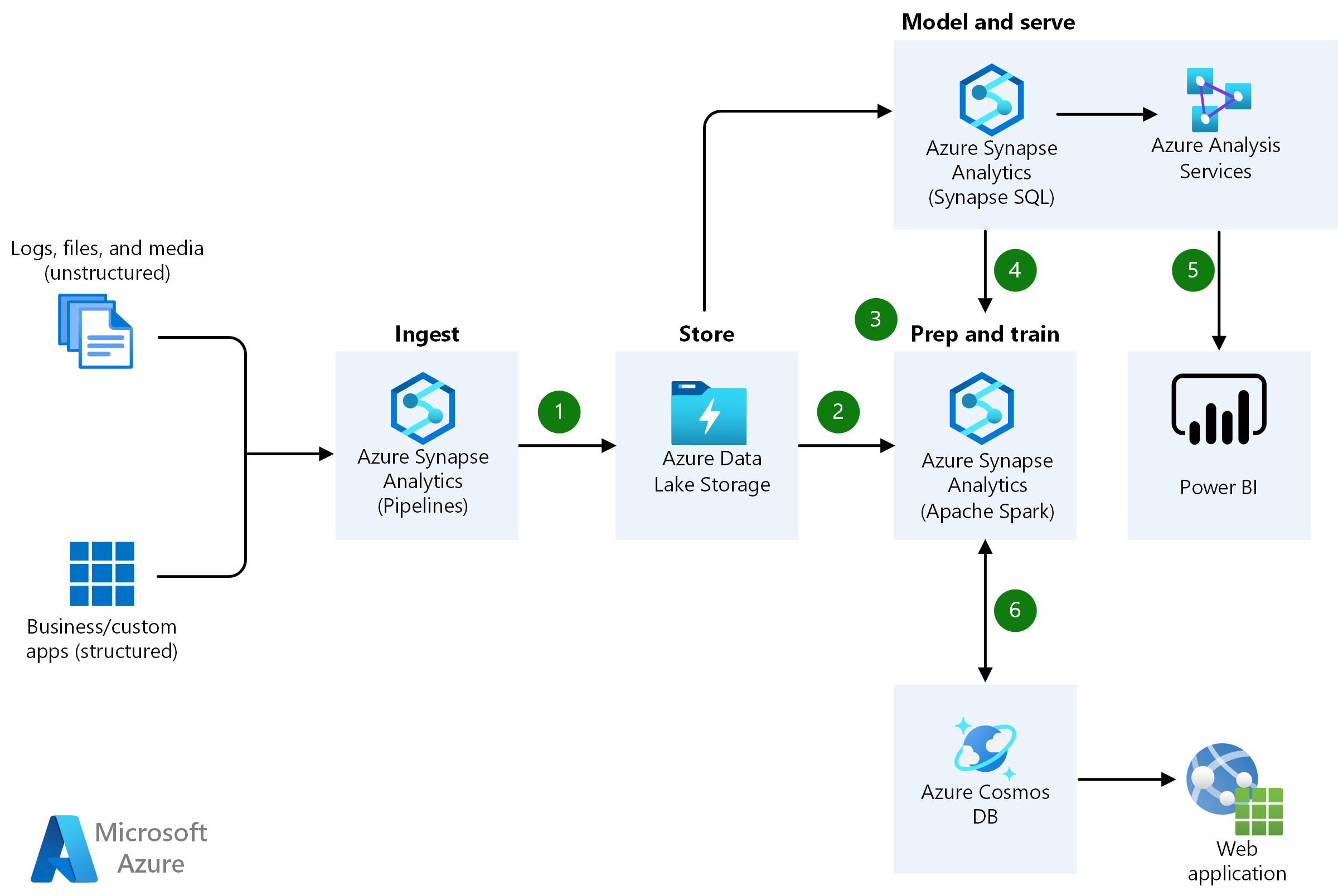 Figure 38: Microsoft Azure
Figure 38: Microsoft Azure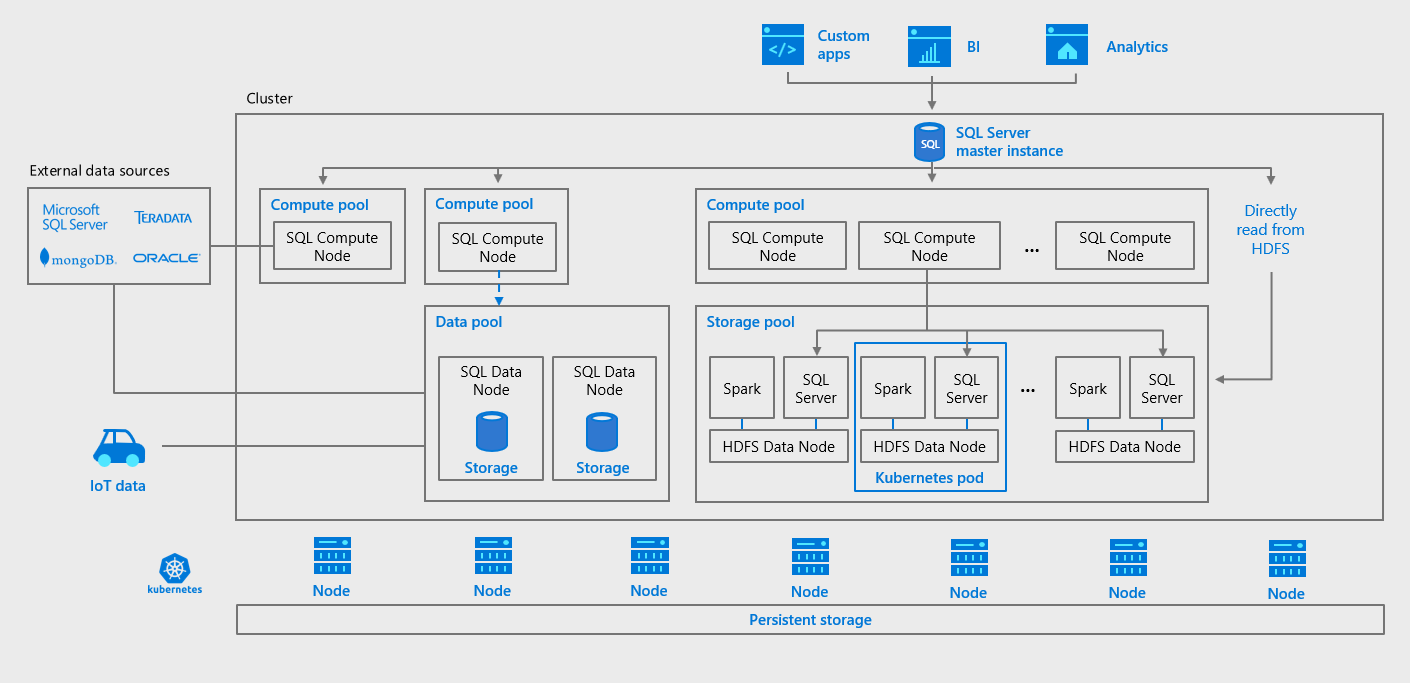 Figure 39: Microsoft SQL Server
Figure 39: Microsoft SQL Server14. MicroStrategy
 MicroStrategy is widely known for its products MicroStrategy Web, MicroStrategy Intelligence Server, MicroStrategy Analytics, Hyperintelligence and MicroStrategy Desktop. The company is 100% specialized in BI & Analytics. Take a look at the images below. The Business Intelligence tools from MicroStrategy are strong in the following areas, among others:
MicroStrategy is widely known for its products MicroStrategy Web, MicroStrategy Intelligence Server, MicroStrategy Analytics, Hyperintelligence and MicroStrategy Desktop. The company is 100% specialized in BI & Analytics. Take a look at the images below. The Business Intelligence tools from MicroStrategy are strong in the following areas, among others:
- analytics
- business intelligence
- R
- Hadoop Gateway
- mobile server
- big data
- reporting
- in-memory
- analysis
- data mining
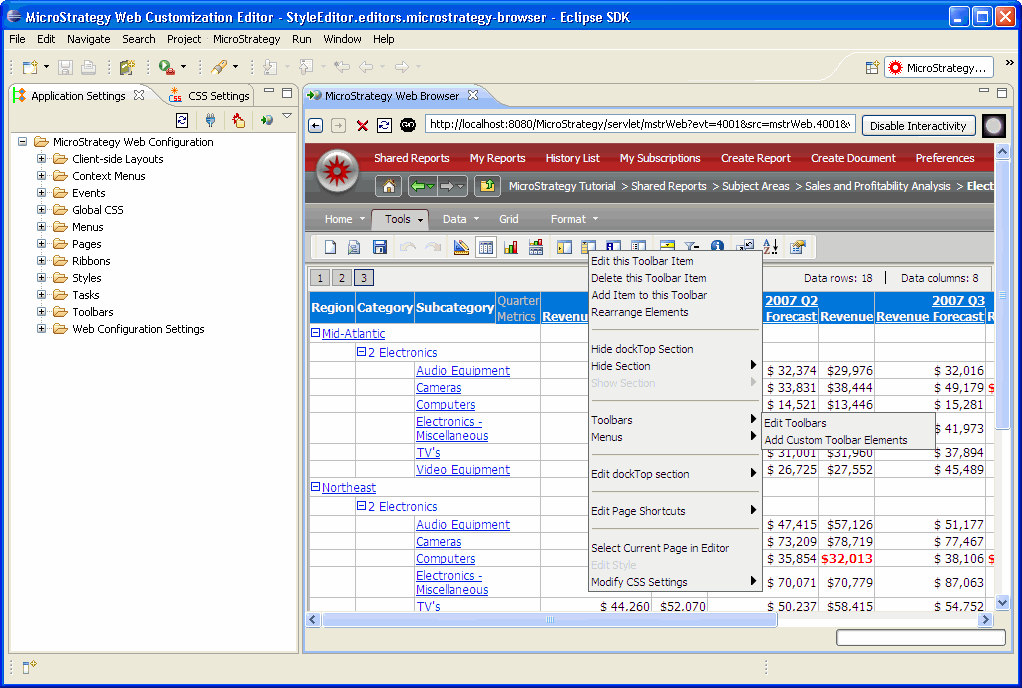 Figure 40: MicroStrategy Web
Figure 40: MicroStrategy Web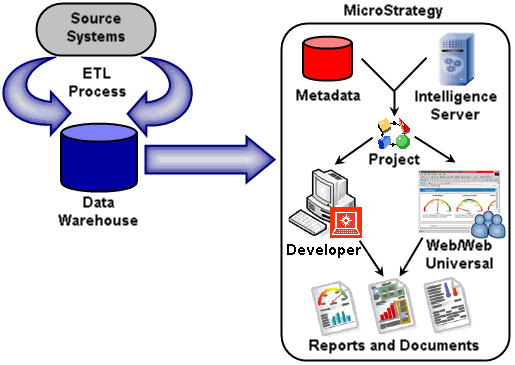 Figure 41: MicroStrategy Intelligence Server
Figure 41: MicroStrategy Intelligence Server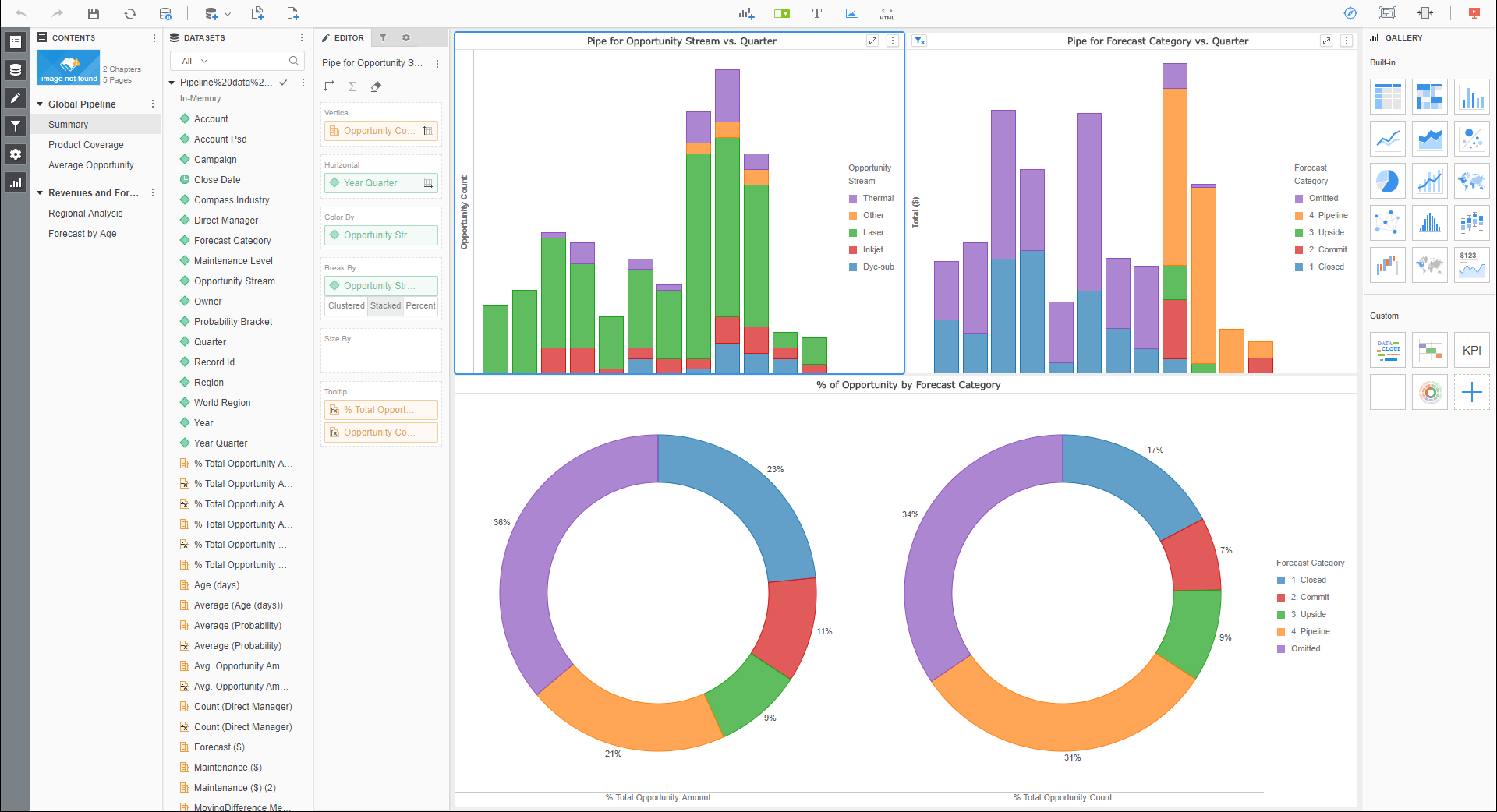 Figure 42: MicroStrategy Analytics
Figure 42: MicroStrategy Analytics15. Oracle BI & Analytics
 The most well-known products in the area of BI & Analytics of the company Oracle are Oracle Database, Oracle Analytics, OBIEE, Oracle Big Data and Oracle Data Integrator. We analyzed and evaluated these BI & Analytics products in depth and meticulously. The Business Intelligence tools from Oracle can be characterized by good support on the following topics:
The most well-known products in the area of BI & Analytics of the company Oracle are Oracle Database, Oracle Analytics, OBIEE, Oracle Big Data and Oracle Data Integrator. We analyzed and evaluated these BI & Analytics products in depth and meticulously. The Business Intelligence tools from Oracle can be characterized by good support on the following topics:
- analytics
- business intelligence
- data quality
- SQL
- big data appliance
- R
- infrastructure
- analysis
- data management
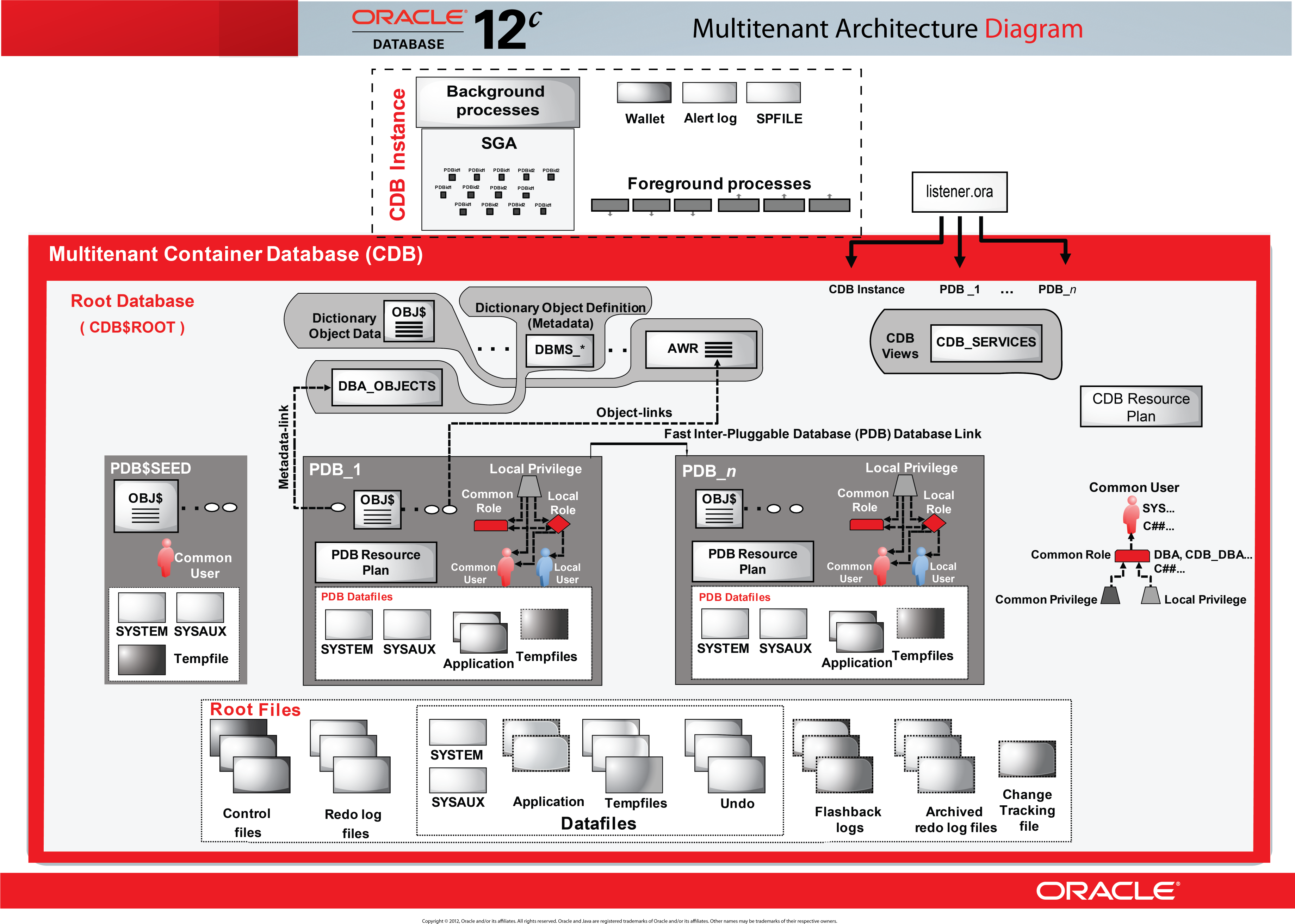 Figure 43: Oracle Database
Figure 43: Oracle Database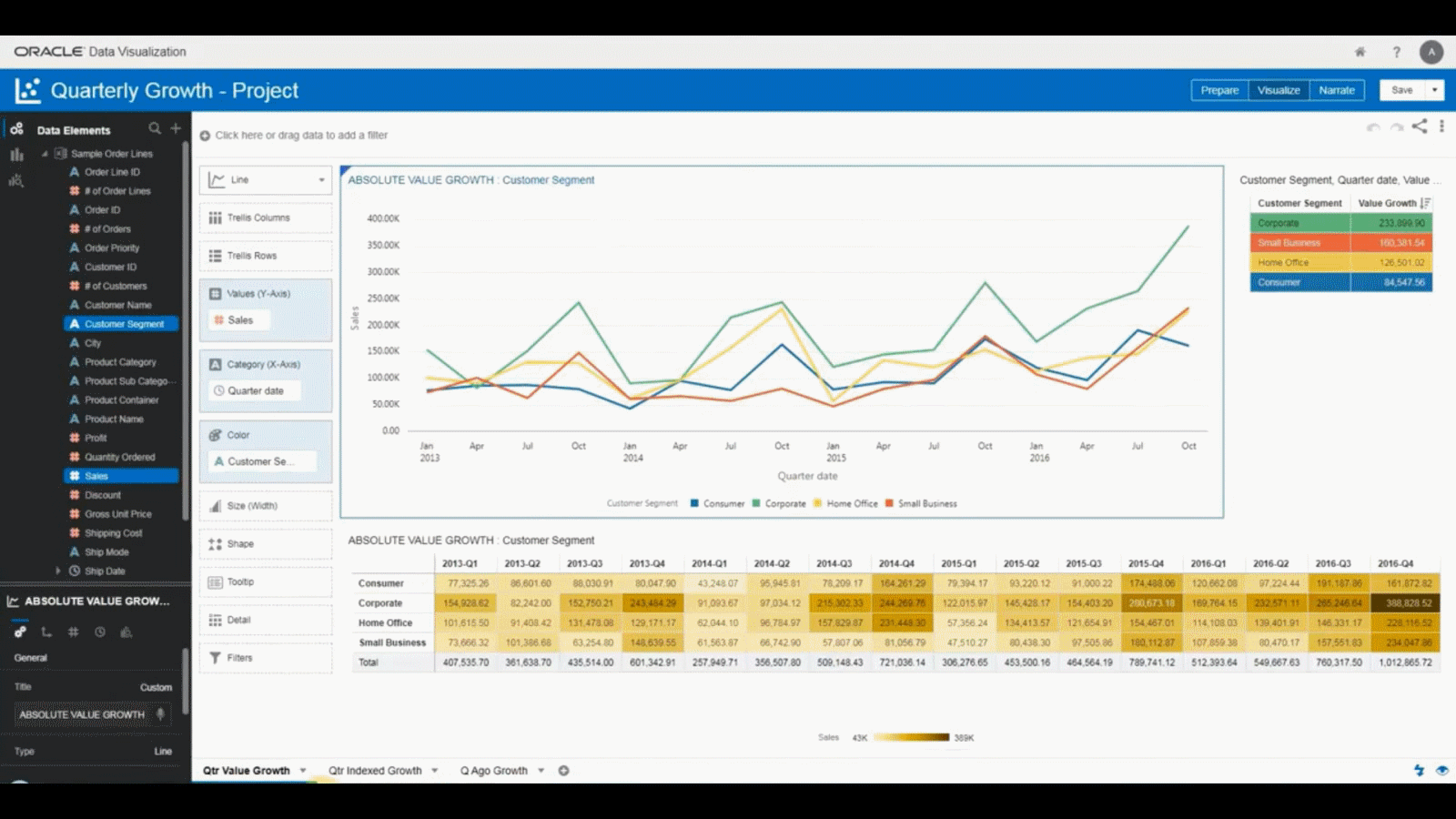 Figure 44: Oracle Analytics
Figure 44: Oracle Analytics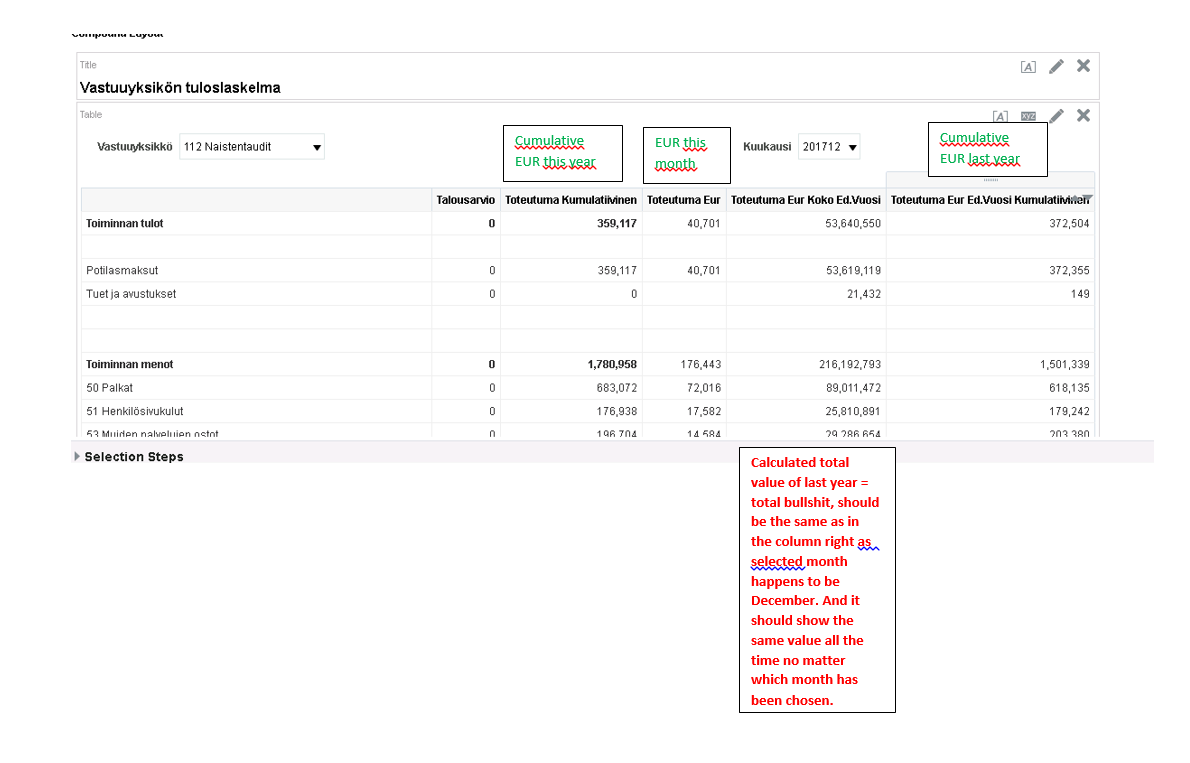 Figure 45: OBIEE
Figure 45: OBIEE16. Pyramid Analytics
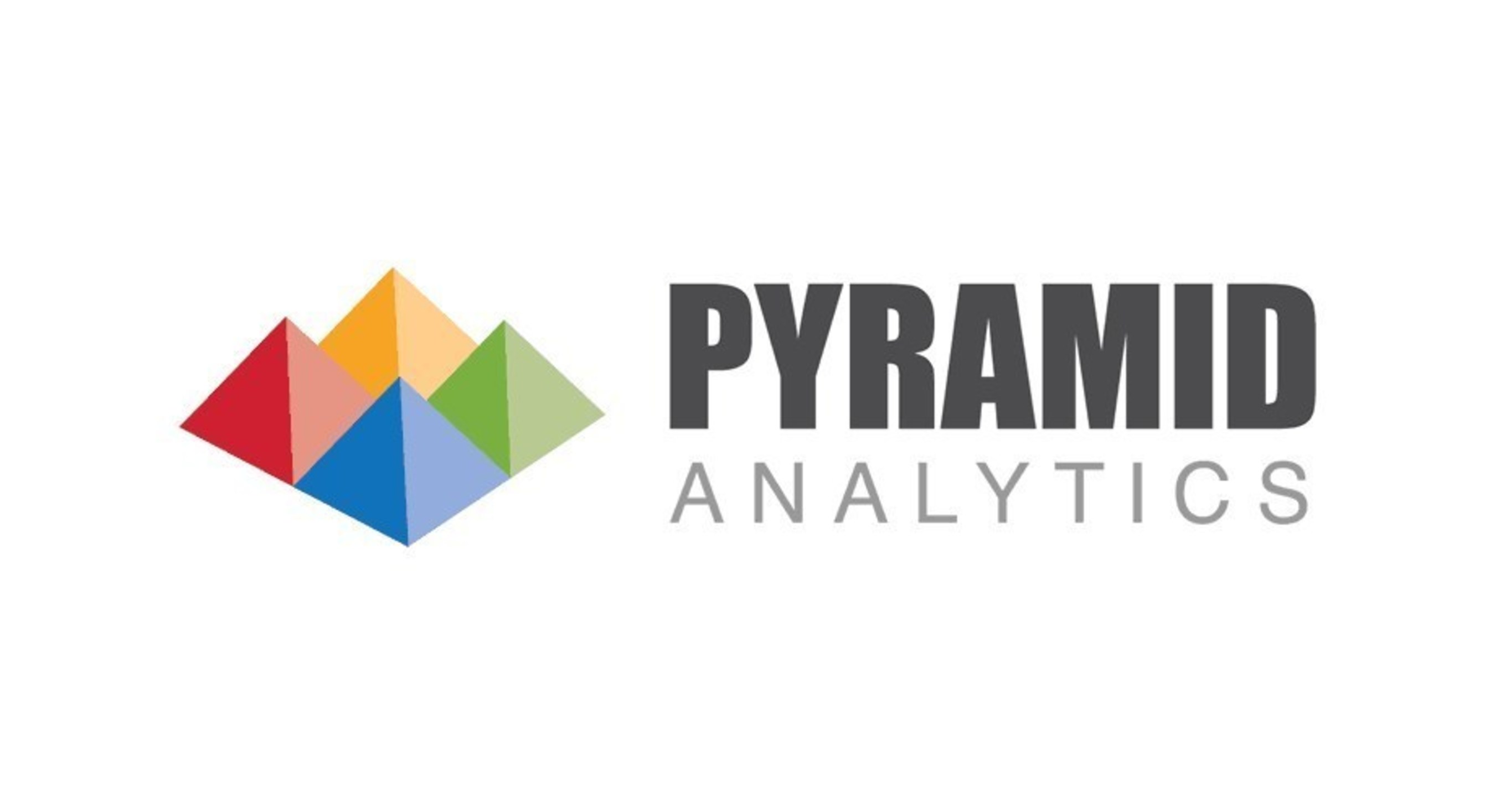
- decision intelligence
- data science
- business intelligence
- analysis
- data preparation
- data discovery
- analytics platform
- reporting
- dashboards
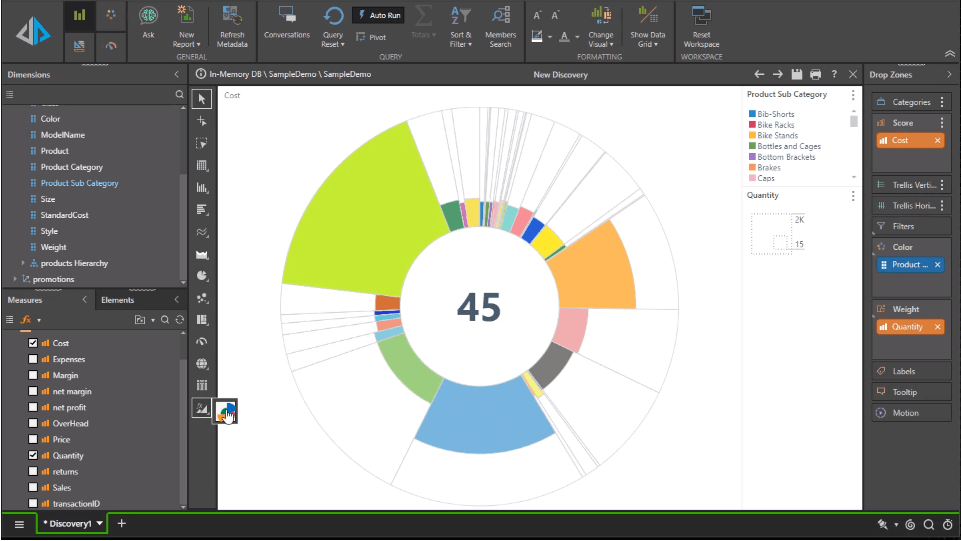 Figure 46: Pyramid Analytics
Figure 46: Pyramid Analytics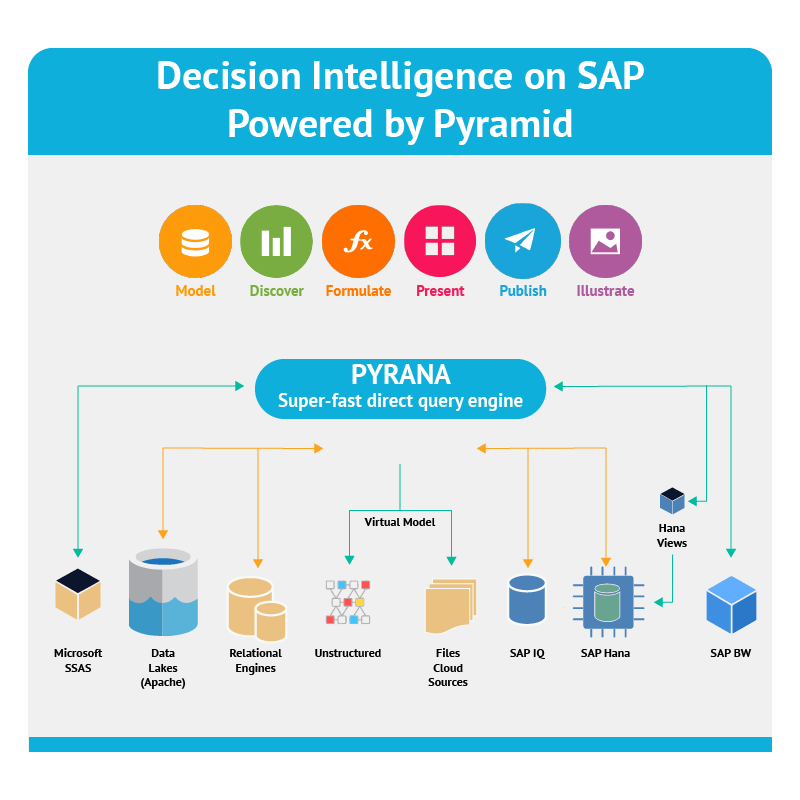 Figure 47: Pyramid Decision Intelligence Platform
Figure 47: Pyramid Decision Intelligence Platform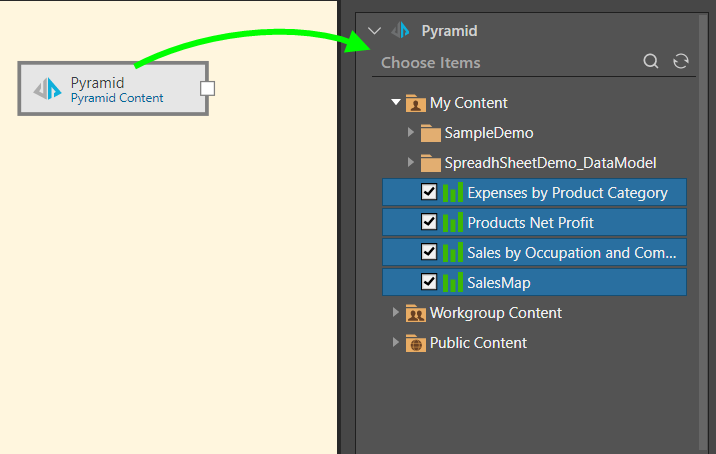 Figure 48: Pyramid Data Science Workbench
Figure 48: Pyramid Data Science Workbench17. Qlik
 Qlik is widely known for its products QlikView, Qlik Sense Enterprise, Qlik Replicate and Qlik NPrinting. The company is 100% specialized in BI & Analytics. Take a look at the images below. The Business Intelligence tools from Qlik are strong in the following areas, among others:
Qlik is widely known for its products QlikView, Qlik Sense Enterprise, Qlik Replicate and Qlik NPrinting. The company is 100% specialized in BI & Analytics. Take a look at the images below. The Business Intelligence tools from Qlik are strong in the following areas, among others:
- geoanalytics
- reporting
- Windows
- analytics platform
- business intelligence
- big data
- analysis
- data integration platform
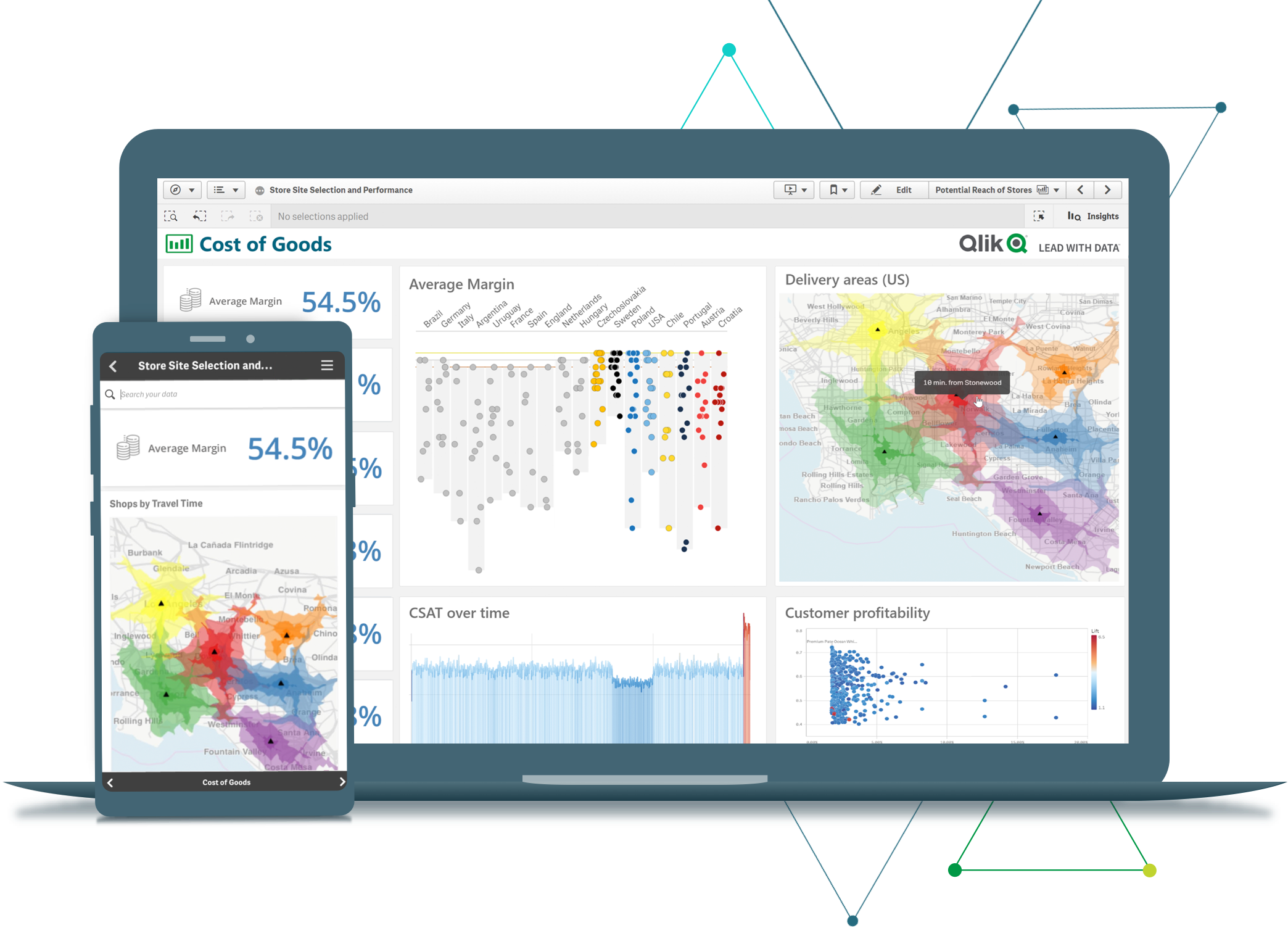 Figure 49: Qlik Sense
Figure 49: Qlik Sense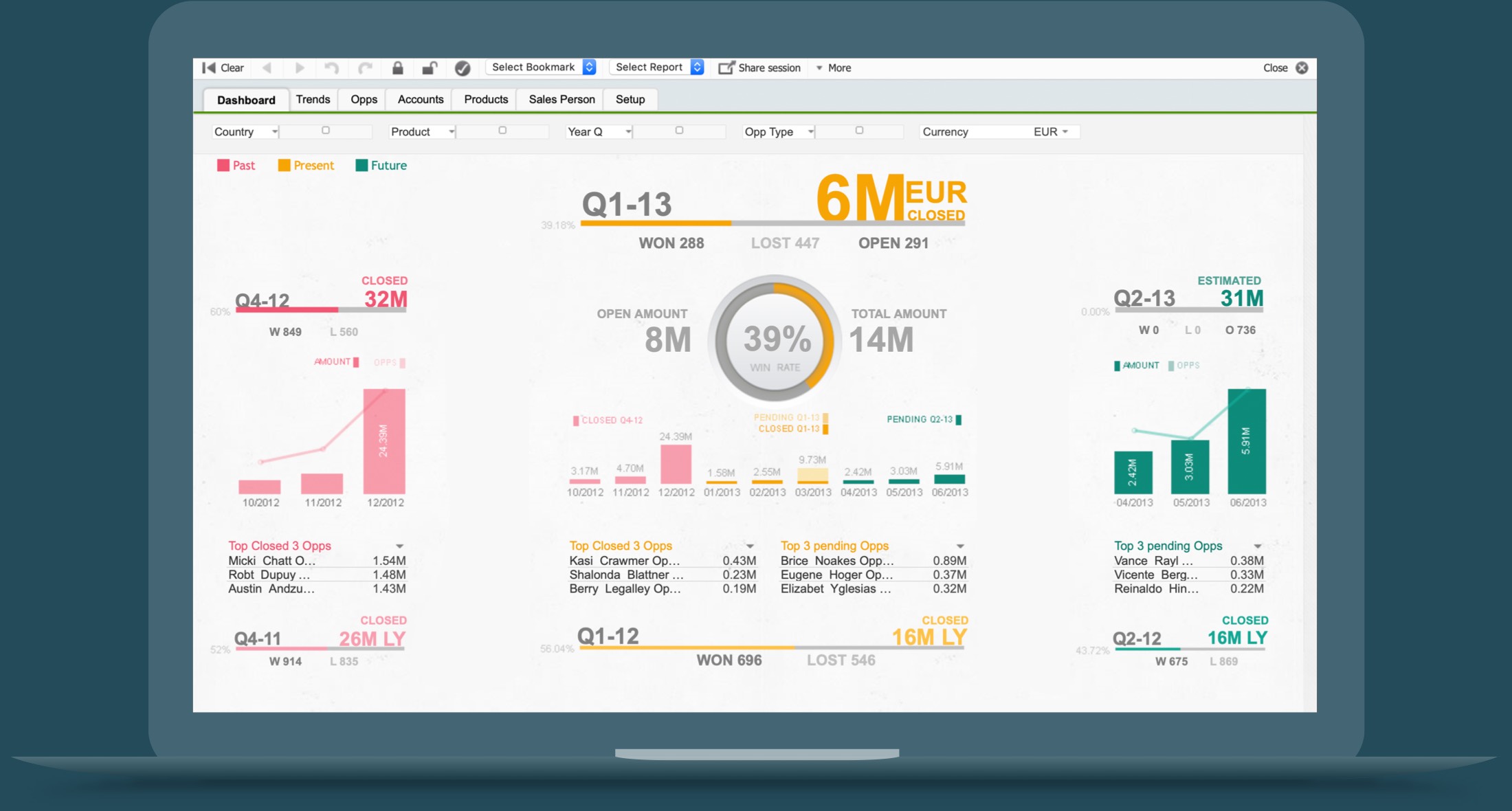 Figure 50: QlikView
Figure 50: QlikView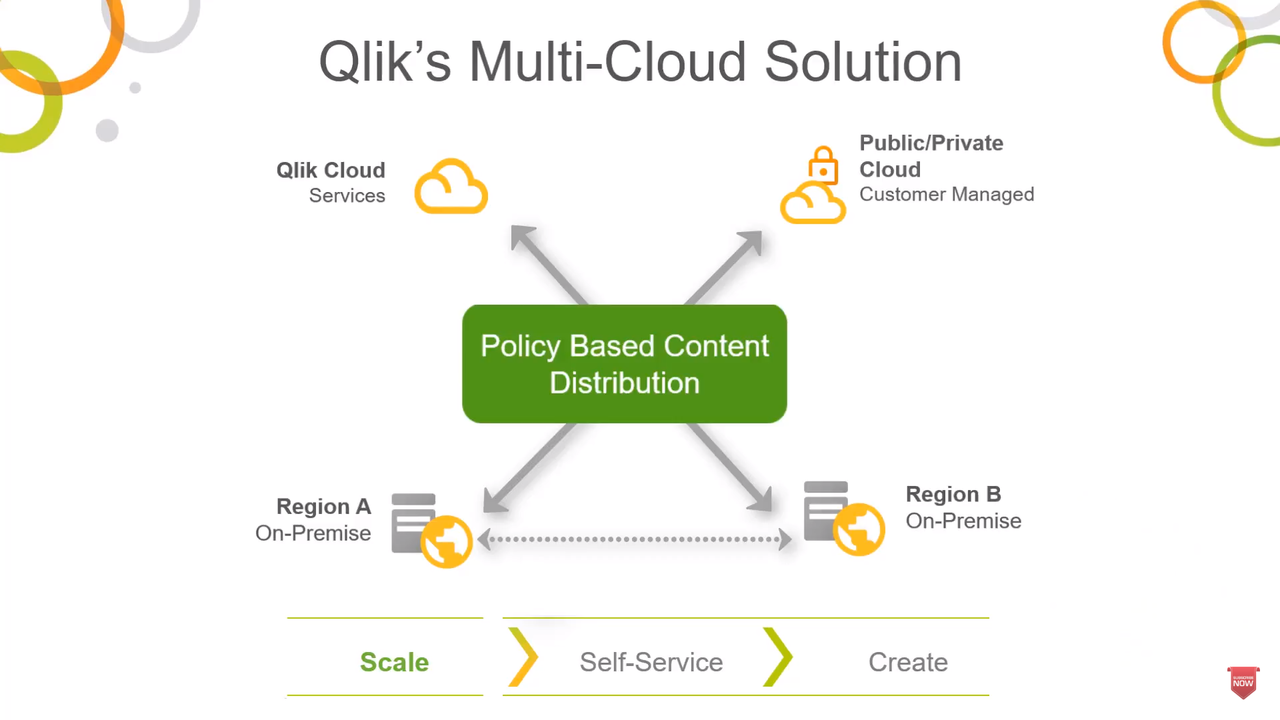 Figure 51: Qlik Sense Enterprise
Figure 51: Qlik Sense Enterprise18. SAP BI & Analytics
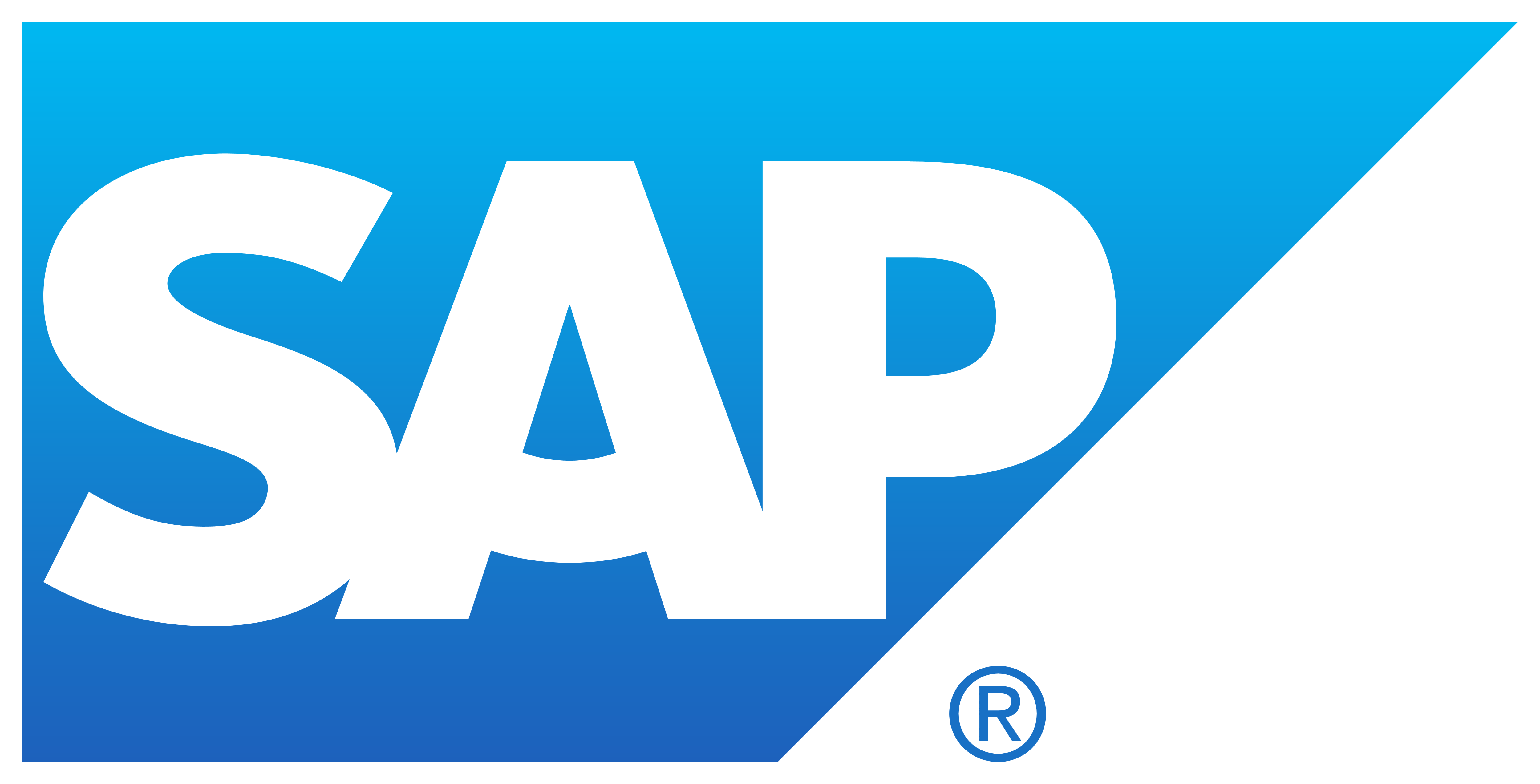 The Business Intelligence tools from the BI & Analytics vendor SAP focuses on the support of the following functionality:
The Business Intelligence tools from the BI & Analytics vendor SAP focuses on the support of the following functionality:
- analytics
- business intelligence
- analysis
- machine learning
- dashboards
- data management
- reporting
- predictive analytics
- SQL
- data hub
SAP serves the market with the following products, among others: SAP HANA, SAP BusinessObjects, SAP Analytics Cloud and SAP Lumira (see the images below). We took a closer look at them.
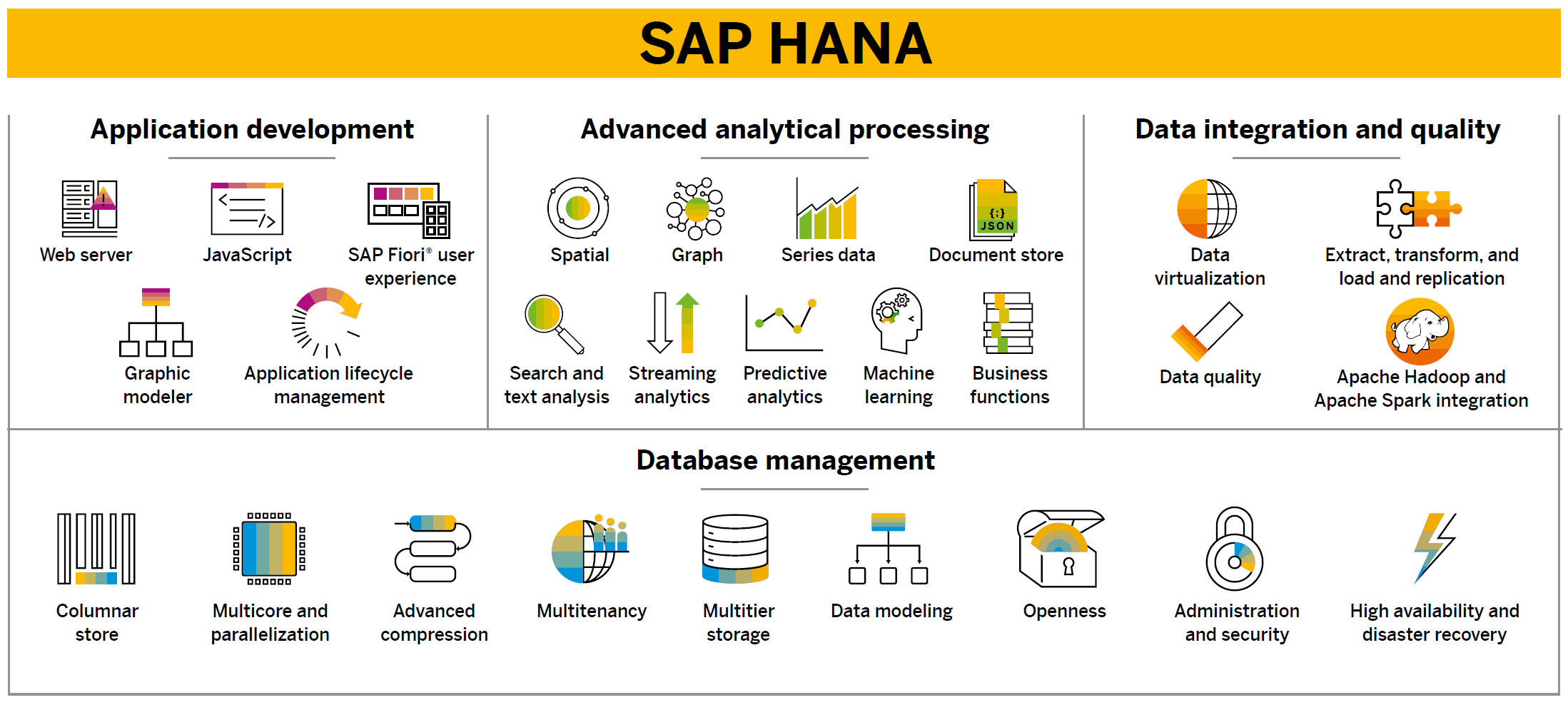 Figure 52: SAP HANA
Figure 52: SAP HANA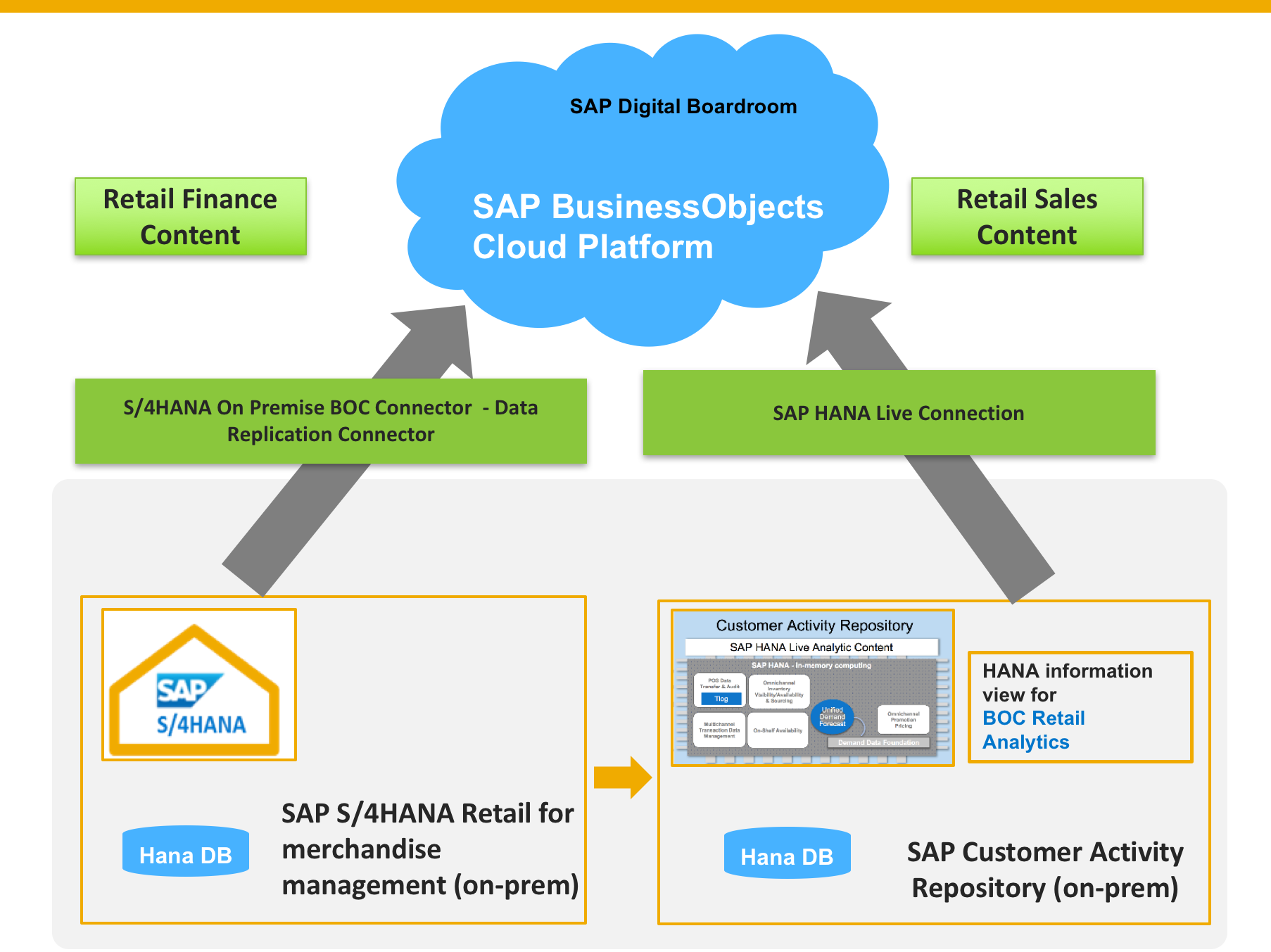 Figure 53: SAP BusinessObjects
Figure 53: SAP BusinessObjects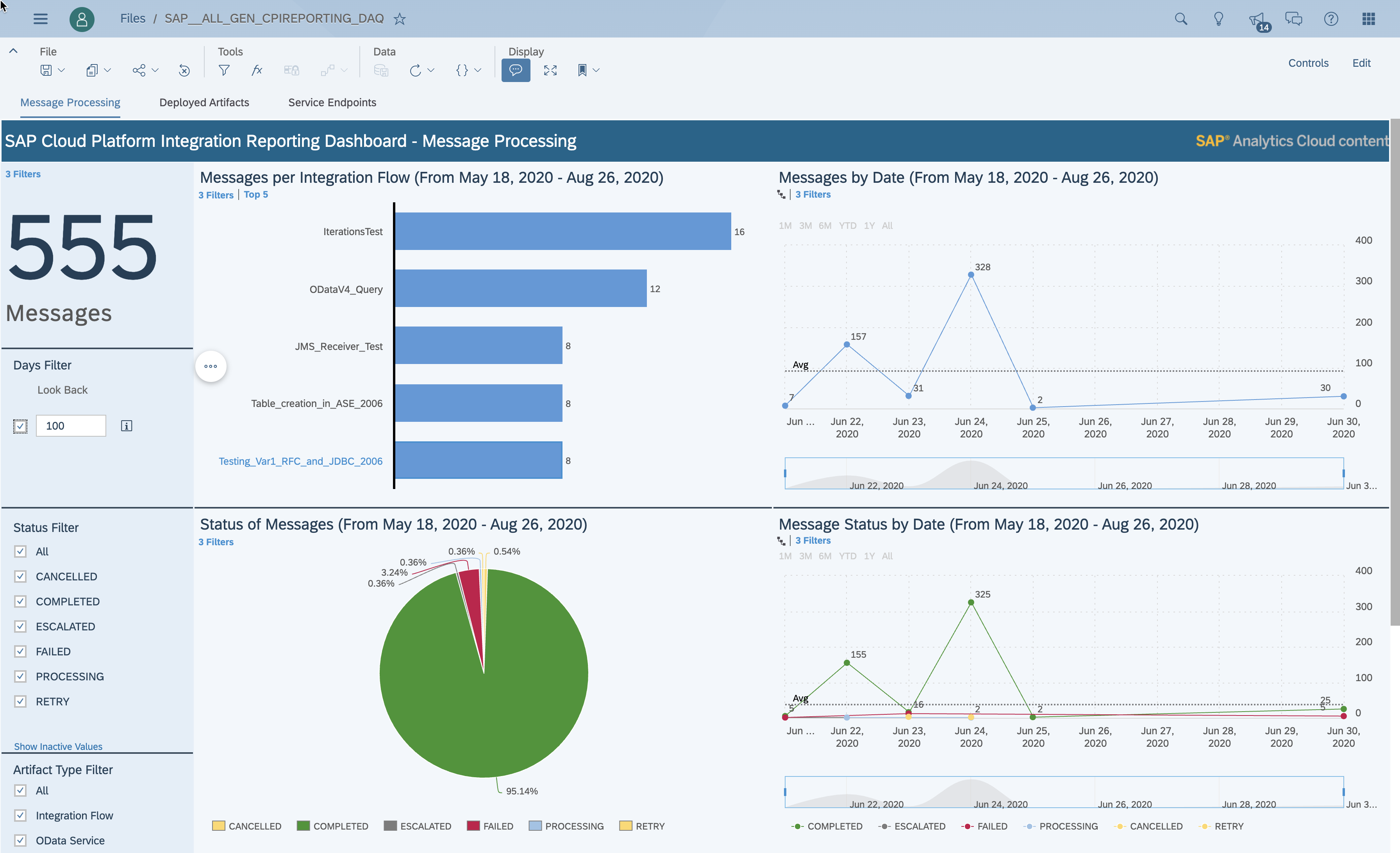 Figure 54: SAP Analytics
Figure 54: SAP Analytics19. SAS
 SAS is widely known for its products SAS Viya, SAS Visual Analytics, Dataflux, SAS/ACCESS and SAS Enterprise Guide. The company is 100% specialized in BI & Analytics. Take a look at the images below. The Business Intelligence tools from SAS are strong in the following areas, among others:
SAS is widely known for its products SAS Viya, SAS Visual Analytics, Dataflux, SAS/ACCESS and SAS Enterprise Guide. The company is 100% specialized in BI & Analytics. Take a look at the images below. The Business Intelligence tools from SAS are strong in the following areas, among others:
- analytics
- data management
- visual analytics
- forecasting
- analysis
- data integration
- OLAP
- machine learning
- data quality
- customer intelligence
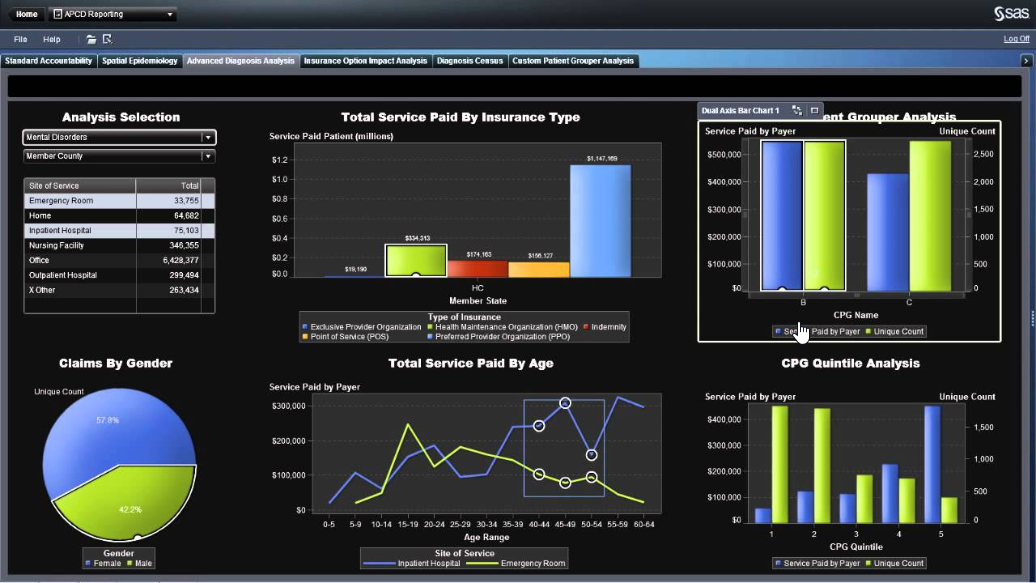 Figure 55: SAS Viya
Figure 55: SAS Viya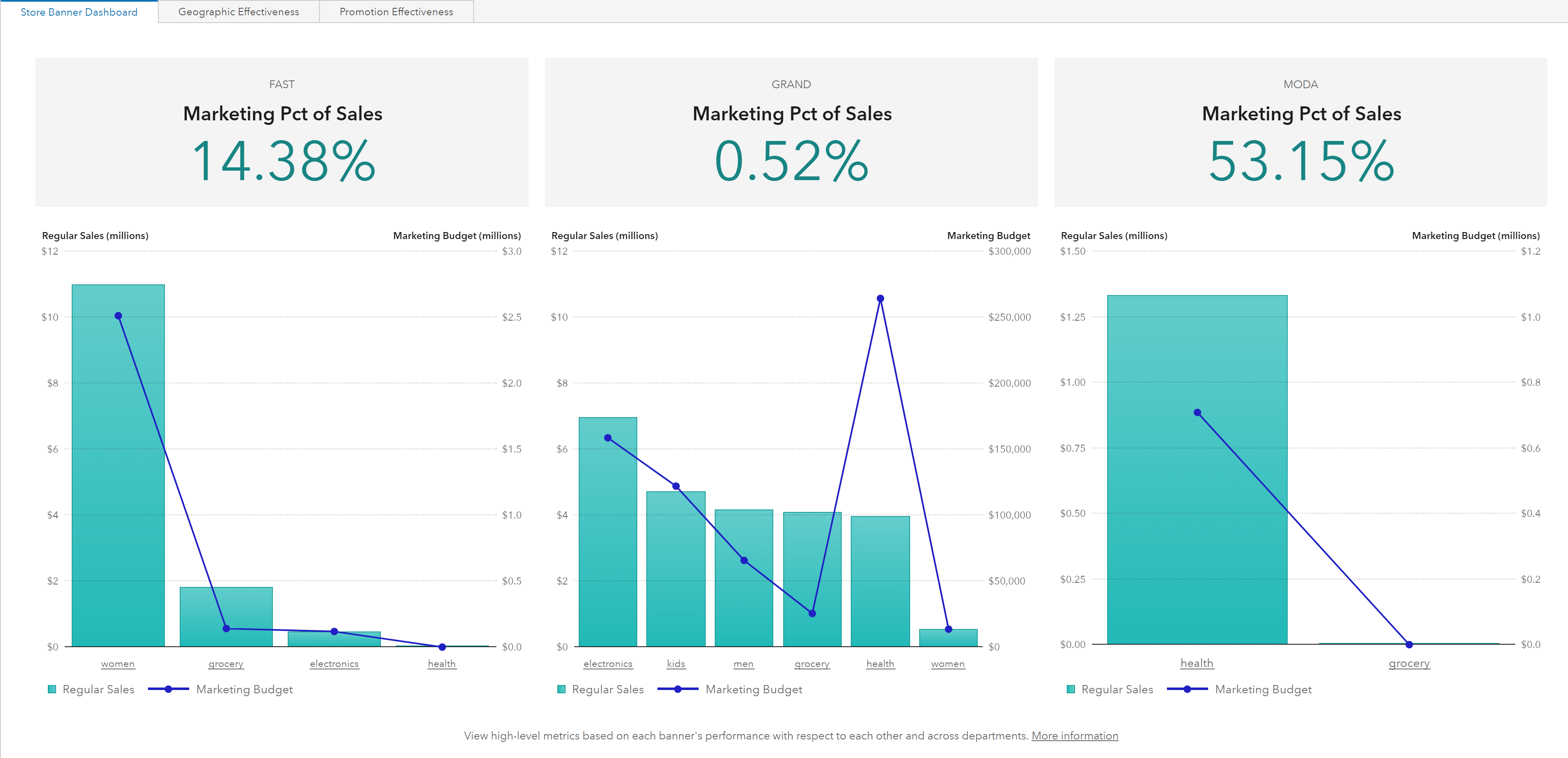 Figure 56: SAS Visual Analytics
Figure 56: SAS Visual Analytics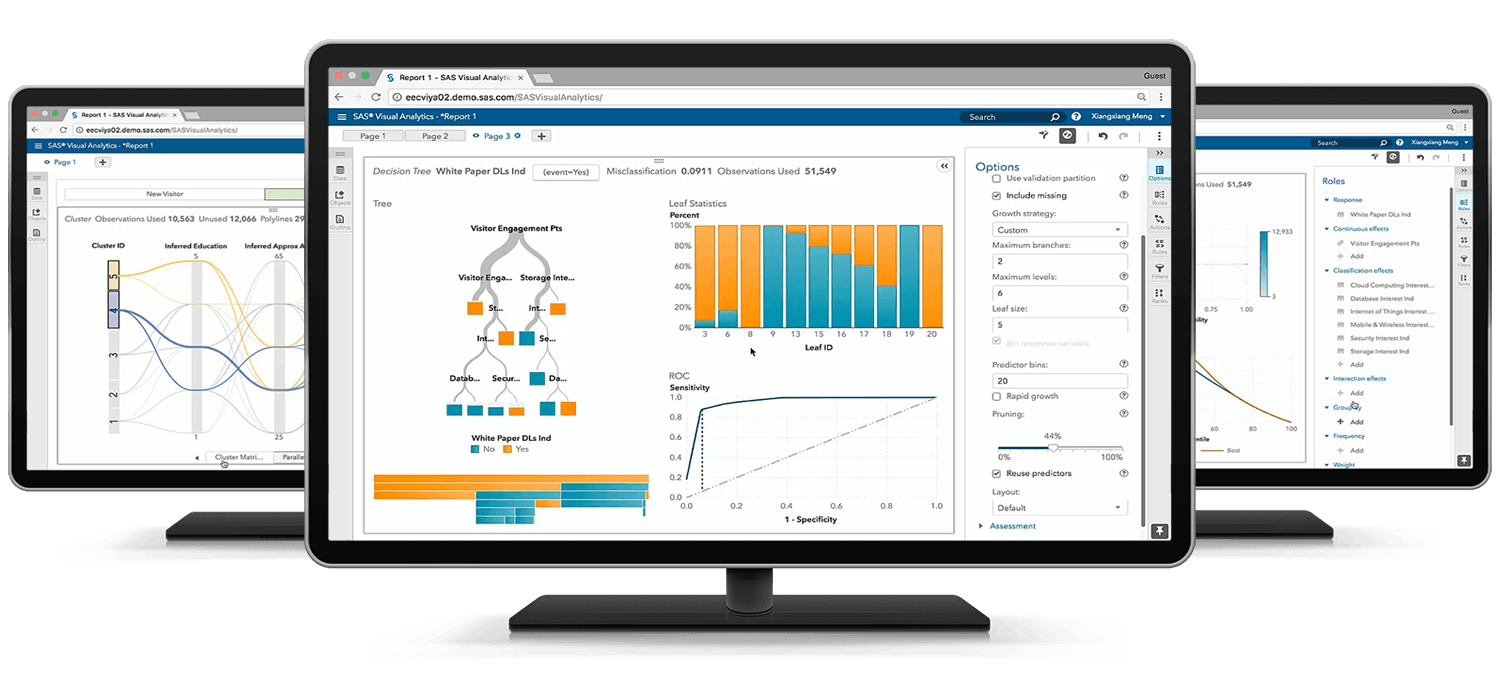 Figure 57: Dataflux
Figure 57: Dataflux20. Sisense
 Sisense is widely known for its products Elasticube Manager, Sisense Analytics, Sisense ElastiCube and Sisense Blox. The company is 100% specialized in BI & Analytics. Take a look at the images below. The Business Intelligence tools from Sisense are strong in the following areas, among others:
Sisense is widely known for its products Elasticube Manager, Sisense Analytics, Sisense ElastiCube and Sisense Blox. The company is 100% specialized in BI & Analytics. Take a look at the images below. The Business Intelligence tools from Sisense are strong in the following areas, among others:
- dashboards
- business intelligence
- usage analytics
- embedded analytics
- big data
- predictive analytics
- analytics platform
- complex data
- data mining
 Figure 58: Elasticube
Figure 58: Elasticube Figure 59: Elasticube Manager
Figure 59: Elasticube Manager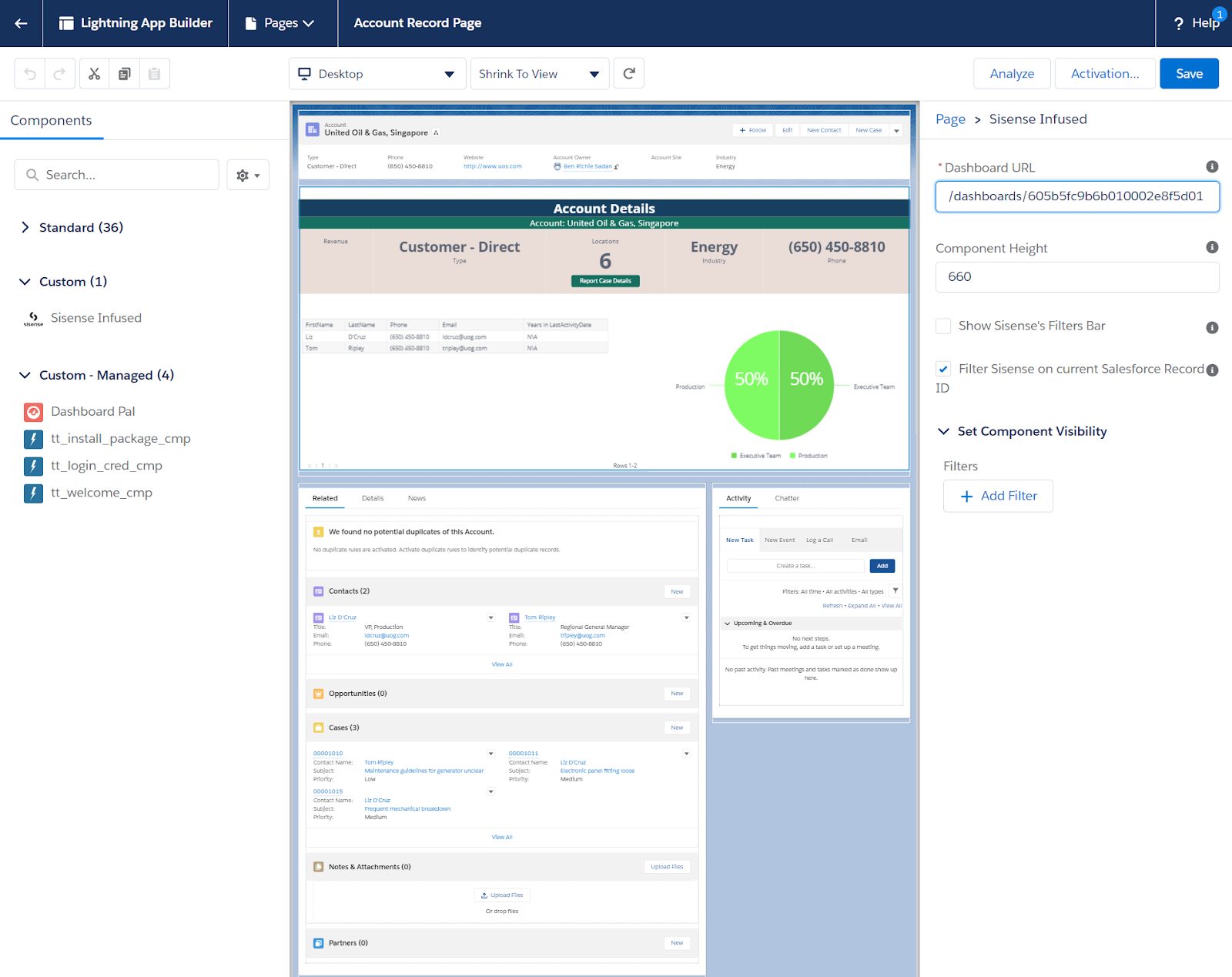 Figure 60: Sisense Analytics
Figure 60: Sisense Analytics21. Tableau
 The most well-known products in the area of BI & Analytics of the company Tableau are Tableau Server, Tableau Desktop, Tableau Online, Tableau Public and Tableau Prep Builder. We analyzed and evaluated these BI & Analytics products in depth and meticulously. The Business Intelligence tools from Tableau can be characterized by good support on the following topics:
The most well-known products in the area of BI & Analytics of the company Tableau are Tableau Server, Tableau Desktop, Tableau Online, Tableau Public and Tableau Prep Builder. We analyzed and evaluated these BI & Analytics products in depth and meticulously. The Business Intelligence tools from Tableau can be characterized by good support on the following topics:
- analytics
- data management
- analysis
- business intelligence
- embedded analytics
- dashboards
- advanced analytics
- Salesforce
- Python
- data visualization
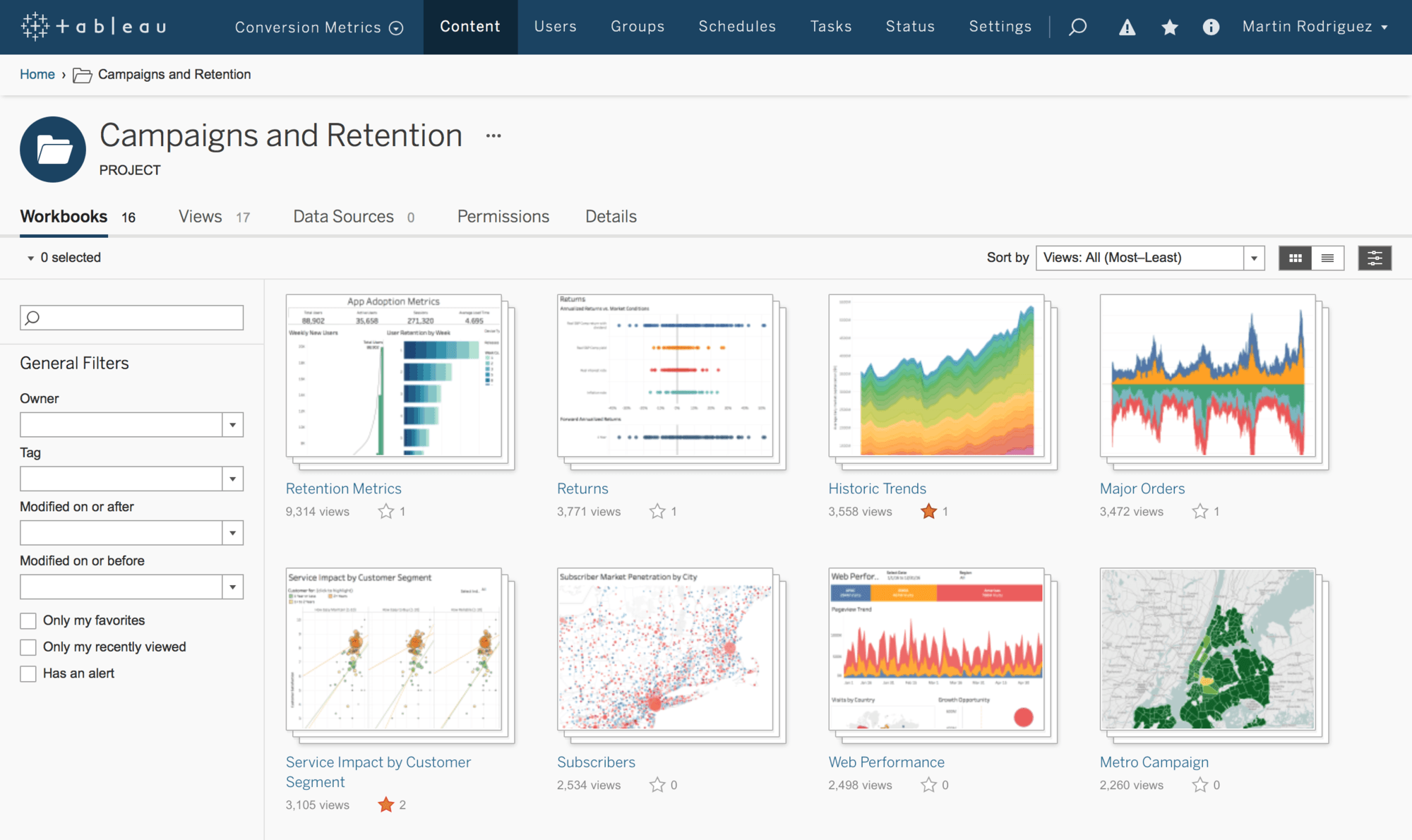 Figure 61: Tableau Server
Figure 61: Tableau Server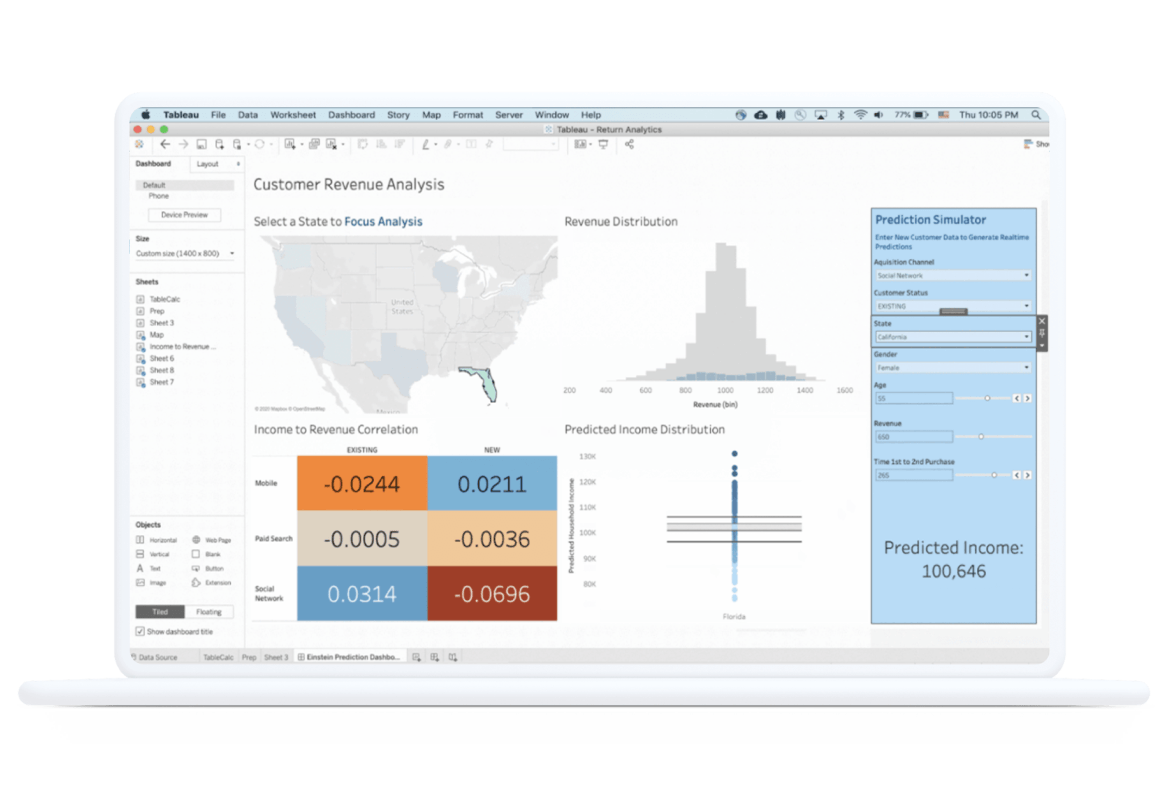 Figure 62: Tableau Desktop
Figure 62: Tableau Desktop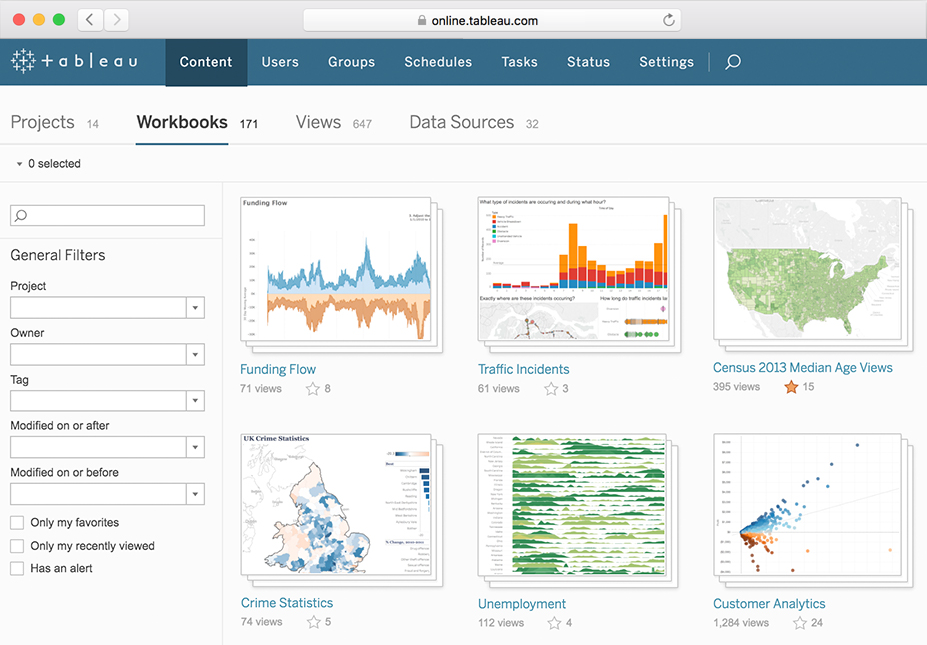 Figure 63: Tableau Online
Figure 63: Tableau Online22. ThoughtSpot
 ThoughtSpot is widely known for its products SpotIQ, ThoughtSpot Embrace, ThoughtSpot DataFlow, ThoughtSpot mobile and ThoughtSpot Business Intelligence. The company is 100% specialized in BI & Analytics. Take a look at the images below. The Business Intelligence tools from ThoughtSpot are strong in the following areas, among others:
ThoughtSpot is widely known for its products SpotIQ, ThoughtSpot Embrace, ThoughtSpot DataFlow, ThoughtSpot mobile and ThoughtSpot Business Intelligence. The company is 100% specialized in BI & Analytics. Take a look at the images below. The Business Intelligence tools from ThoughtSpot are strong in the following areas, among others:
- business intelligence
- analysis
- analytics platform
- in-memory
- iOS
- natural language
- artificial intelligence
- Slack
- Microsoft Teams
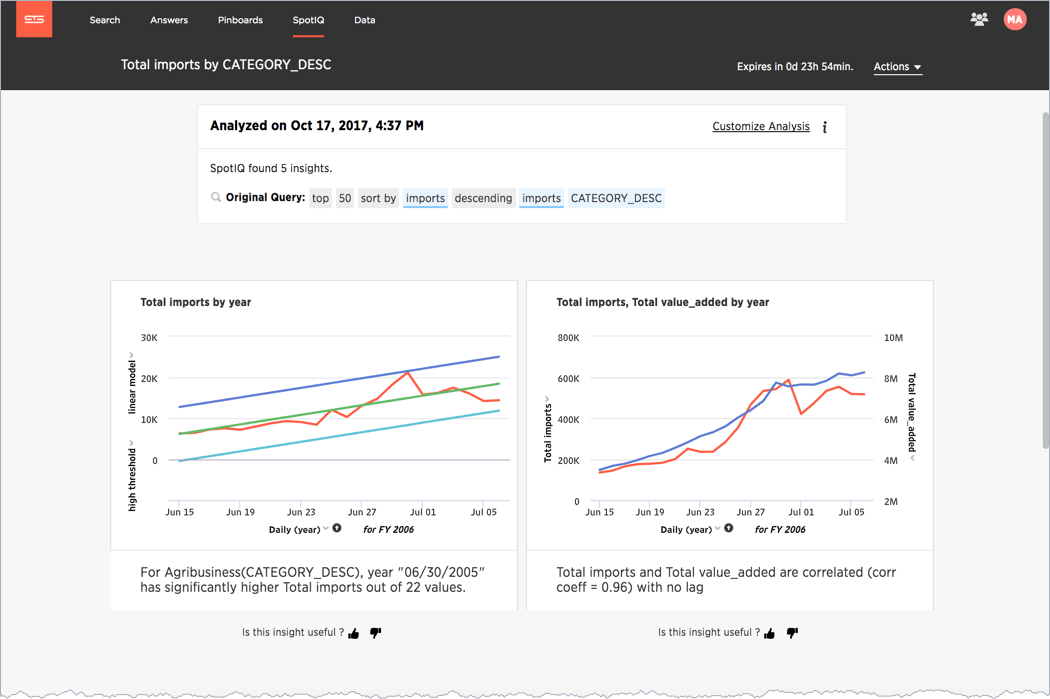 Figure 64: SpotIQ
Figure 64: SpotIQ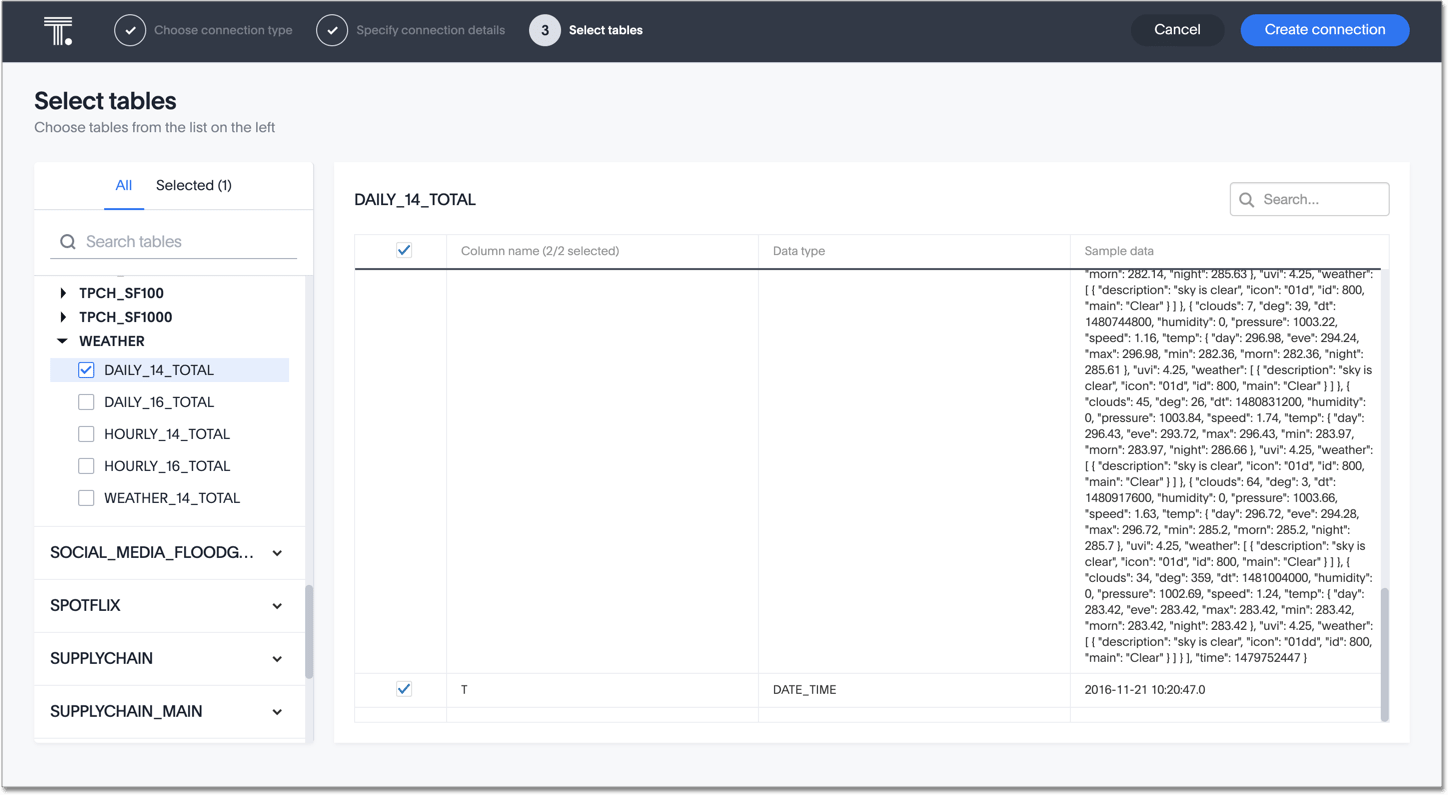 Figure 65: ThoughtSpot Embrace
Figure 65: ThoughtSpot Embrace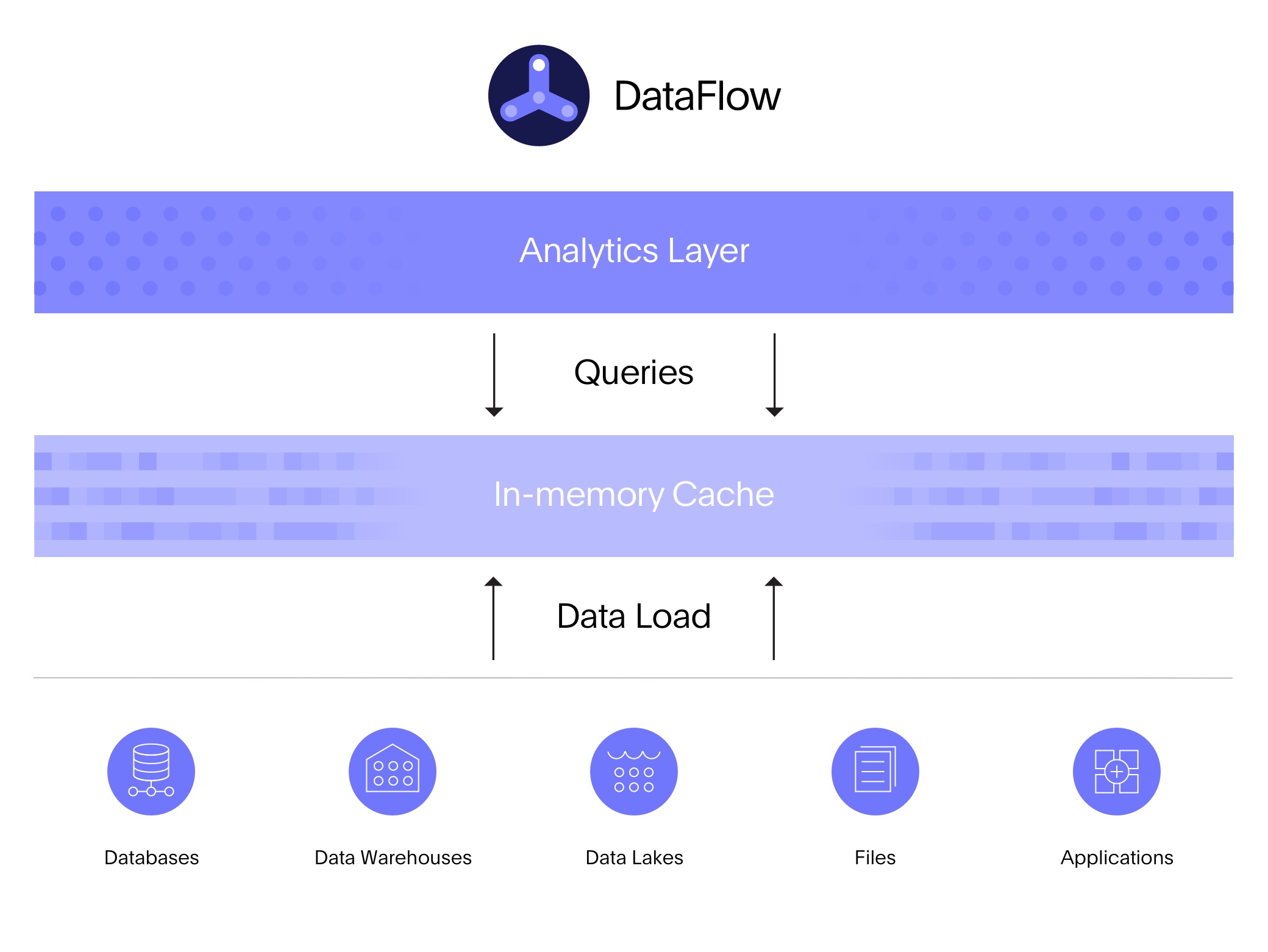 Figure 66: ThoughtSpot DataFlow
Figure 66: ThoughtSpot DataFlow23. TIBCO
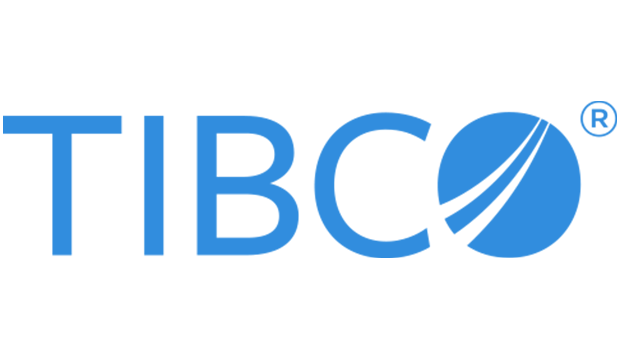 TIBCO is widely known for its products TIBCO Spotfire, TIBCO Data Science, TIBCO Data Virtualization, Jasperreports and TIBCO Analytics. The company is 100% specialized in BI & Analytics. Take a look at the images below. The Business Intelligence tools from TIBCO are strong in the following areas, among others:
TIBCO is widely known for its products TIBCO Spotfire, TIBCO Data Science, TIBCO Data Virtualization, Jasperreports and TIBCO Analytics. The company is 100% specialized in BI & Analytics. Take a look at the images below. The Business Intelligence tools from TIBCO are strong in the following areas, among others:
- analytics
- streaming
- data science
- real-time
- MDM
- data quality
- analysis
- reporting
- data management
- data virtualization
 Figure 67: TIBCO Spotfire
Figure 67: TIBCO Spotfire Figure 68: TIBCO Data Science
Figure 68: TIBCO Data Science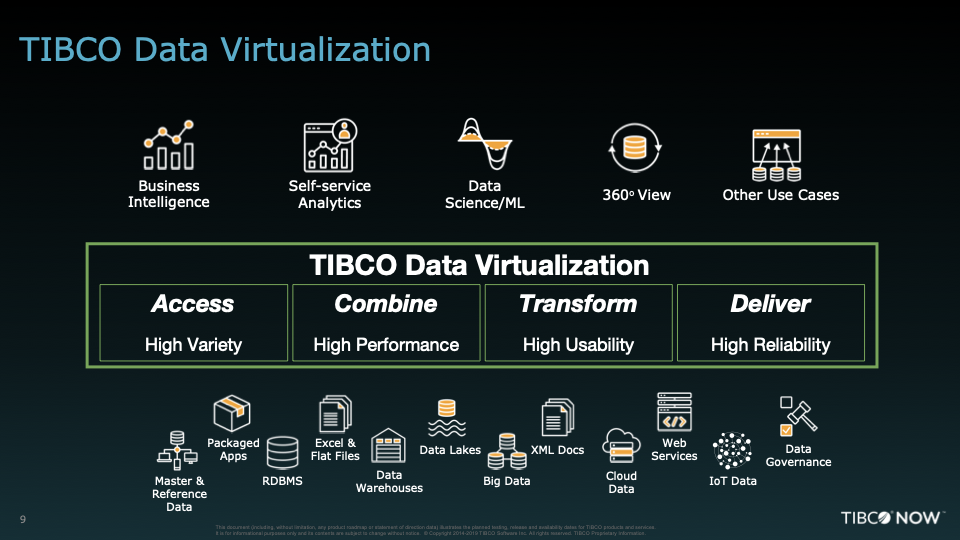 Figure 69: TIBCO Data Virtualization
Figure 69: TIBCO Data Virtualization24. Wyn Enterprise
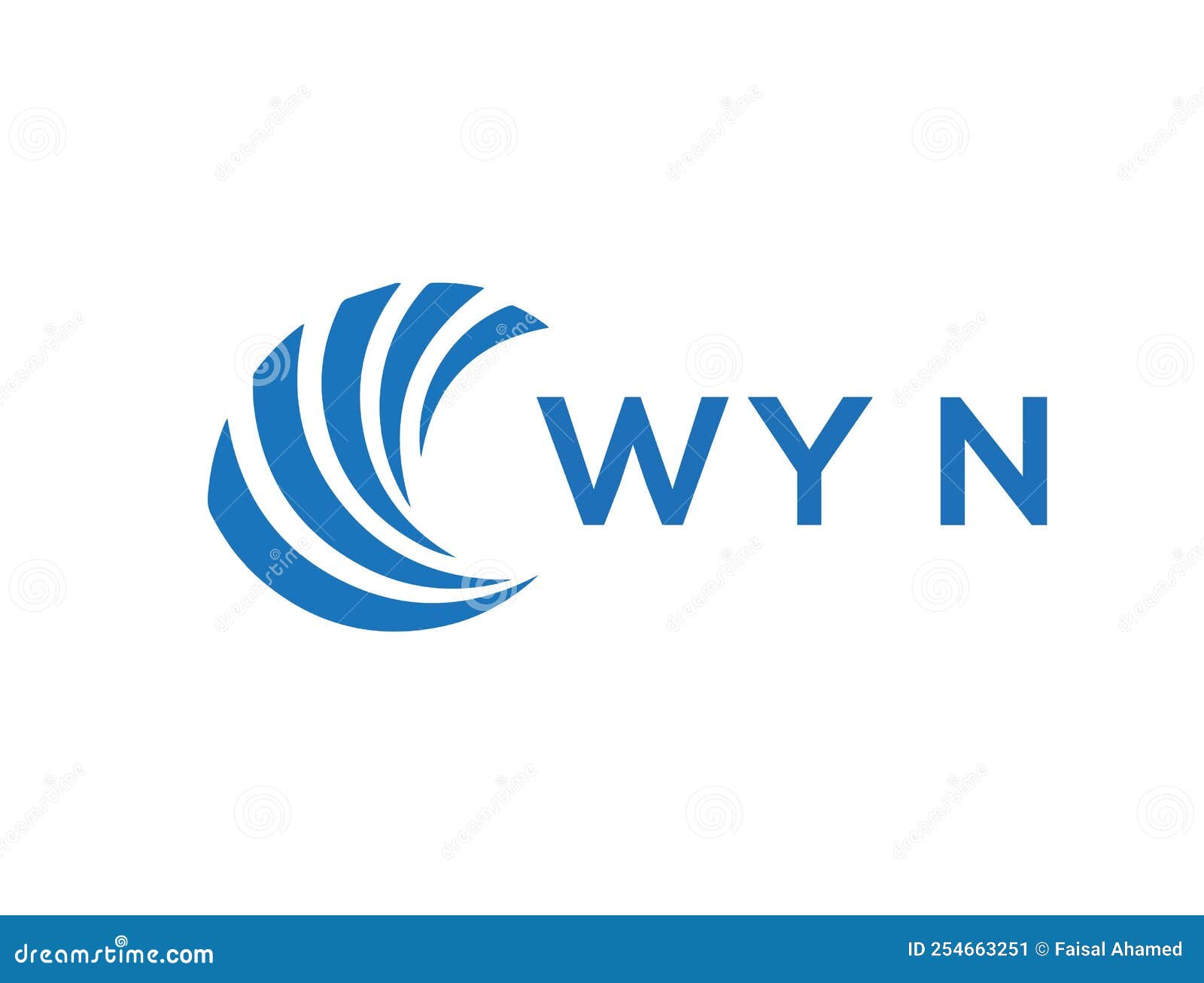 As far as we have been able to ascertain, Wyn Enterprise currently has only one primary product: Wyn Enterprise Business Intelligence. Take a look at the screen shots below. The Business Intelligence tools from Wyn Enterprise are strong in the following areas, among others:
As far as we have been able to ascertain, Wyn Enterprise currently has only one primary product: Wyn Enterprise Business Intelligence. Take a look at the screen shots below. The Business Intelligence tools from Wyn Enterprise are strong in the following areas, among others:
- dashboards
- enterprise business intelligence
- reporting
- analytics
- embedded business intelligence
- business intelligence platform
- interactive dashboards
- self-service BI
- analysis
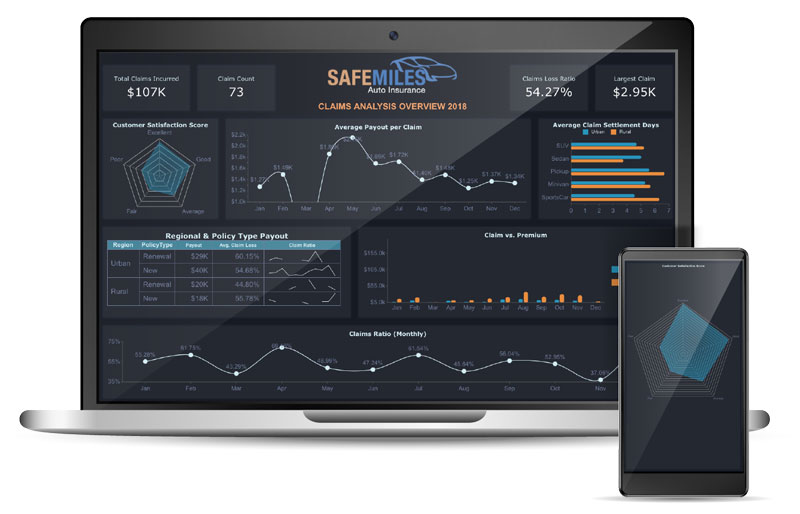 Figure 70: Wyn Enterprise Business Intelligence
Figure 70: Wyn Enterprise Business Intelligence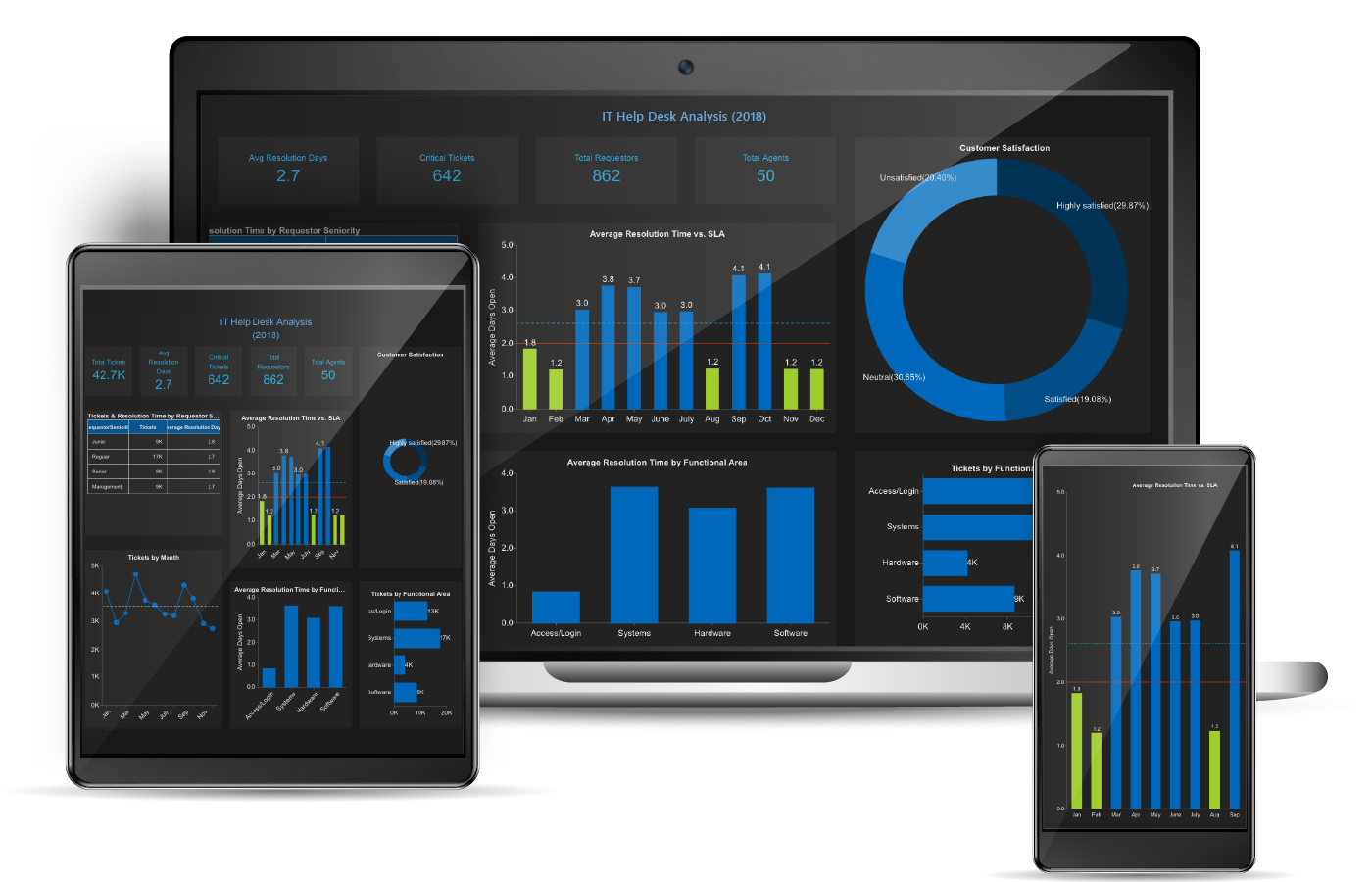 Figure 71: Wyn Enterprise Business Intelligence
Figure 71: Wyn Enterprise Business Intelligence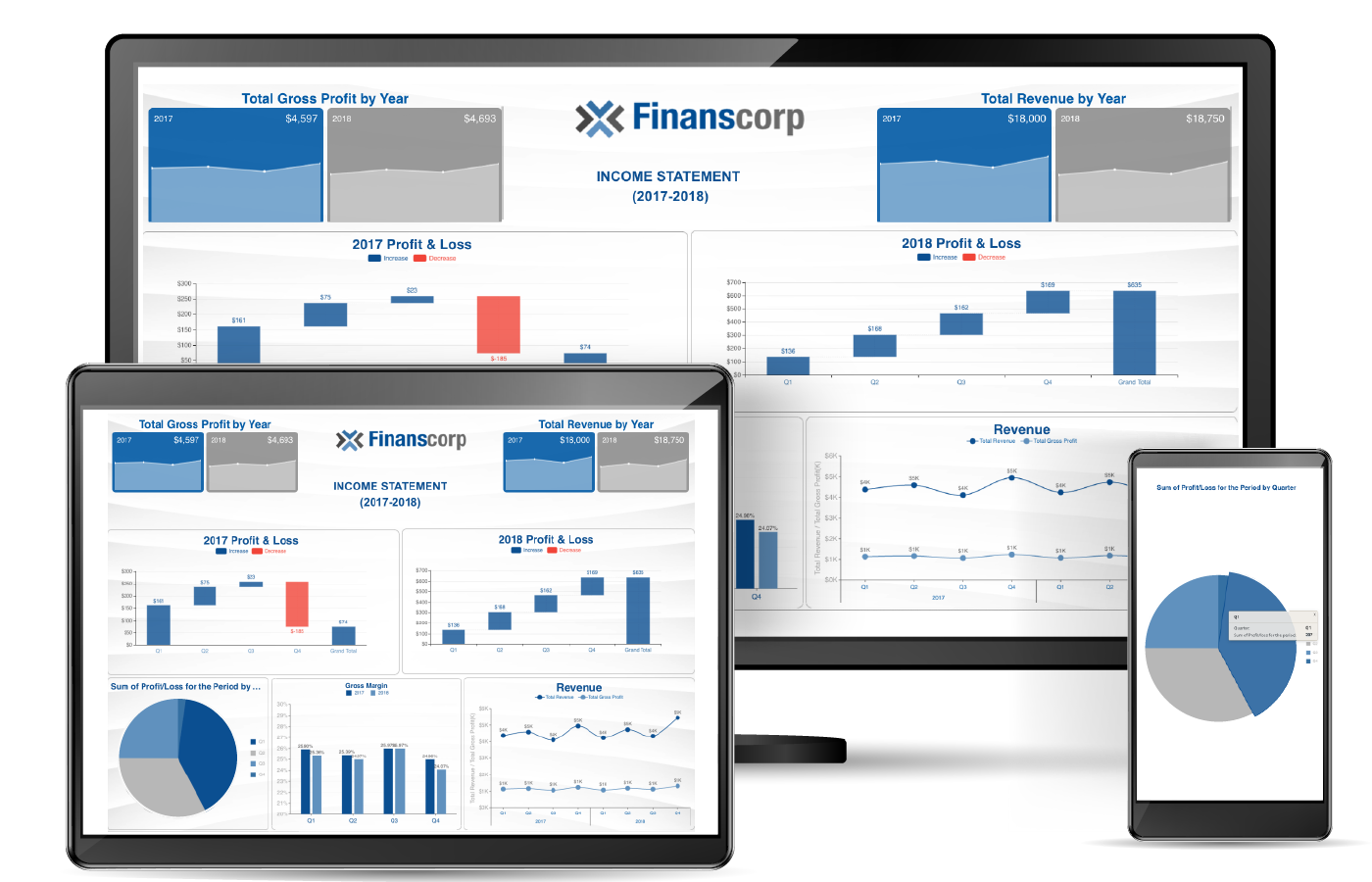 Figure 72: Wyn Enterprise Business Intelligence
Figure 72: Wyn Enterprise Business Intelligence25. Yellowfin
 The most well-known products in the area of BI & Analytics of the company Yellowfin are Yellowfin Signals, Yellowfin Suite, Yellowfin Dashboards, Yellowfin SAML Bridge and Yellowfin Mobile BI. We analyzed and evaluated these BI & Analytics products in depth and meticulously. The Business Intelligence tools from Yellowfin can be characterized by good support on the following topics:
The most well-known products in the area of BI & Analytics of the company Yellowfin are Yellowfin Signals, Yellowfin Suite, Yellowfin Dashboards, Yellowfin SAML Bridge and Yellowfin Mobile BI. We analyzed and evaluated these BI & Analytics products in depth and meticulously. The Business Intelligence tools from Yellowfin can be characterized by good support on the following topics:
- analytics
- dashboards
- business intelligence
- data preparation
- analysis
- data discovery
- reporting
- data science
- advanced analytics
- data storytelling
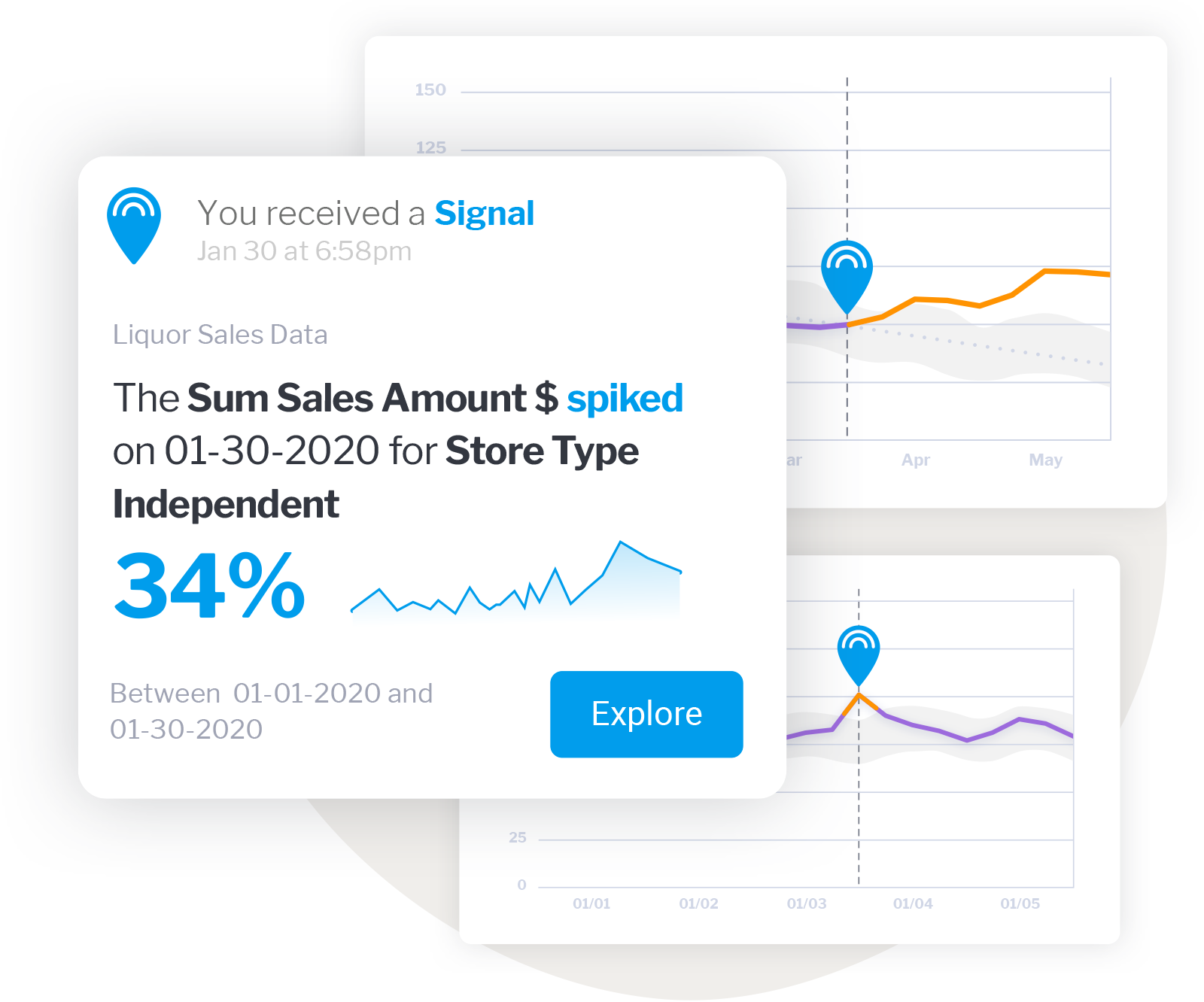 Figure 73: Yellowfin Signals
Figure 73: Yellowfin Signals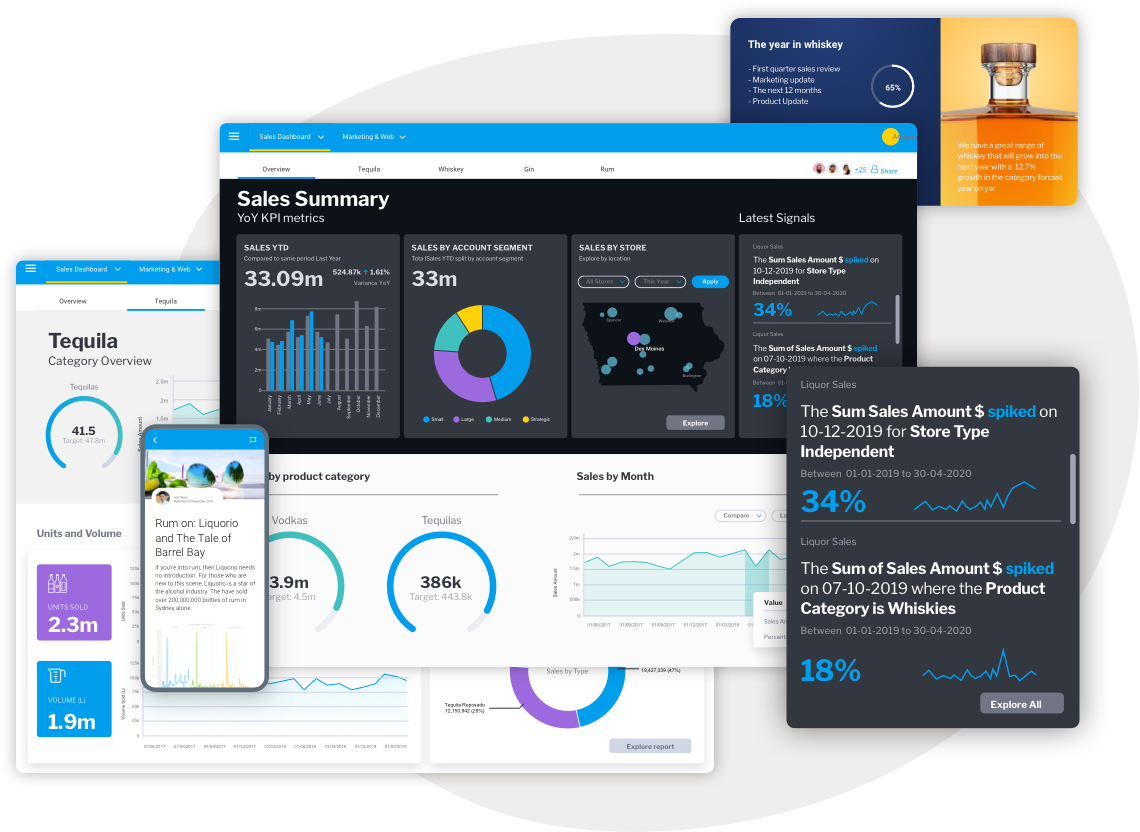 Figure 74: Yellowfin Suite
Figure 74: Yellowfin Suite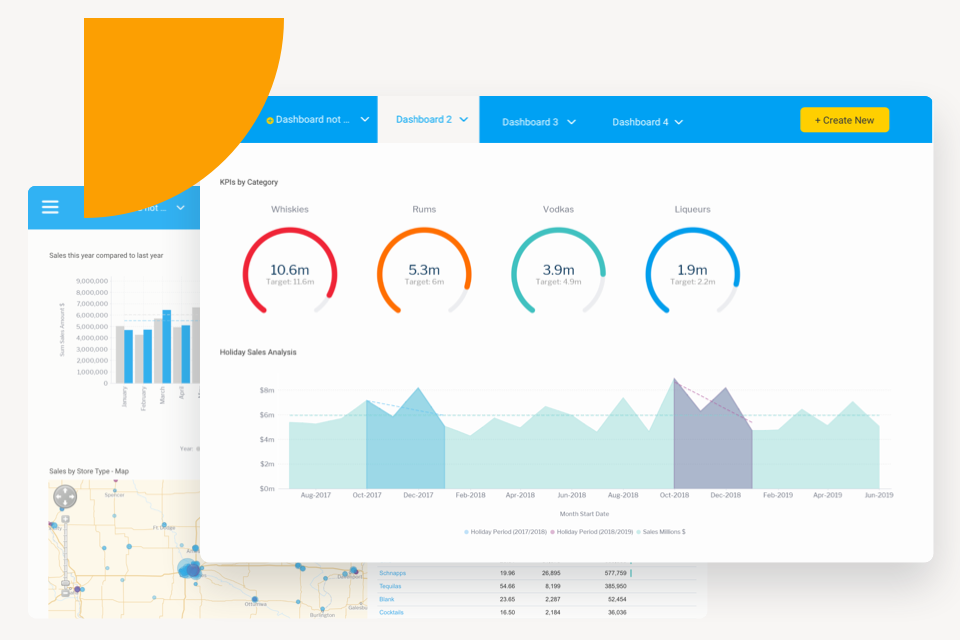 Figure 75: Yellowfin Dashboards
Figure 75: Yellowfin Dashboards26. Zoho BI & Analytics
 The most well-known products in the area of BI & Analytics of the company Zoho are Zia, Zoho Databridge, Zoho DataPrep and Zoho Analytics Server. We analyzed and evaluated these BI & Analytics products in depth and meticulously. The Business Intelligence tools from Zoho can be characterized by good support on the following topics:
The most well-known products in the area of BI & Analytics of the company Zoho are Zia, Zoho Databridge, Zoho DataPrep and Zoho Analytics Server. We analyzed and evaluated these BI & Analytics products in depth and meticulously. The Business Intelligence tools from Zoho can be characterized by good support on the following topics:
- analytics
- data preparation
- dashboards
- CRM
- SQL
- self-service data preparation
- business intelligence
- analysis
- pivot tables
- reporting
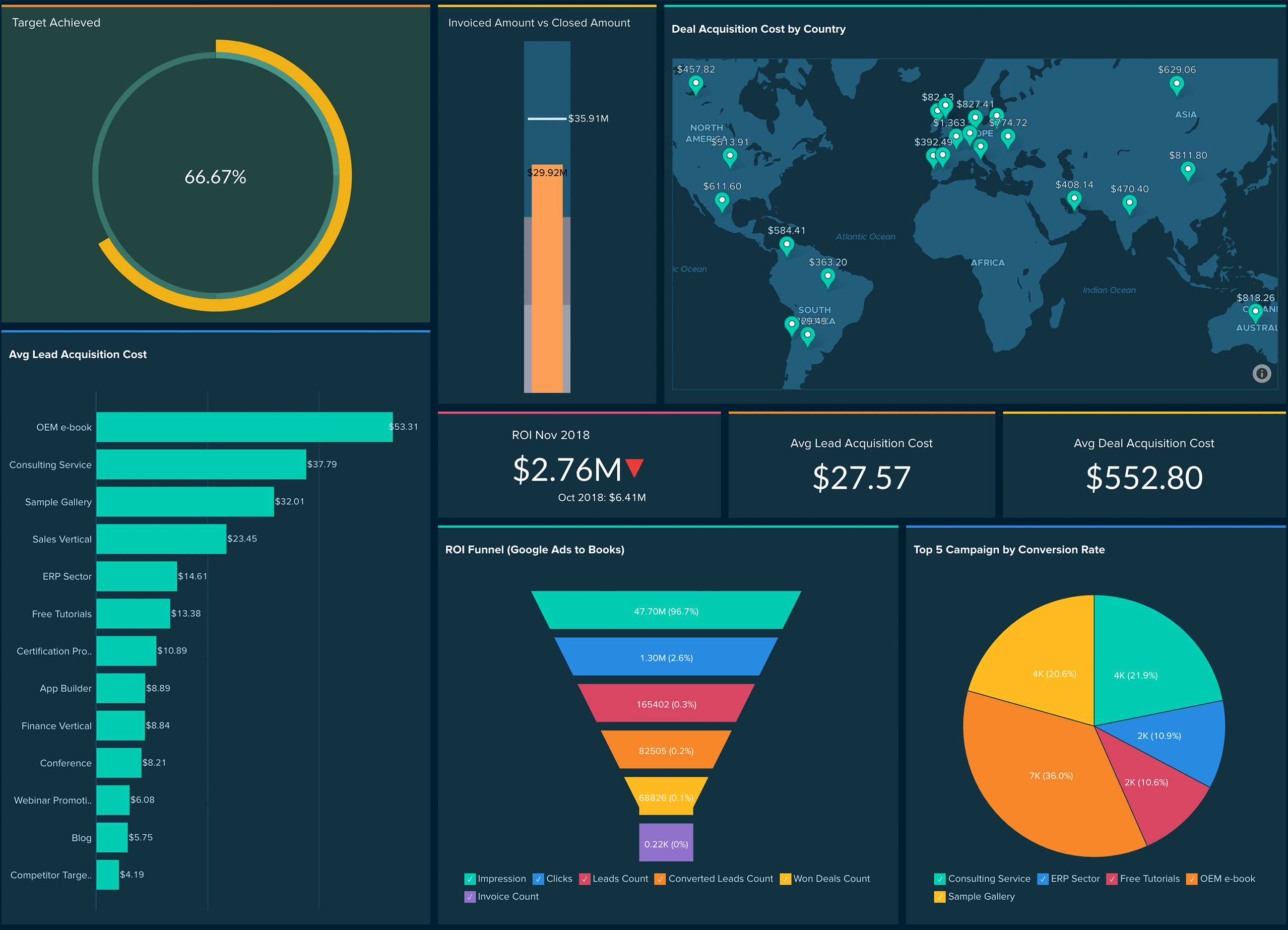 Figure 76: Zoho Analytics
Figure 76: Zoho Analytics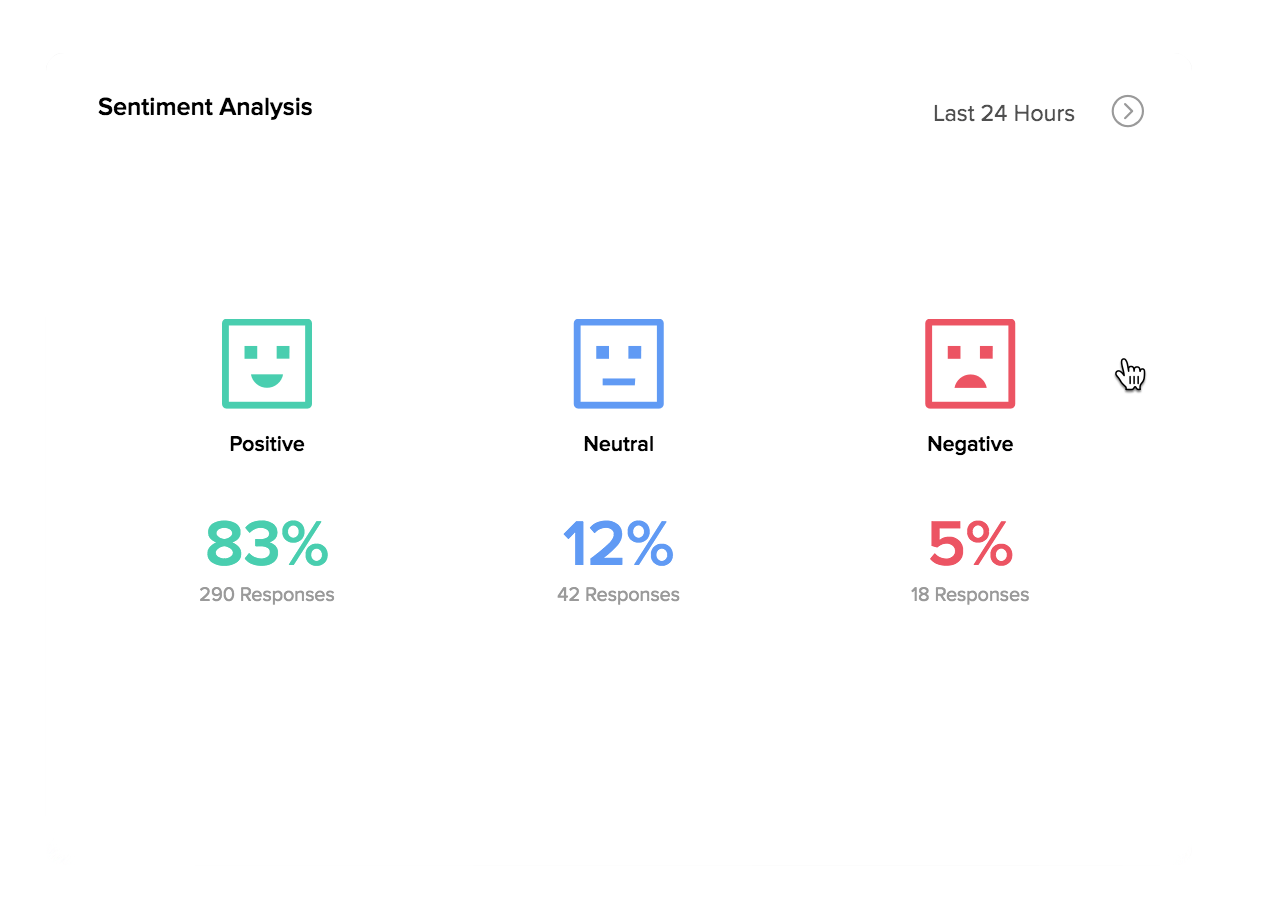 Figure 77: Zia
Figure 77: Zia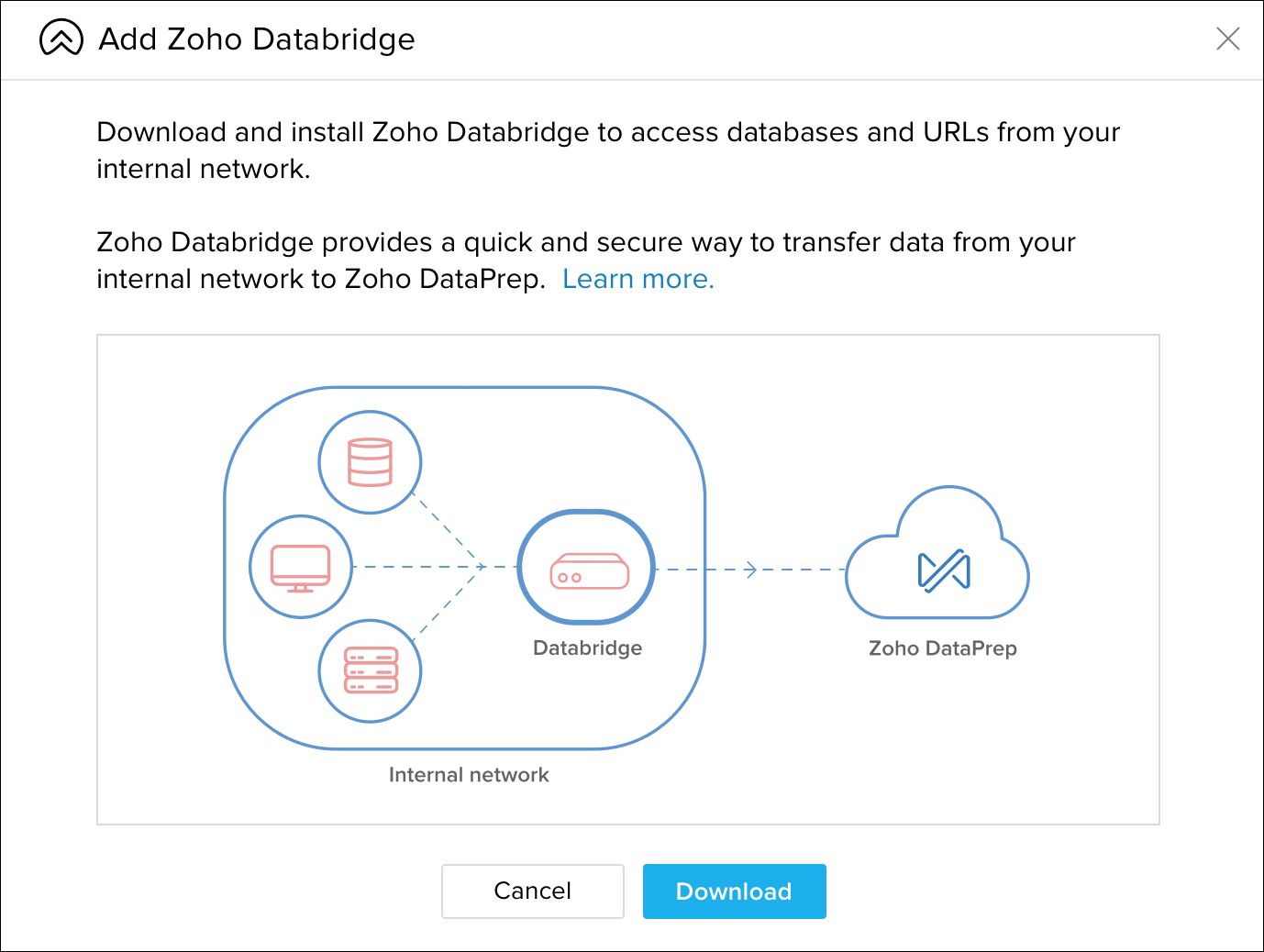 Figure 78: Zoho Databridge
Figure 78: Zoho Databridge
What can you expect from Business Intelligence tools?
Business intelligence tools provide organizations with reliable management information and refined insights to improve decision-making and collaboration. These tools provide the means for efficient reporting, in-depth analysis of (large amounts of) data, statistics, analysis and dashboards of the relevant KPIs.
The 7 benefits of Business Intelligence tools:
- Provides clear insight into all your business data, external data and big data analytics
- Ensures clear visualization and availability of management information
- Provides insight into how processes run or go wrong
- Empowers users to improve their business processes
- When used, improves the overall performance of the organization
- Offers perfect support for performance management/decision making
- Easy monitoring and clear reporting thanks to intelligent dashboards
Wide range of tools for Business Analytics
In the Netherlands alone, there are more than 20 different BI tools available. They were once developed by mega brands such as Microsoft, Cognos or SAP Business Objects. In addition, there are numerous smaller software developers worldwide who have also built very good business intelligence tools that are suitable for specific industries or different types of BI applications. Not for nothing is the adage: “different tools for different purposes”. Think of parties like Qlik or Tableau Software. Despite the wide choice, finding and selecting the right Business Intelligence tool is often a laborious task. It is quite a job.
BI & Analytics Guide™ 2024 If you need help choosing the right BI or data science tool for you, the BI & Analytics Guide can help you to quickly arrive at a shortlist and make a final selection. Our BI & Analytics Guide gives you many comparison functionalities. See which vendor excels in which area and compare vendors in just a few clicks.
If you need help choosing the right BI or data science tool for you, the BI & Analytics Guide can help you to quickly arrive at a shortlist and make a final selection. Our BI & Analytics Guide gives you many comparison functionalities. See which vendor excels in which area and compare vendors in just a few clicks.
Excel is known as “the most abused BI tool.”
Selecting the wrong tool can have considerable impact on your organization. Companies that are not successful often have a problem with their information infrastructure. The BI tools they are using are not efficiently extracting the desired management information. Excel is the most obvious example and is not known as the most abused BI tool for nothing.
How do you make a good choice that fits your organization?
- Define the most important BI tool selection criteria: IT needs and user requirements.
- With this list you contact the vendors for the answers (RFI)
- Analyze all data from the different Business Intelligence vendors
- Start a proof of concept and choose the solution that best fits your requirements
You can skip steps 1 through 3 completely when you purchase our independent BI research. We take care of all the difficult and time consuming preliminary work. You save a lot of valuable time.
Let us help you with your BI tool choice
We know from experience that selecting the right software is a labor-intensive process. We have been helping organizations through this process for more than 15 years, including our powerful assessment tool: the Business Intelligence & Analytics Guide and independent BI consulting.
The 250+ functionalities of Business Intelligence software
Business Intelligence tools come in many different shapes and flavors. Some have excellent reporting functionality and others are great for dashboarding. Others run only on the Windows platform. In our research we compare all these tools on 250+ criteria that are important for achieving the best results with business analytics. So then you don’t need to do this research.
BI tools linked to the decision making process
The Business Intelligence architecture will not be able to produce good results if we cannot link tools to it. This blog provides an overview of the most important Business Intelligence tools (BI Tools) in relation to the decision-making cycle. It also describes the purposes, the features and the workings of these tools.
The decision making process
Each Business Intelligence tool plays a supporting role in one or more phases of the decision-making cycle. The decision-making cycle comprises of the following phases, which can be supported by the following tools (see figure below):
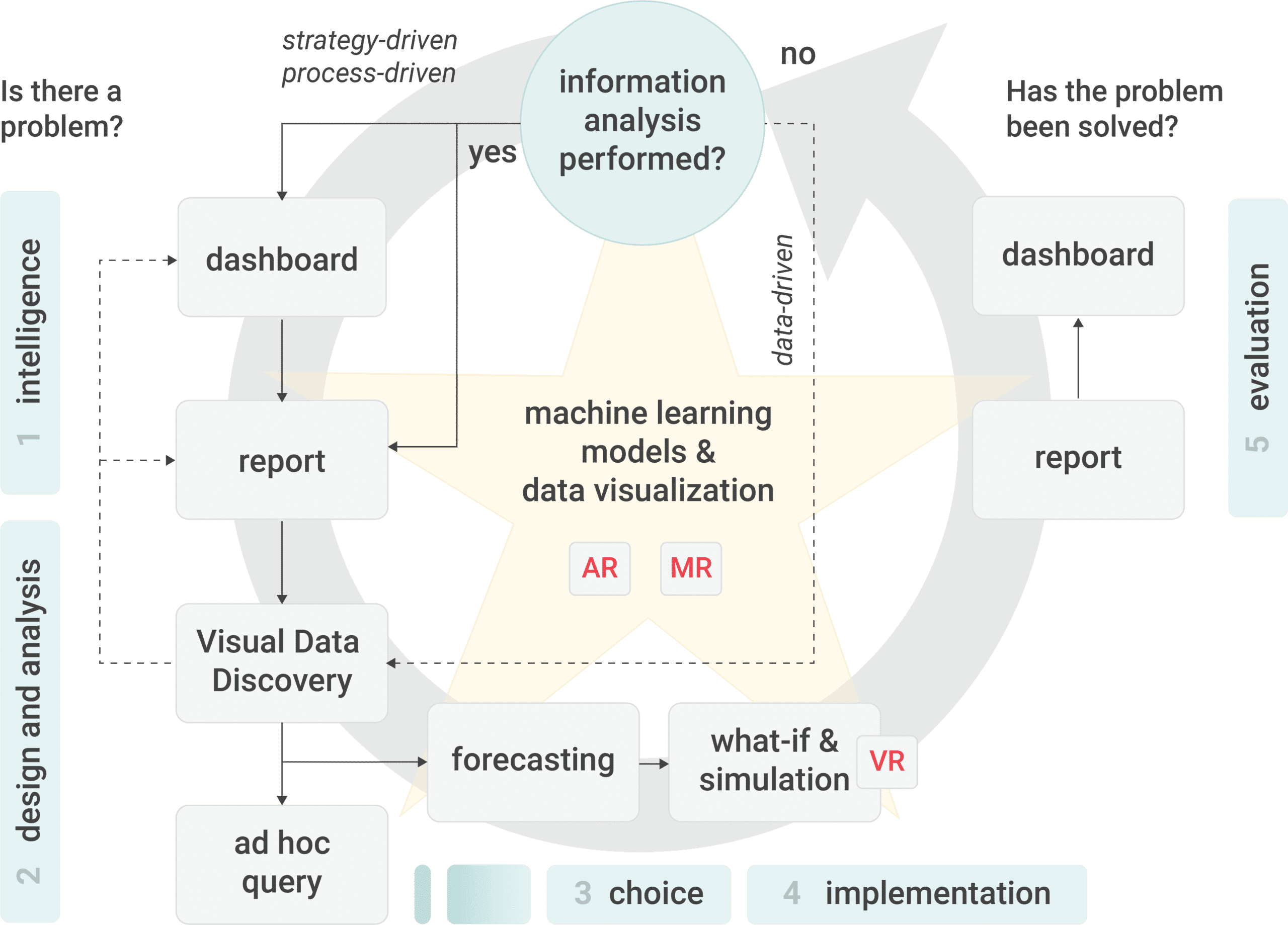
Figure 1: Phases in the decision-making process
1. Collecting information using dashboards and reports
The decision-making cycle starts with gathering the right information: ‘scanning’ the environment (or the internal organization) in order to see if a problem exists. Mainly dashboards and reports are used for this purpose. This first phase should be seen as a ‘wake-up’ moment during which any current or potential deviation from the desired situation is a decision problem. In order to qualify or trace something as a problem, the first phase should – in principle – include (or be preceded by) a process in which we identify our organizational objectives.
2. Designing and analyzing using interactive analysis and data mining
Once a problem is discovered, we know where the issue resides but we do not yet know its exact location or its whys and wherefores. For example: the customer satisfaction indicator on the dashboard flashes. Subsequently, we will want to find out what causes this. We may, for example, use interactive analysis ‘on-the-fly’ to split out customer satisfaction per region, per account manager and, if necessary, per product group.
3. Selecting and implementing using ad hoc query, what-if and forecasting
Once we have established the cause of a problem and we have mapped the (causal) relationships, we can take action – in consultation with managers and stakeholders. Ad hoc query (‘ad hoc’ querying of data sets) can support this. We may for example use ad hoc query to create a detailed set of customers who did not place any orders in the last month, based on the results of the interactive analysis. Subsequently, we can write a letter to the selected customers in which we emphasize the benefits of doing business with us and include some interesting offers. We use ‘what-if’ and forecasting in order to calculate actions in advance. In this way, we gain insight into the impact of our actions before we actually implement them.
4. Evaluating using dashboards and reports
Once we addressed a certain problem by taking action, we use either a dashboard or reports in order to assess whether the problem has indeed been resolved. It may be that the problem reflects a key success factor of the organization, which we did not know about yet. If this is the case, we can place the key success factor – including the associated KPI – on the dashboard or in the report to permanently evaluate it. In this way, it becomes an integral part of the organization’s management model.
Separate components that are hardly related
Relatively many organizations still appear to regard the above-mentioned tools as separate components that are hardly related. For Business Intelligence to be effective, it is however, of the utmost importance that the tools can work together very closely, creating a solid and smoothly operating entity. Users should ideally be able to both use and apply the tools more or less unwittingly in their daily activities. Metadata, web technology and a proper architecture play an important role in achieving this.
Increase the coherence between the BI tools
Additionally, the suppliers of BI tools undertake actions – based on the integral needs expressed by users – to increase the coherence between different tools. Portals are a typical example of this development. However, we cannot start celebrating yet: practice shows that when it comes to integration of different tools within the portal, there is still a lot to be desired. Unfortunately, it also still happens that certain functionalities are present in the desktop version , but have not yet been implemented in the web version.
Need help choosing the right business intelligence tool?
If you need help in the process of selecting the right Business Analytics tool for your company, please feel free to contact us for an appointment or more information.
About Passionned Group
 Passionned Group is the specialist in designing and implementing Business Intelligence tools and Data Science. Our passionate BI consultants help large and small organizations transform into an intelligent organization. Every other year we organize the Dutch BI & Data Science Award©, the election of the smartest organization in the Netherlands.
Passionned Group is the specialist in designing and implementing Business Intelligence tools and Data Science. Our passionate BI consultants help large and small organizations transform into an intelligent organization. Every other year we organize the Dutch BI & Data Science Award©, the election of the smartest organization in the Netherlands. 















